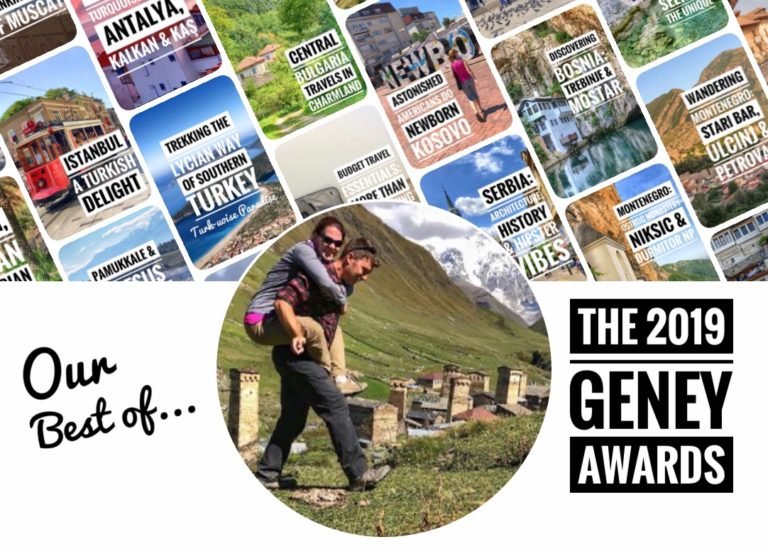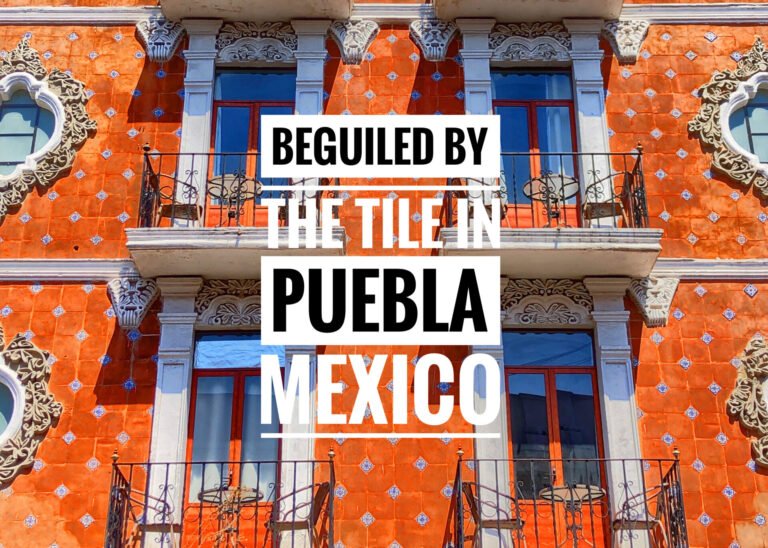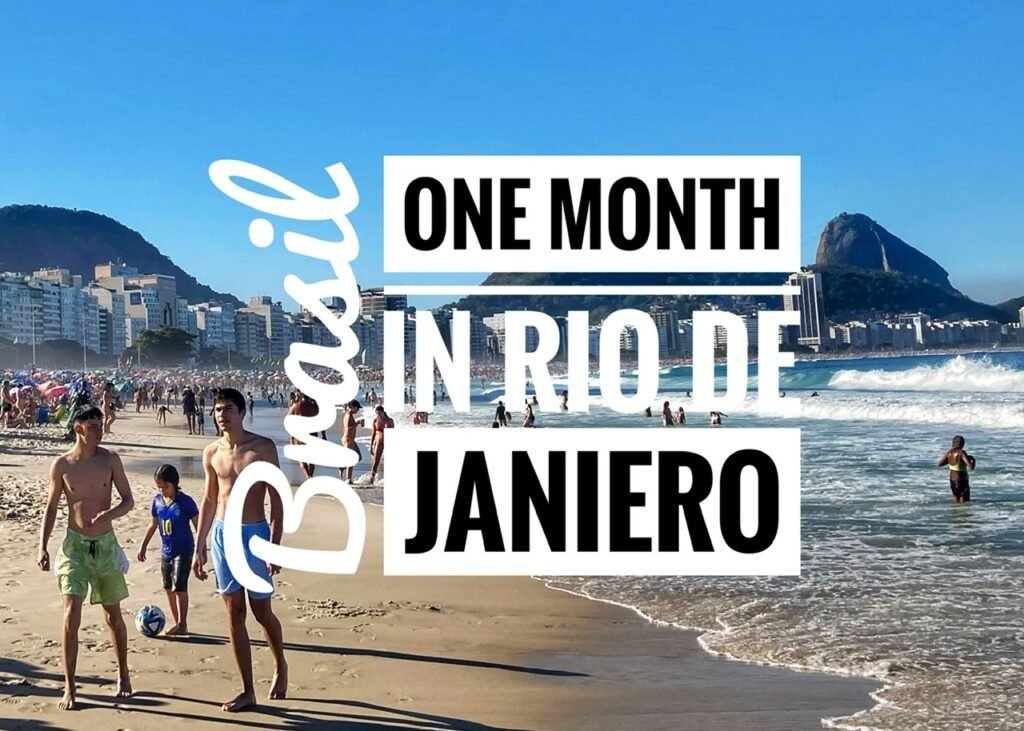
Getting There
After two weeks, we were a bit knackered of being Clammy in the Ammy ™️ So, we were off to seek more pleasant skies in the form of winter in Southern Brazil for the seven weeks. Our 4.5 hour total flight to get there took us through the capital city of Brasília for a night. Rather than sleep in the airport for 13 hours we stayed nearby in a home with Felipe and his charming ragdoll cats, who made us a full and delicious breakfast after a good night’s sleep. (Felipe, not the cats.) We found it on Agoda for $27. We were trying to get our stays up on Agoda so we achieve similar benefits to Booking, plus we get more money back on our Capital One venture card.
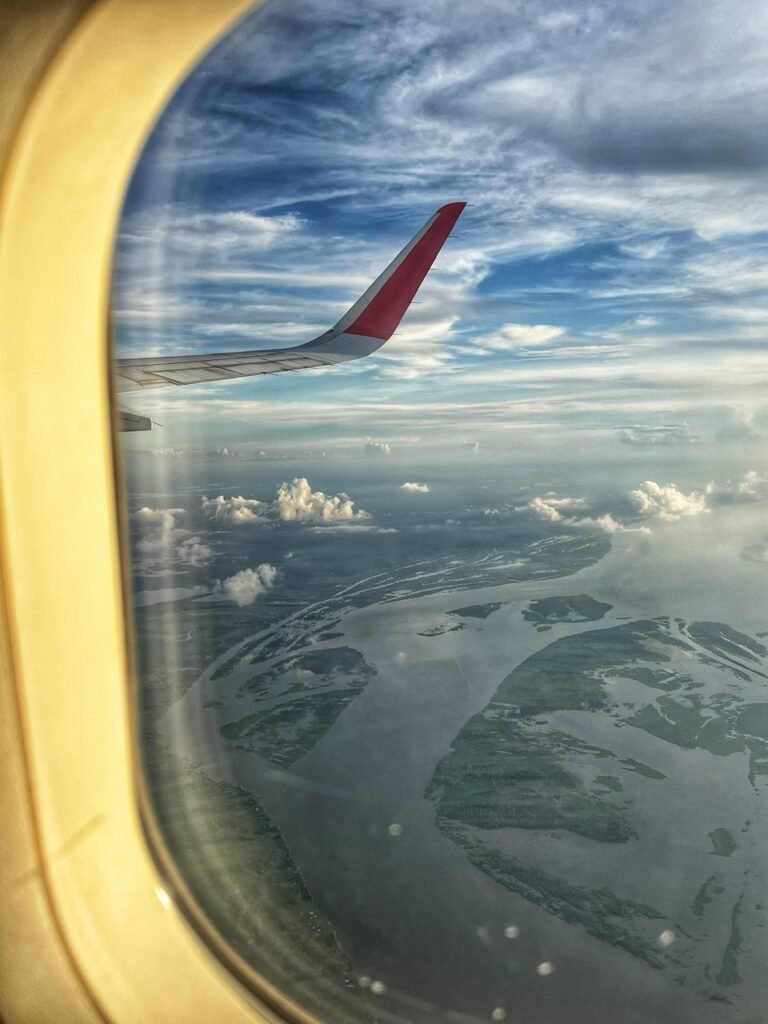
Adeus Amazon and all you squeeters down there!! Brazil is big. You don’t realize how big until you cross it from north to south jumping 23 latitudinal degrees from the equator to the Tropic of Capricorn. It marks the most southerly latitude at which the sun can appear directly overhead at noon and relatively comparable to the Tropic of Cancer which runs through Northern Mexico.
In other news, they don’t give a crap about liquids (or shoes) on planes in Brazil. We pranced through security with a full bottle of water and over 4 Oz of bug repellent. They must realize that real crimes are more important to address in their country than a scantily overweight sunscreen bottle and malicious pair of sneakers. It’s such a relief.

When we landed in Brasília at 9 pm, we were overjoyed to see the extreme organization of their Taxi apps pick-up area. Uber even sent us to a particularly marked stall which is oh so rare…at least in the places we travel! Unfortunately, there was very high demand and the 10-minute ride cost double…over $8, but we were ready to get to our place.
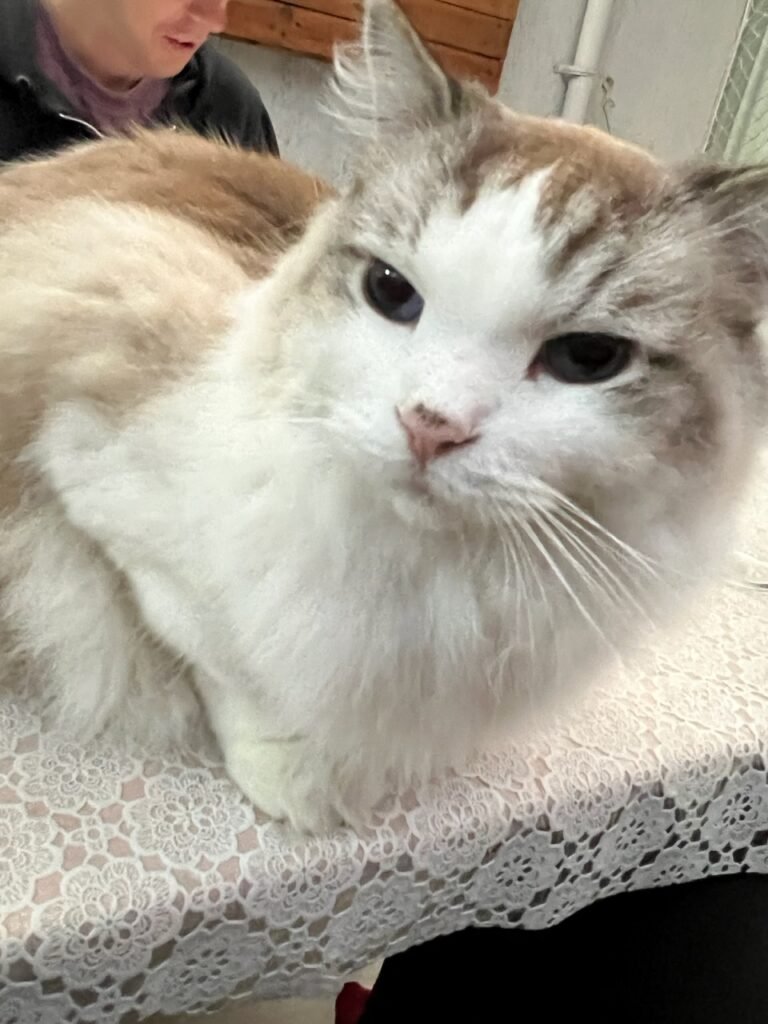

Our ragdoll friend, Tuchi, for the night who tried to crawl right in bed with us 😻 Felipe, who fortunately spoke a little English, was up bright and chipper to slap on his apron and create our breakfast.
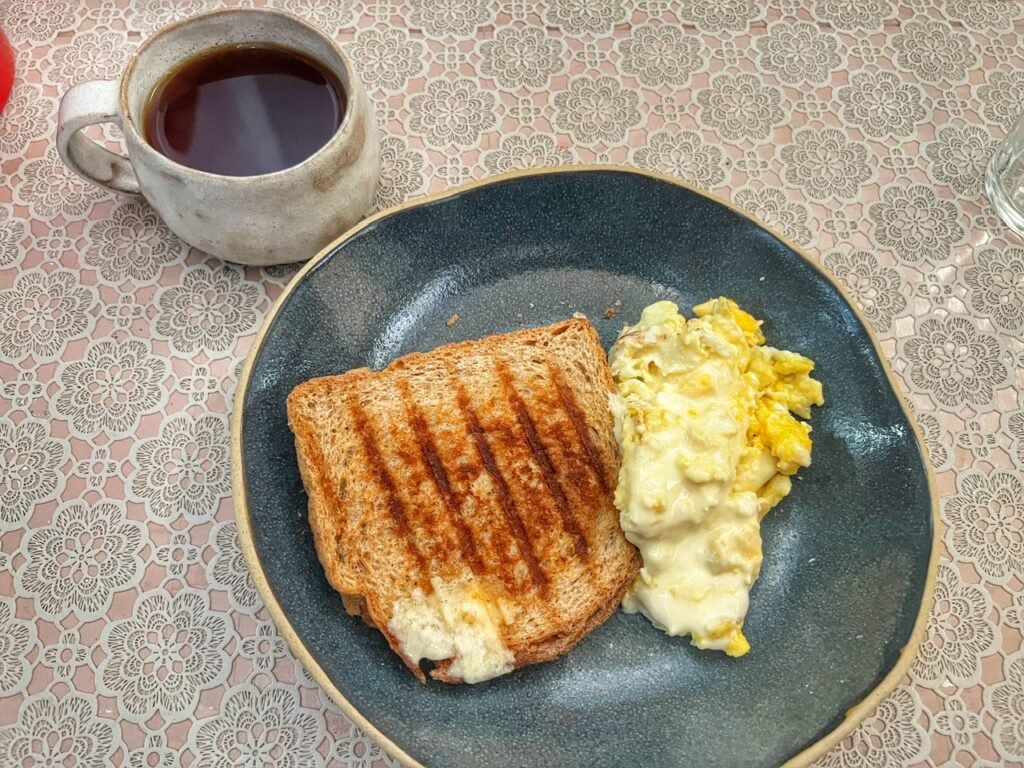
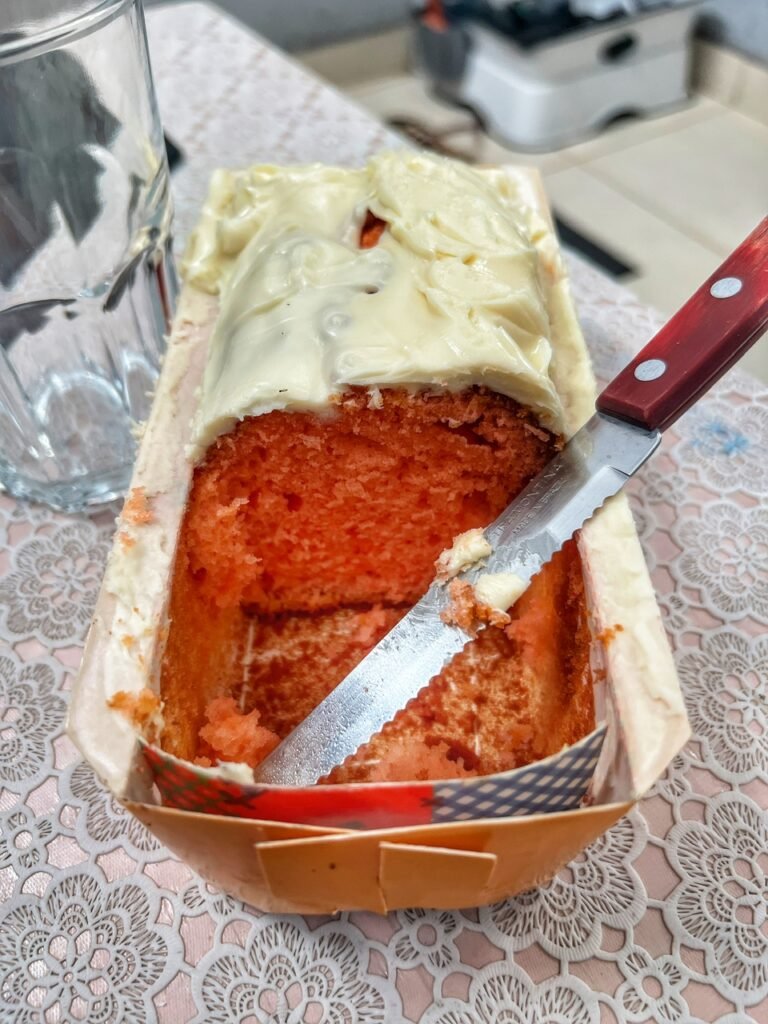
We were more than happy with the cheese sandwich and eggs…and then he one-upped himself with pumpkin cake and fruit on top of that.
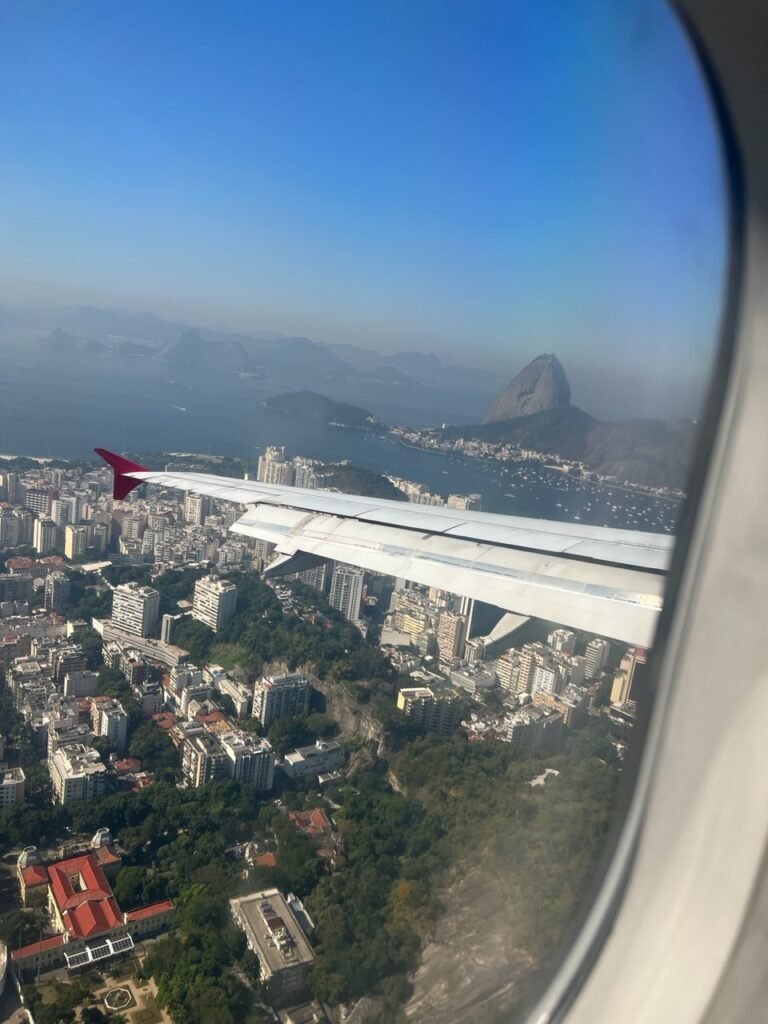
Flying into this city is quite a sight. And apparently, we did it right by choosing to fly from another domestic airport. This allows you to fly into the airport right next to Sugarloaf Mountain which provides the maximum dramatic entrance.
Our Accommodation
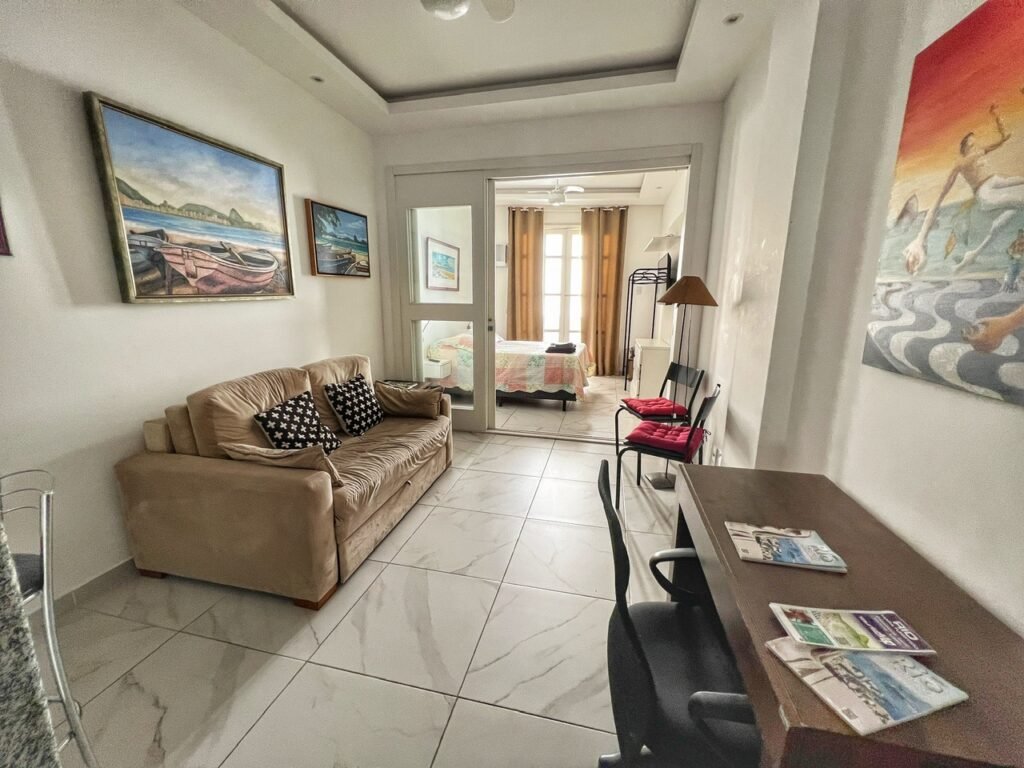
When we arrived, we settled into into our eleventh floor one-bedroom Airbnb apartment in the heart of world famous Copacabana Beach. Although we didn’t have a view of the ocean, it was only a two-block walk and we got a steal of a deal at $681 for the month.

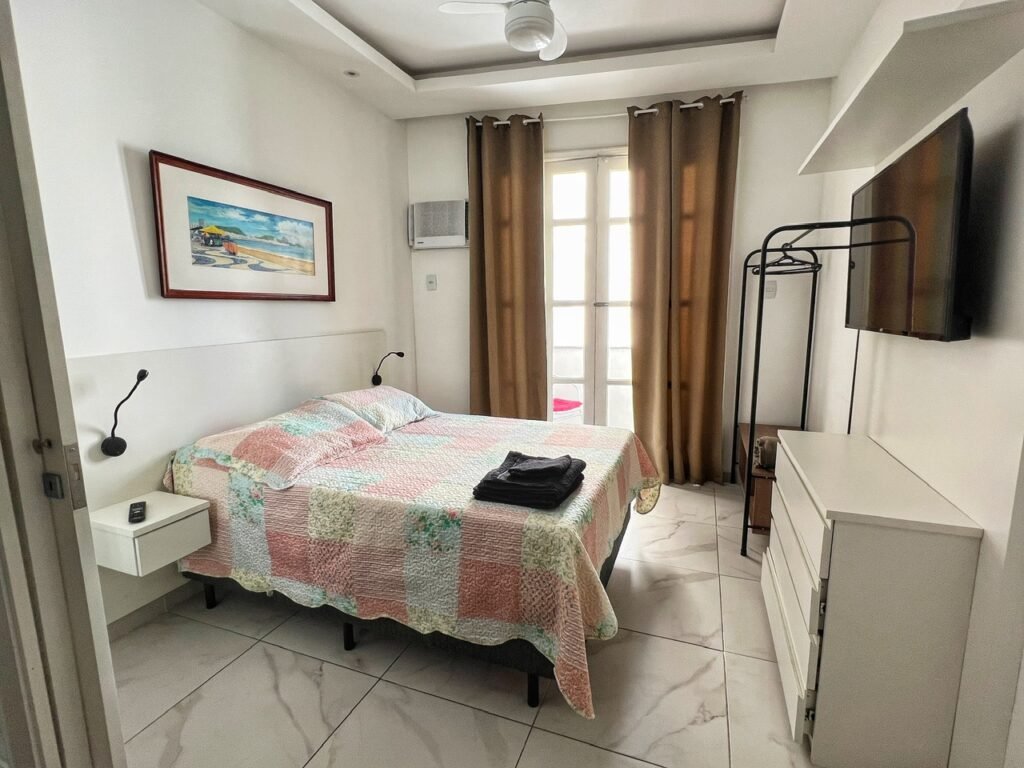
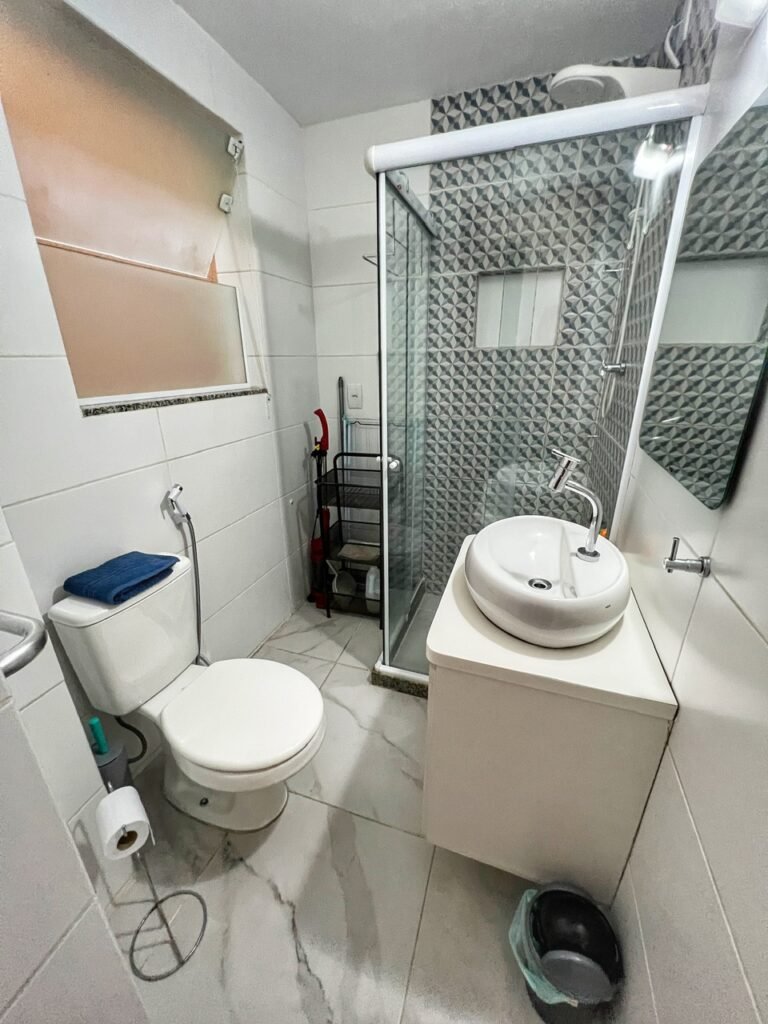
It had a comfortable couch, water filter, and loads of natural light.

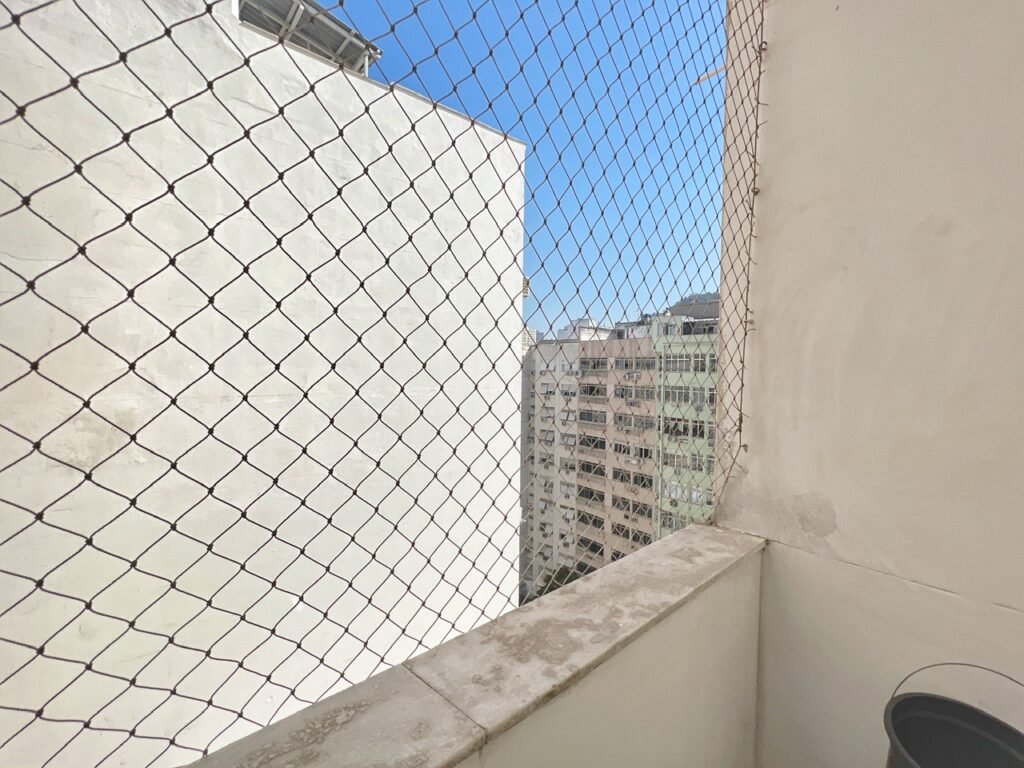
Our teeny caged balcony was just big enough to dry our clothes and get some fresh air, which was good considering we hand-washed our clothes all month. (Getting laundry done was a bit cost-prohibitive at $10/load.
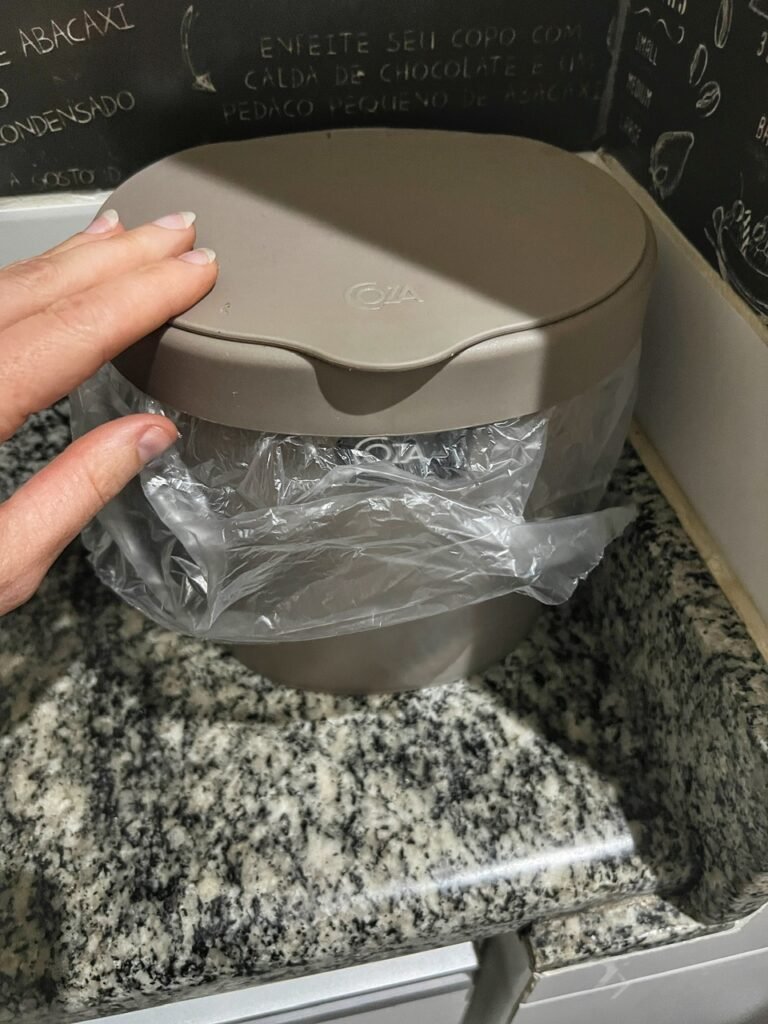
It also had the teeniest kitchen trash can we’d ever laid eyes on. Errr…maybe this was meant for compost? Evidently not.
Life in Copacabana Beach

After the first order of business (introducing ourselves to the god-awful 1978 Barry Manilow video, which has nothing to do with this beach), it was time to start exploring our new neighborhood, including the beach itself with Sugar Loaf Mountain towering in the background.


You couldn’t have a more idyllic city beach…white powdery sand, cheap chairs/umbrellas to rent for about $4/day and chiseled bodies and eye candy galore! It was bizarre when we left not to see people (of ALL ages!) walking around wearing speedos and floss up their behinds. Seriously. Take some clothes off!!! Mandy even eventually tried to fit in by baring her midriff.
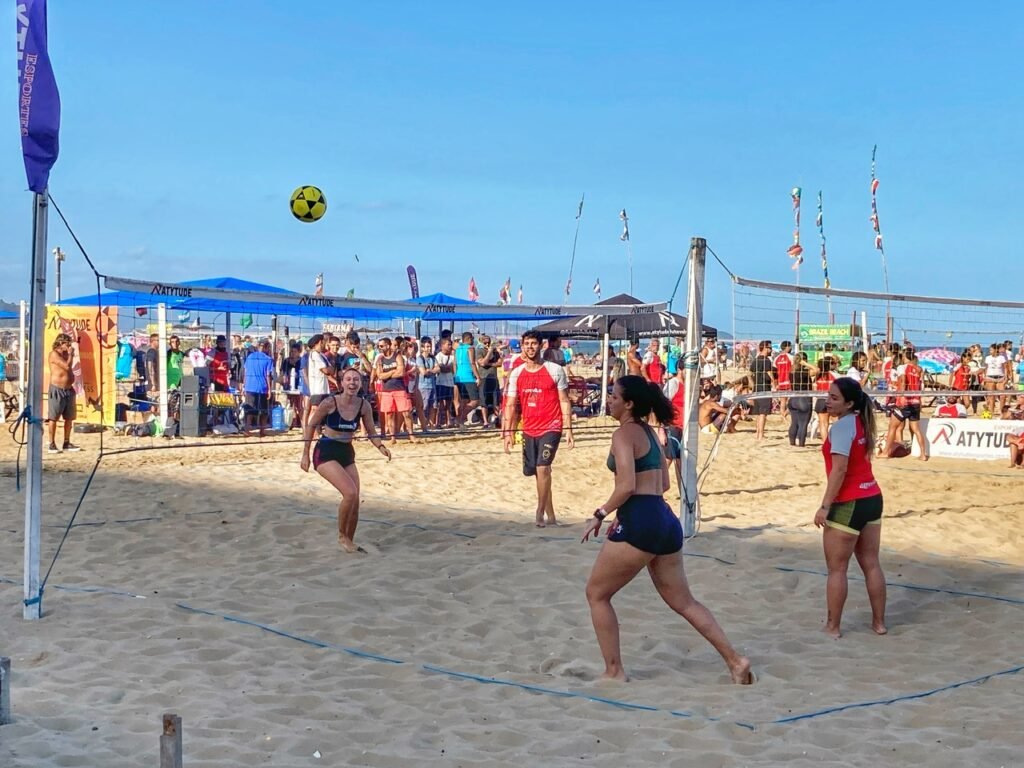

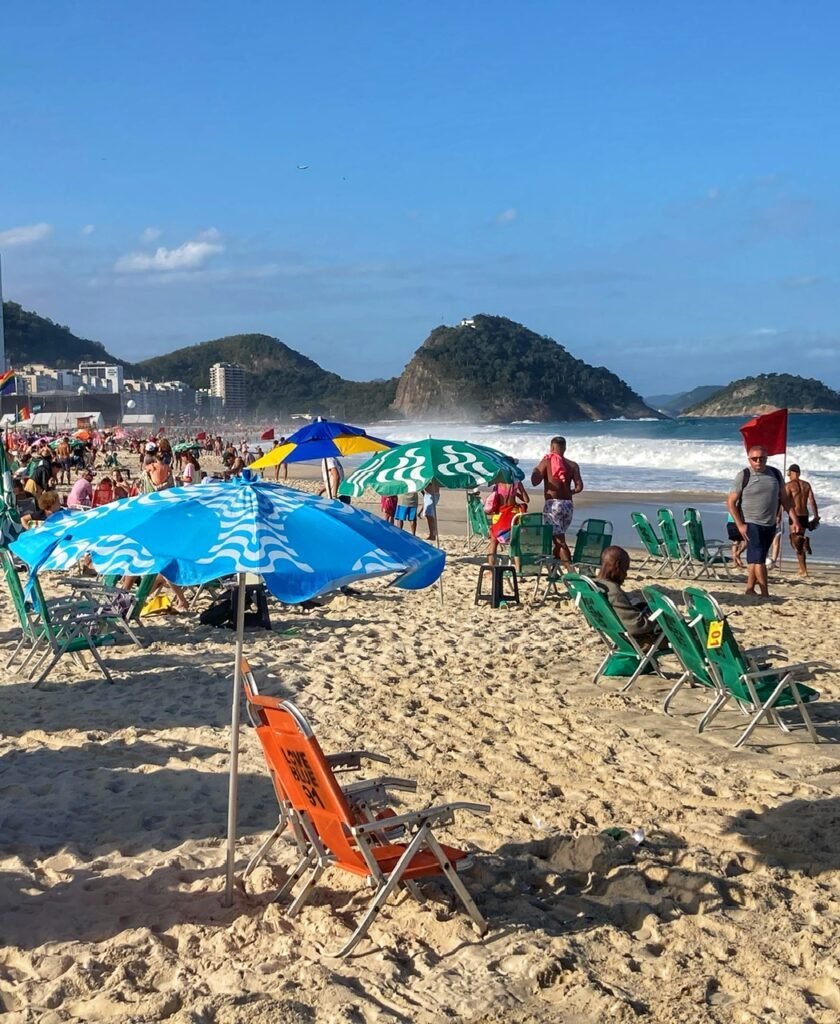
That said, soaking in the energy and people in Copacabana made staying there worth it. It was so idyllic to have it two blocks away for morning runs and evening walks. We couldn’t have come at a better time of year than July either with the weather was perfect in July…sunny and 70s F or mid-20sC with very few cloudy days.



And, although weekends were crazy busy, the weekdays were much calmer. As we started to adapt, we realized a few more people spoke more English than expected, which was helpful because the transition from Spanish to Portuguese was a bit challenging. 🤣 We heard the thing about Brazil is, despite being surrounded by Spanish, it’s a massive country where there is not a lot of “need” to learn a second language. It’s very similar to the States in that they are very Portuguese-centric, also with their own movies and entertainment industry.
Portuguese is somewhat readable if you know some Spanish, but the accents and pronunciation are completely foreign. It’s like Borat meets Italian meets a melodic monologue from a far off land. Still, as always, while there, we learned our basics and tried our best to muddle through them with the help of Google Translate.
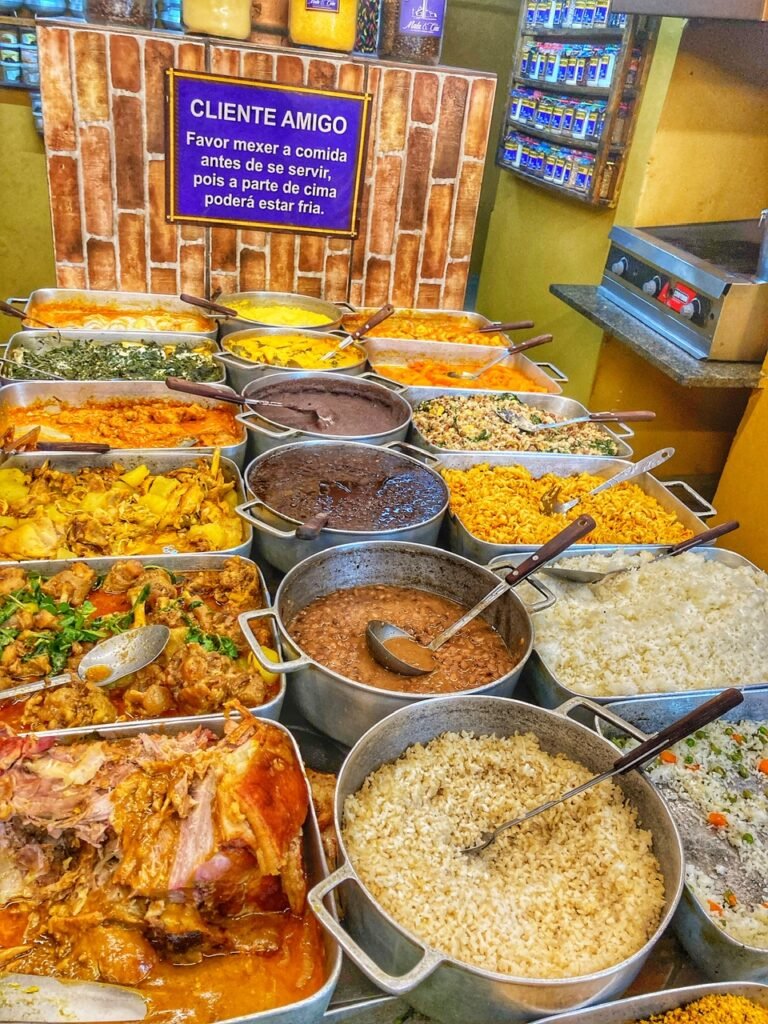
We also learned immediately that it was no Colombia or Ecuador, so we were well aware that living in Copacabana would very well test our budgeting prowess. In addition to the usual cooking at home, we were advised by a former local to try two things to try and keep our restaurant spends down…quilo bars and rodizios. Quilo (kilo) bars are restaurants where you fittingly pay by the kilo, and rodizios are when you pay a set rate for a meal and get to eat as much as you want, including all the food they stroll by your table.

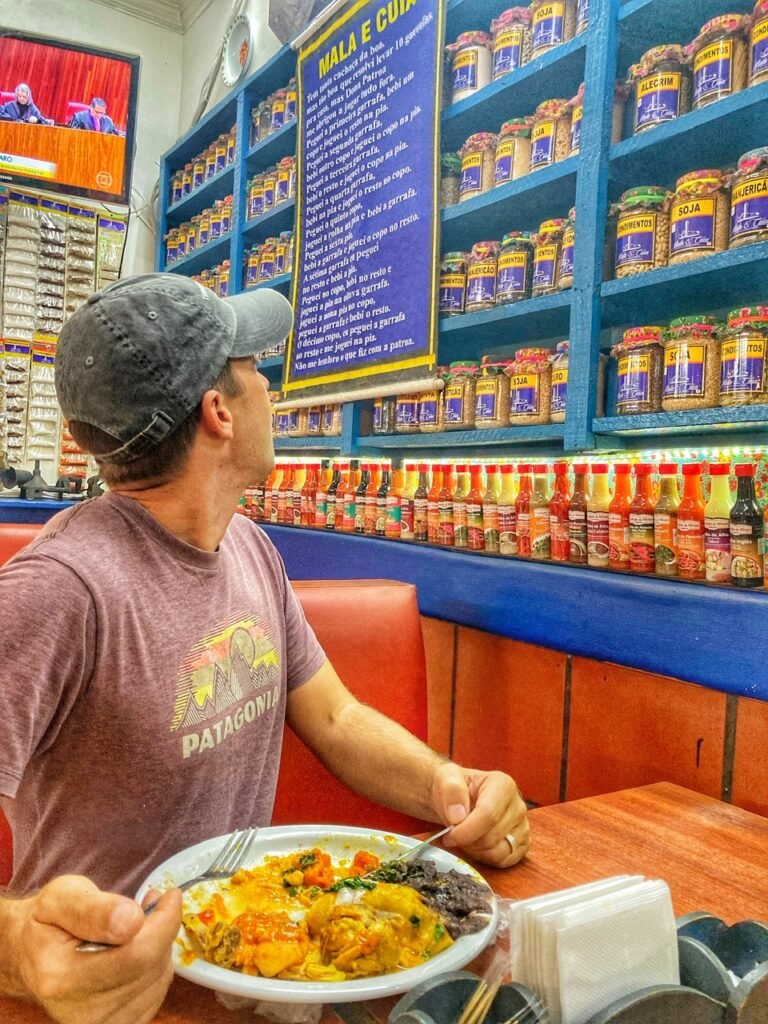
The first kilo bar we tried was near our place called “Restaurante Comida Mineira” and featured food from the nearby Minas Gerais state of Brazil. This state, which we later explored for a couple weeks, has long been known for its wealth of minerals and its mining activities, and along with that comes some quite heavy delicious comfort foods typically made in clay pots over a wood stove. They were heavy in both the gut and wallet, since you’re paying by the kilo. Our plates cost about $10/each so it wasn’t exactly a cheap eat but it was really yummy.

Since we’d fed ourselves, it was then time to go to grocery shopping. It was easy to admire the gorgeous fish at the supermarket. Man those guys really stare you down!! We settled for giant sardines which were far cheaper. We paid for this by having to pick bones out of our teeth for a week. 🤣


Holy red pepper!! This cost about $1.75. And this cantaloupe sized passion fruit was about $1.25. It wasn’t overly amazing though.
So…it was cheap compared to the US, but definitely not super cheap. Overall we found costs in Copacabana similar to Portugal. We paid $75 for about one week of starter groceries. We were also highly disappointed in both the cost and selection of fruits and vegetables in Rio while there.

That said, we need to get to try exotic caquis for the first time. They look like an orange tomato but are actually a form of persimmon. We’ve had a lot of persimmons in the past and they’ve been a bit disgusting, so we were surprised to bite in and taste a jammy, sweet and delectable little fruit. They quickly became part of our regular fruit rotation.
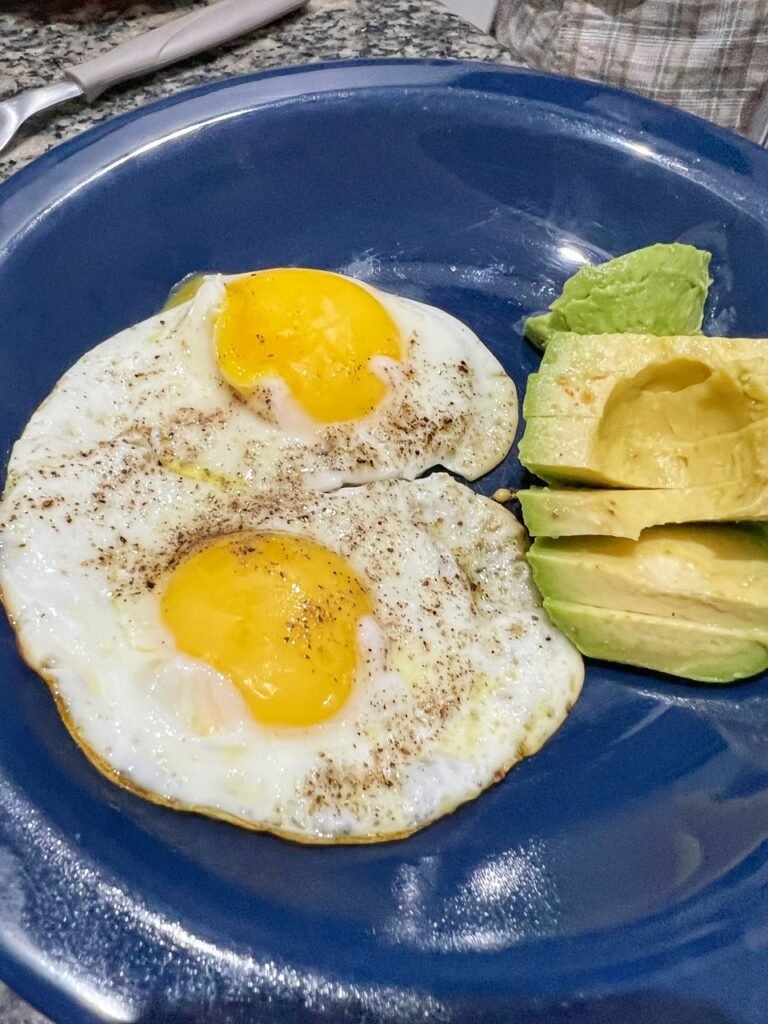
The eggs are the same pale colored eggs we get in the States…a tell tale sign of mass produced chickens. Ick. Giant avocados for about $1 though.
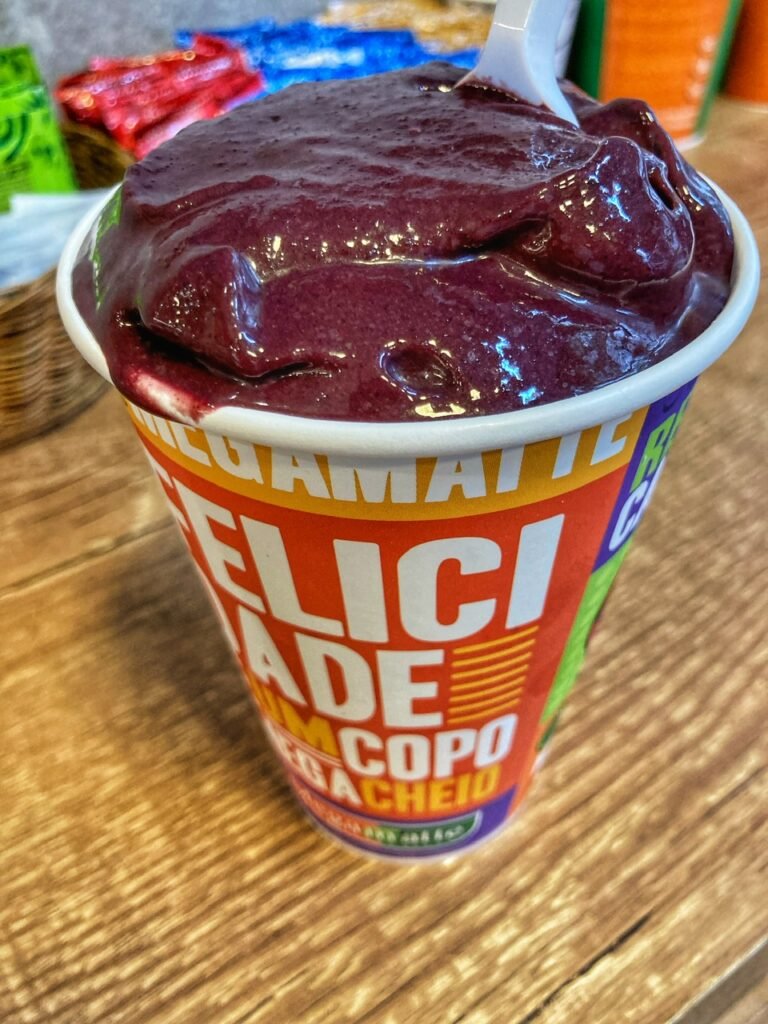
But what ultimately became our Brazilian staple was açaí. In the beginning, we didn’t know better and a large creamy acai smoothie for two set us back about $4, but later we found them for about $2.75. This is good because we REALLY love them.
Ipanema Beach
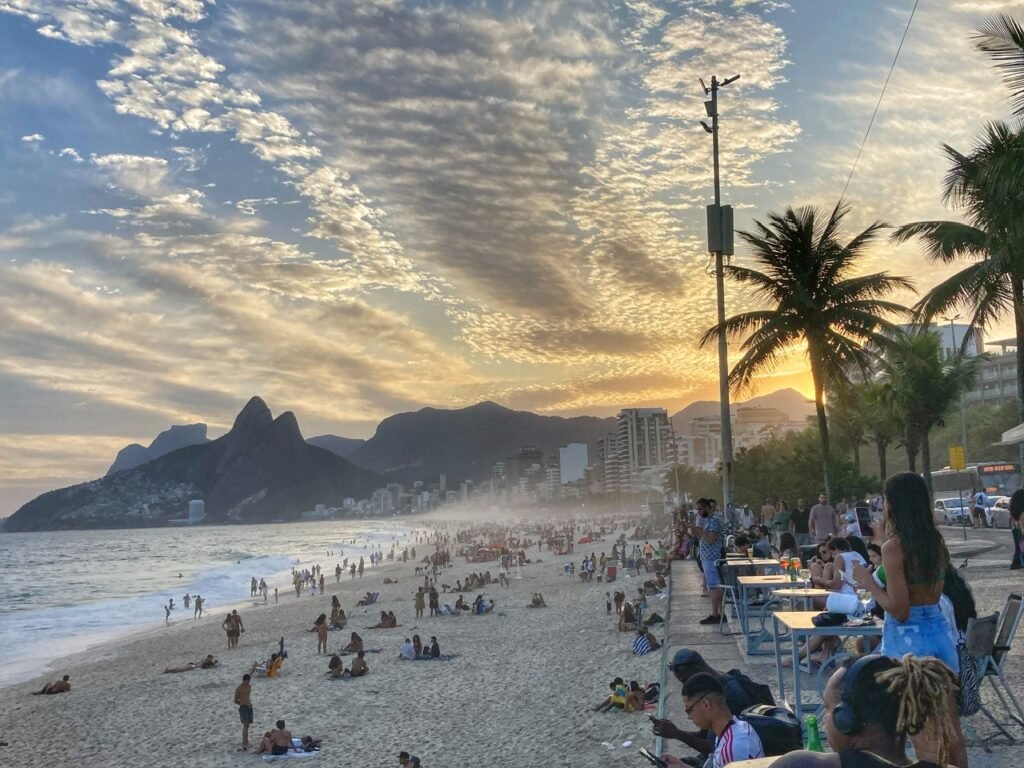
Also, not far from our place…Ipanema….For some the name alone is enough to make your toe start tapping, thanks to the world famous 1962 Bossa Nova (Portuguese meaning “New Trend”) hit and second most recorded song in history near this very beach.
Other than “The Girl from Ipanema,” the two-mile beach is also famous for its beautiful sunsets, powdery white sand, killer surfing and gorgeous backdrop of Dois Irmãos, or Two Brothers Mountains. We’ve been fortunate to have it a twenty minute walk from our apartment this month. Because it’s winter, unfortunately the sunsets drop a little far out of the frame for the postcard shots.

The beaches in Rio are segmented by numbered sections called Posts. Post 8&9 is Ipanema and is number 9 is often considered the most interesting part of the coast because it is where trendy hippies, fashionistas and sometimes celebraties hang out. It also gets slam-packed on the weekends.

One thing that definitely indicates winter…the tides. Almost the whole time we were in the city, the red “High risk” flags have been up warning swimmers of the strong undertow. Other times of the year, the water is much more placid, even enough to do stand-up paddle boarding. Also, you’ll notice the rainbow flag. This indeed means it’s a gay-friendly beach. It’s refreshing to see the welcoming inclusivity in Rio de Janiero. It’s not exactly common in Latin America.

One of the two men who wrote “The Girl from Ipanema,” Antônio Carlos Jobim. It was written about Heloísa Eneida Menezes Paes, a 17-year-old girl who lived nearby and would be noticed walking past the Veloso bar-café as part of her daily routine. The popularity of this song launched the teenager to celebrity status, and in the years that followed, she would be known as Helô Pinheiro a model, even in Playboy, and successful businesswoman.
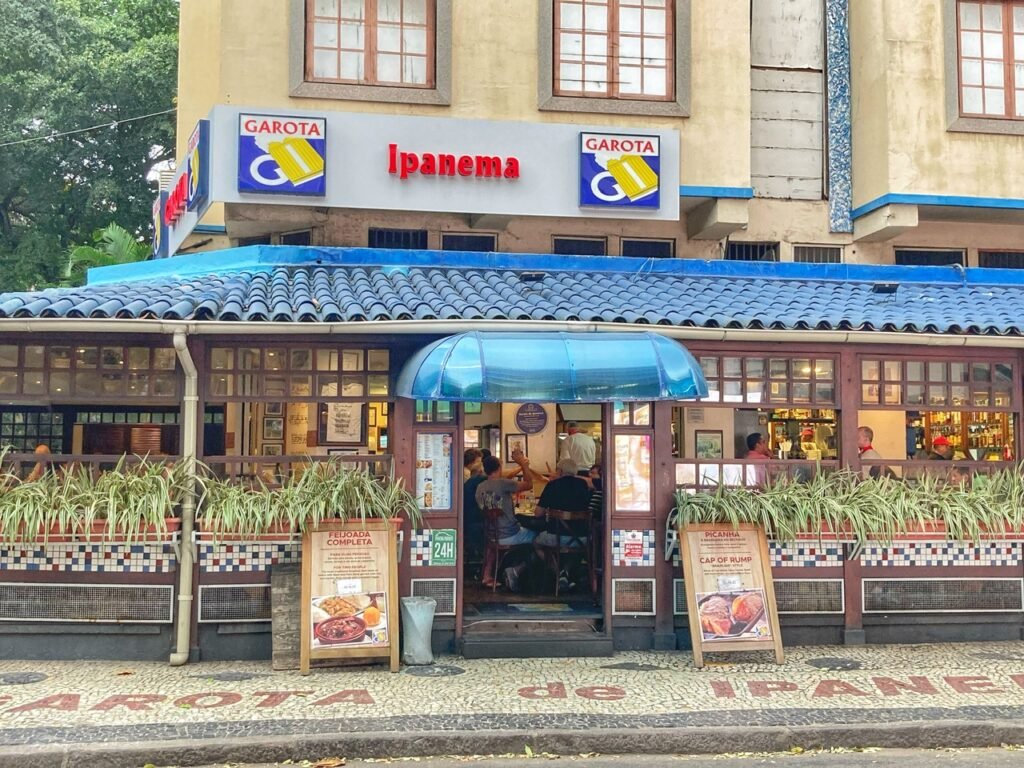
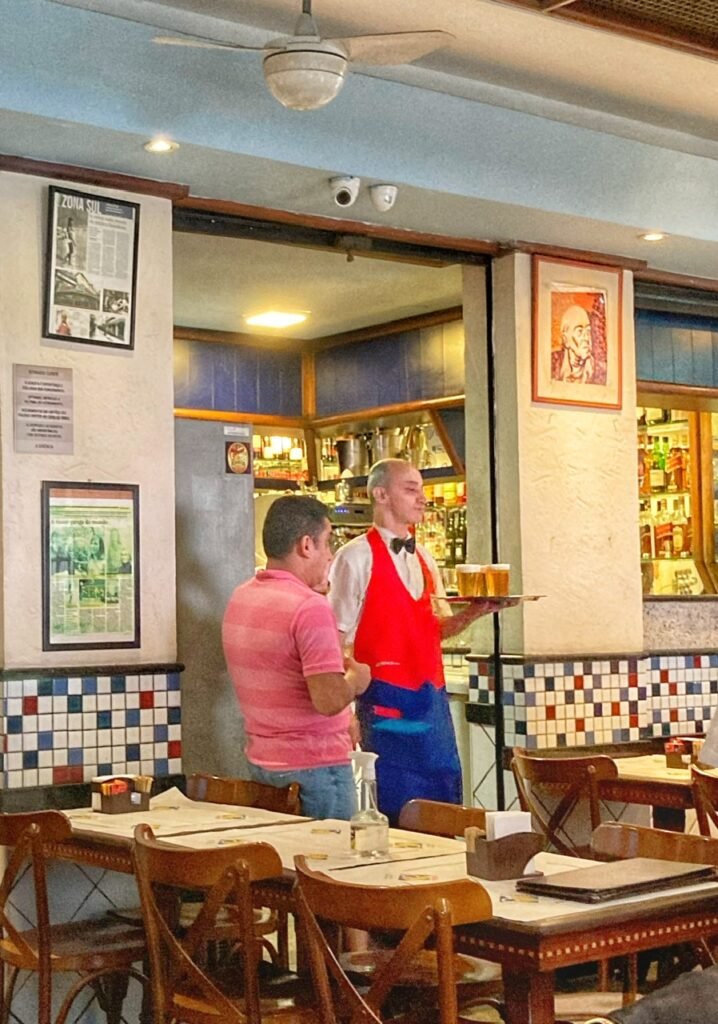
This is the cafe today, rebranded to fit the song, and of course, a popular tourist attraction. Garota, in Portuguese, means girl. The song was made famous by Astrud Gilberto, but other stars who recorded their own versions of the song are: Frank Sinatra, Madonna, Amy Winehouse, Ella Fitzgerald, Eartha Kitt, and Cher.
Visitors flock here to buy a pizza or beer and sit by the window and to try and try and spot their own tall and lovely boy or girl from Ipanema gliding by.
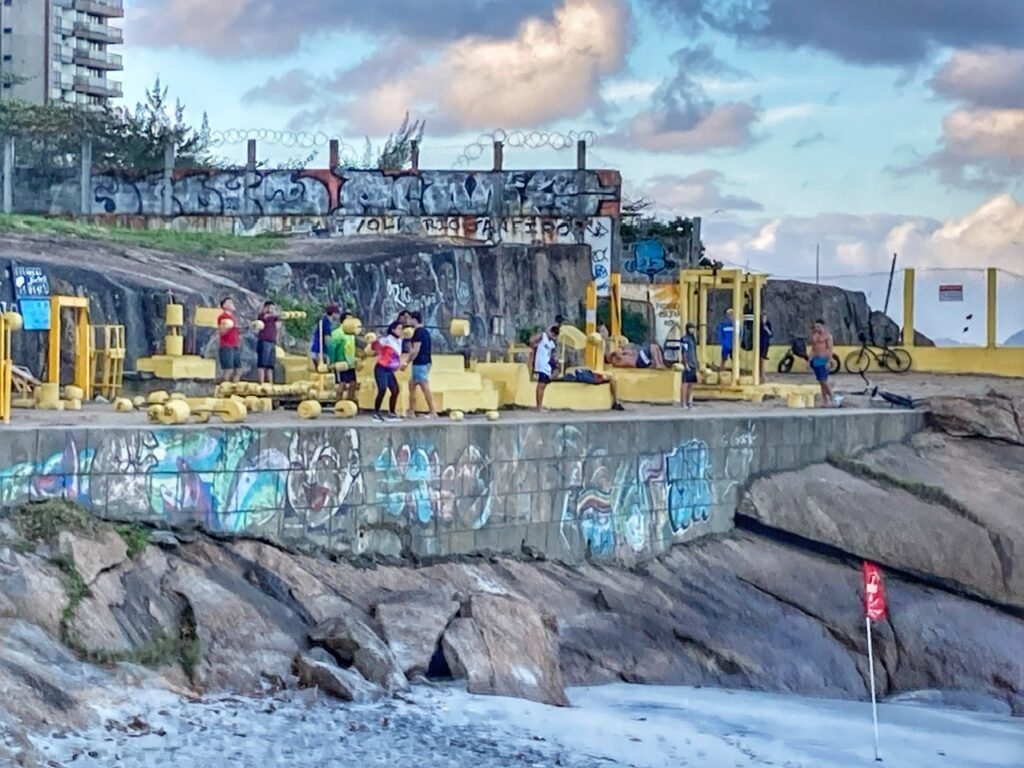
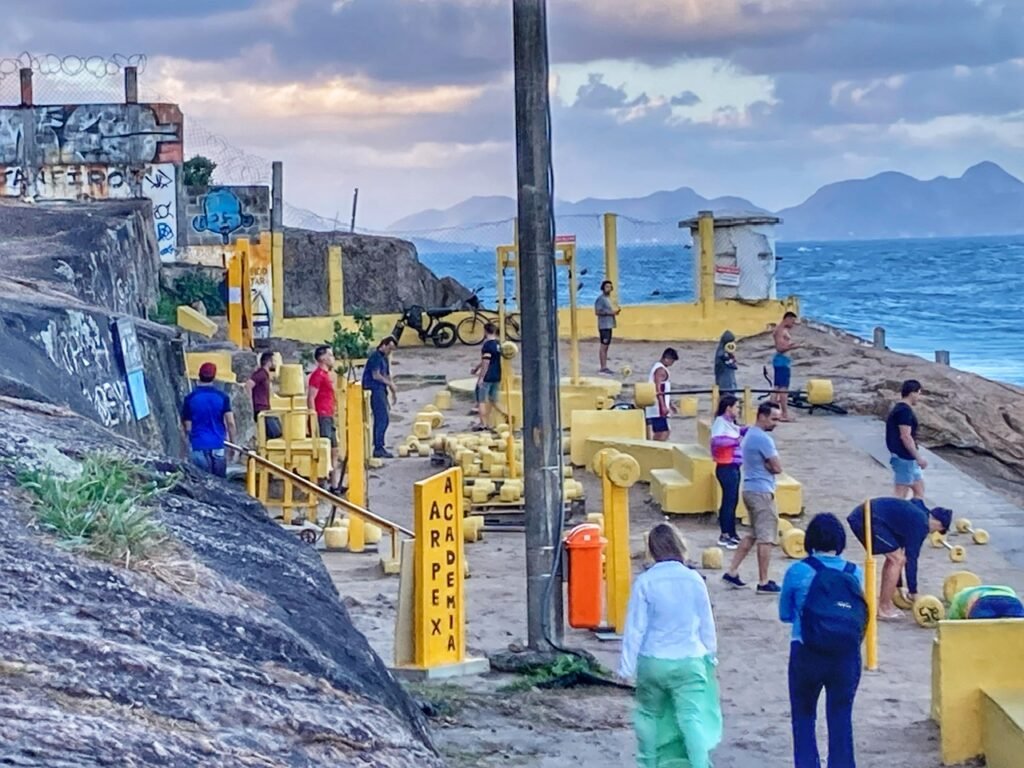
If said beautiful people aren’t heading to the beach, they might be heading to the nearby public gym near the rock outcrop at Arpoador. It’s not a terrible place to pump some…cement. Because that’s what the weights seem to be made out of. 🤣
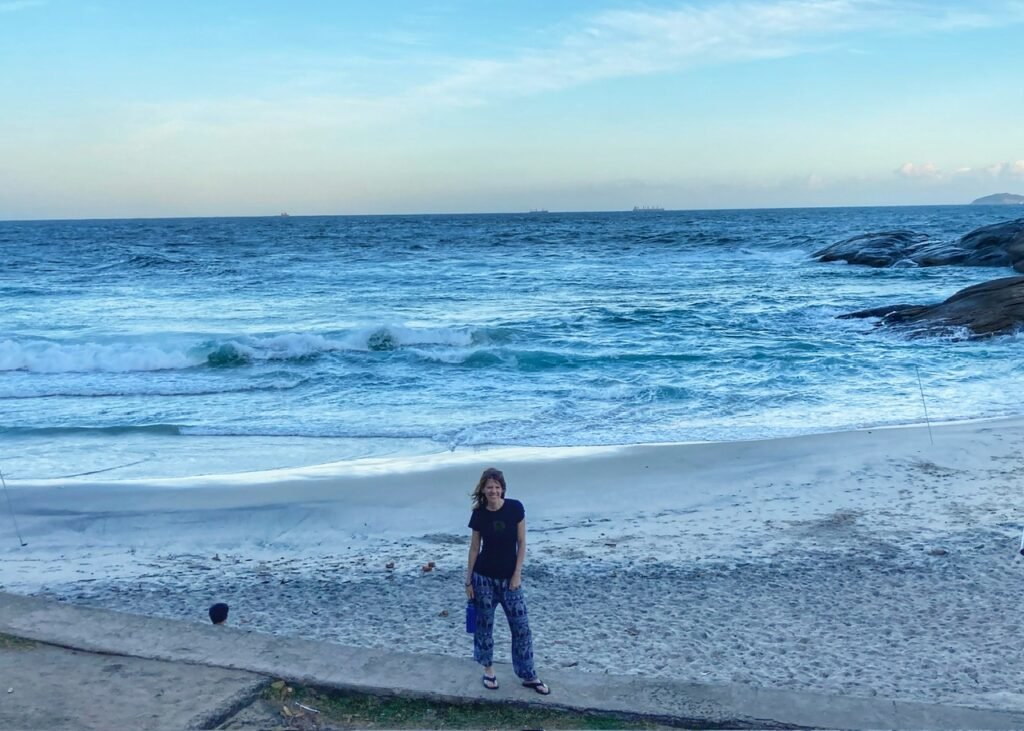
Mandy…the girl from Indiana. Has almost the same ring. 🤣
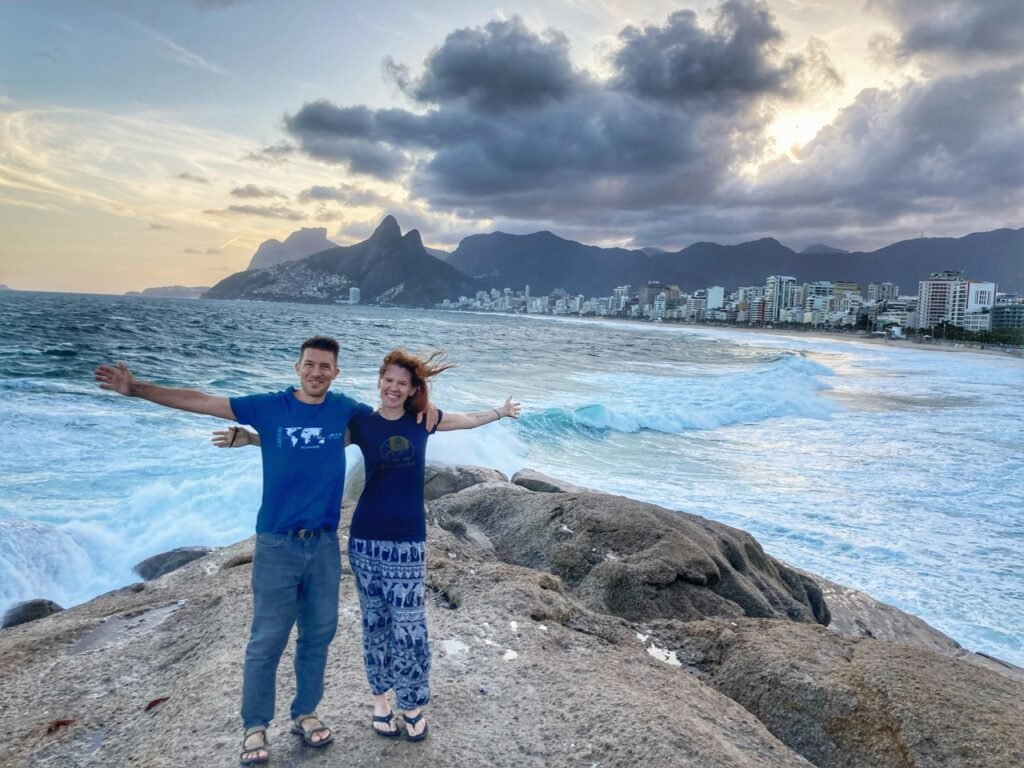
Another lovely boy and girl temporarily in Ipanema on Pedra do Arpoador (Sunset Rock.) It’s an incredibly popular place to soak it all in, even in the crazy wind that night!!

One of the many, many Hawaina stores in Rio. If you’re not walking around in a pair, you’re probably not a local. Thus, Greg picked up a pair for $12 to try and fit in.
Lago de Rodrigo de Freitas
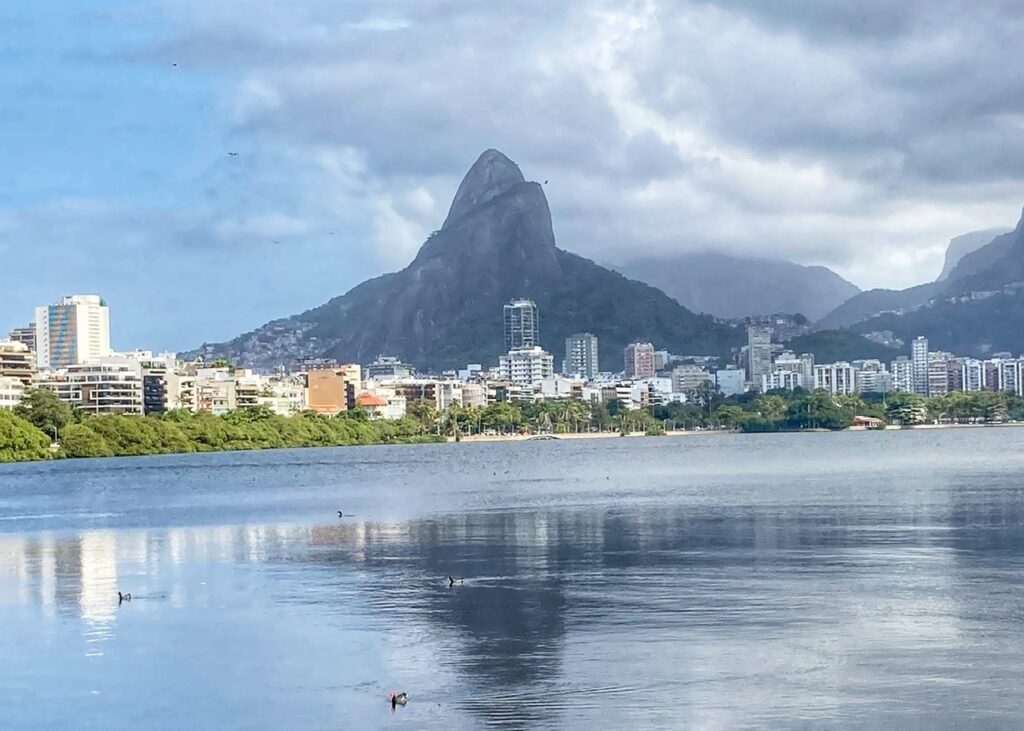
Known as the “heart of Rio de Janiero,” Rodrigo de Freitas Lake is an inland seawater lake connected by a canal to the ocean and about a 30-minute stroll from our apartment. It was used for many rowing and canoeing events during the 2016 Summer Olympics. And it dazzles with views and life around the entire 5-mile perimeter.
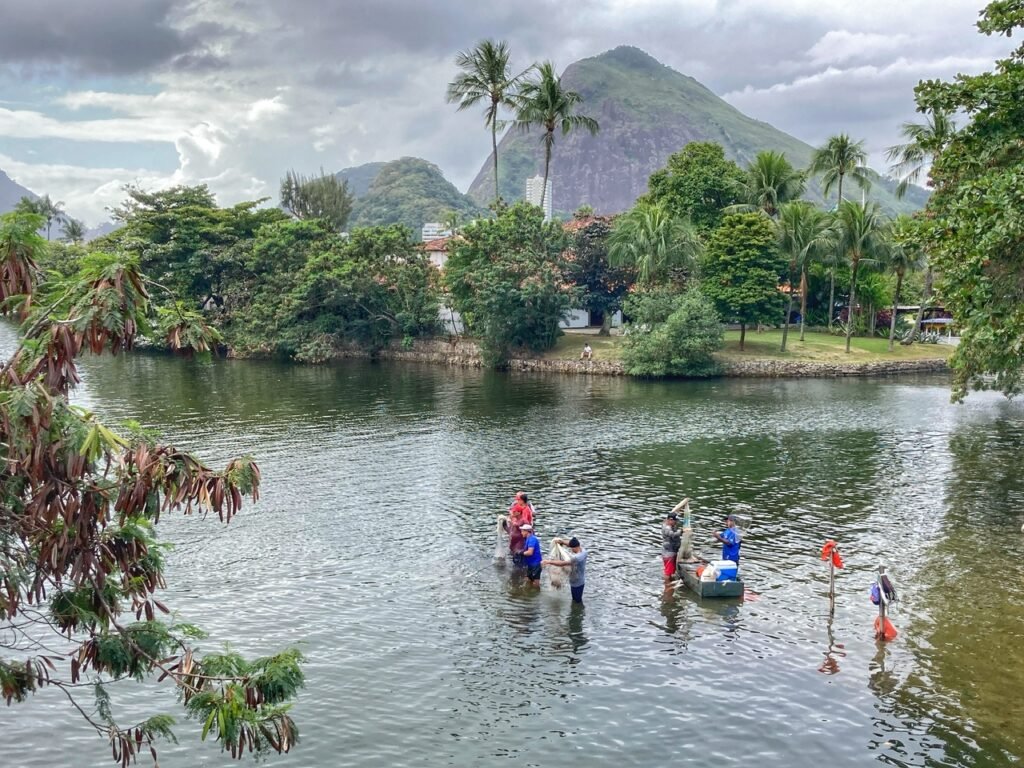
Although a gorgeous setting, unfortunately the the heart of Rio has been highly degraded and polluted over the years with heavy metals, among other things, but thankfully preservation and restoration efforts have been in place since before the Olympics. Still, it was a bit surprising to see a group of fisherman pulling fish from the lake in a scene that looked straight out of SE Asia. Uh, yeah, let’s not buy that fish…It definitely makes you wonder.
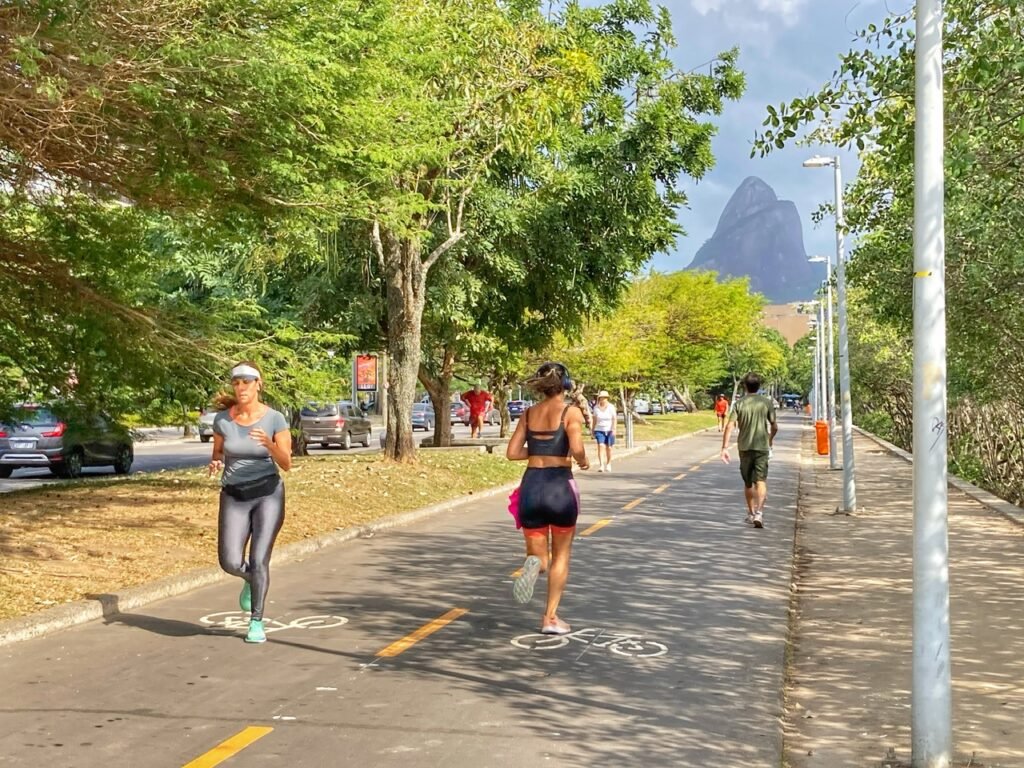
The path is geared to runners, with distances marked every eighth a mile and booths selling coconut water directly from the source.
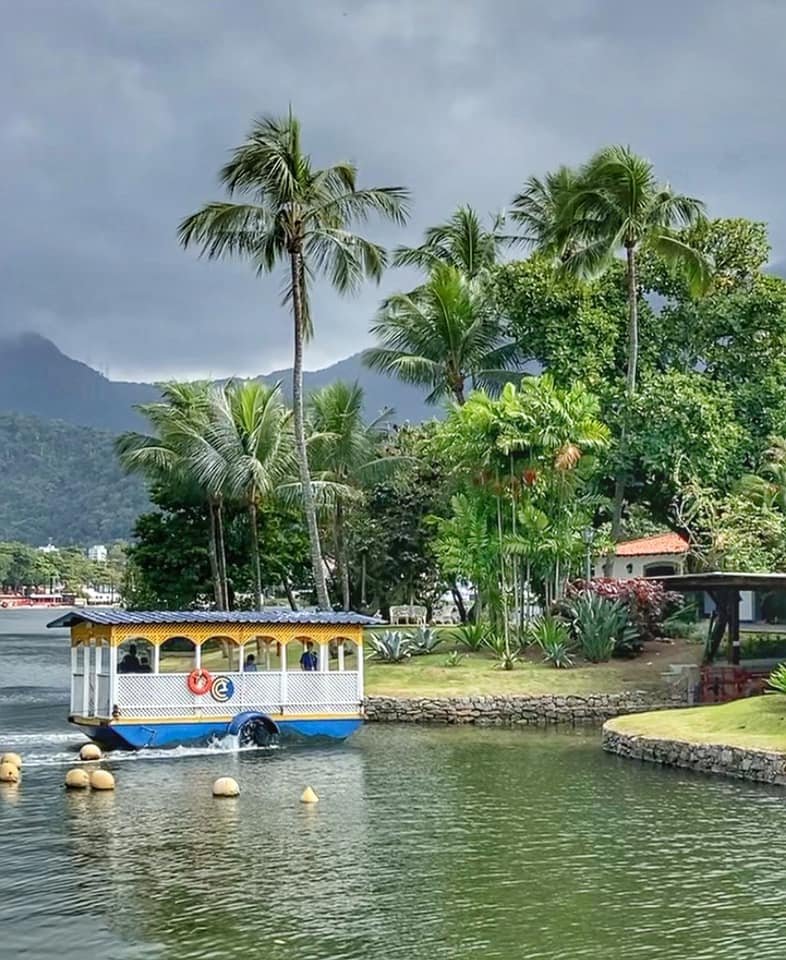
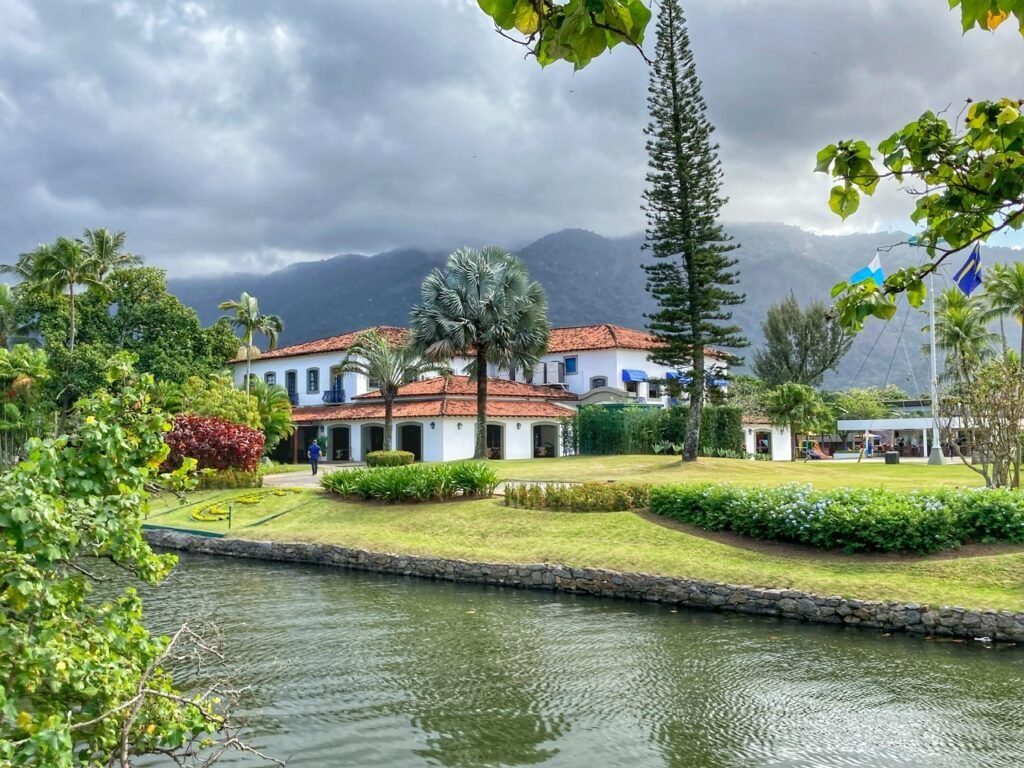
The area is a middle to upper class neighborhood and within the lake there is an island called, Ilha Caiçaras, on which sits the a hoity-toity leisure club. Instead of a pedestrian overpass (only certain Portland connections will get this;), you enter on a private fancy schmancy water taxi to a club that looks like it fell out of Beverly Hills. Mandy wonders for five seconds if they needed any non-Portuguese speaking event coordinators…
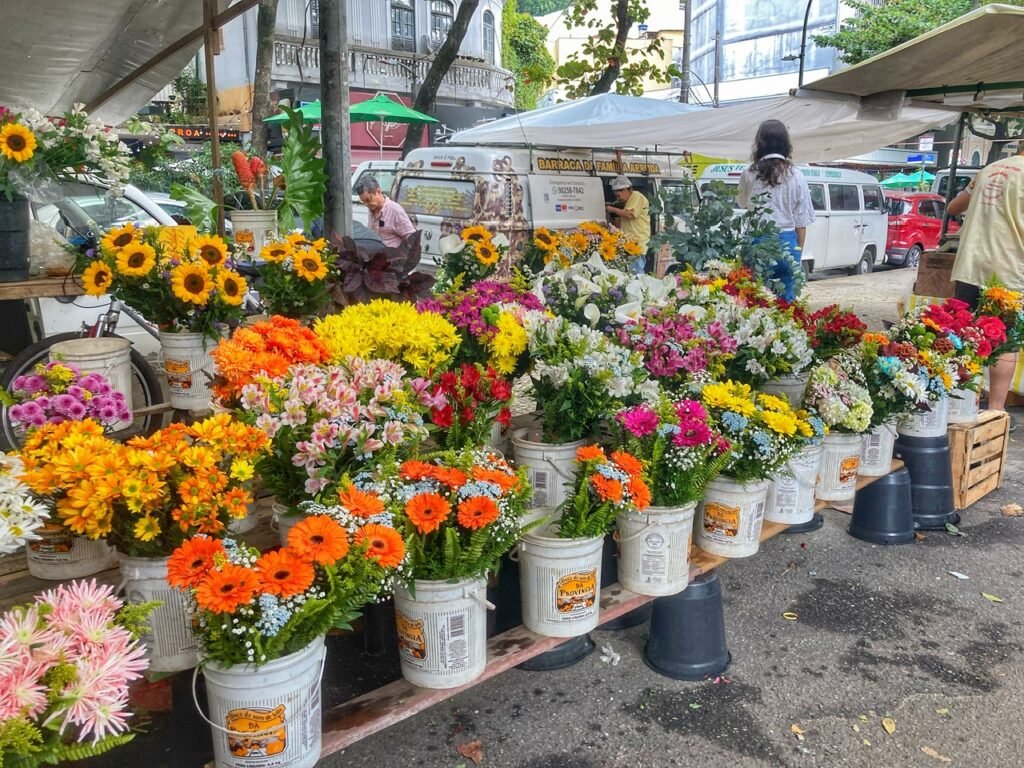
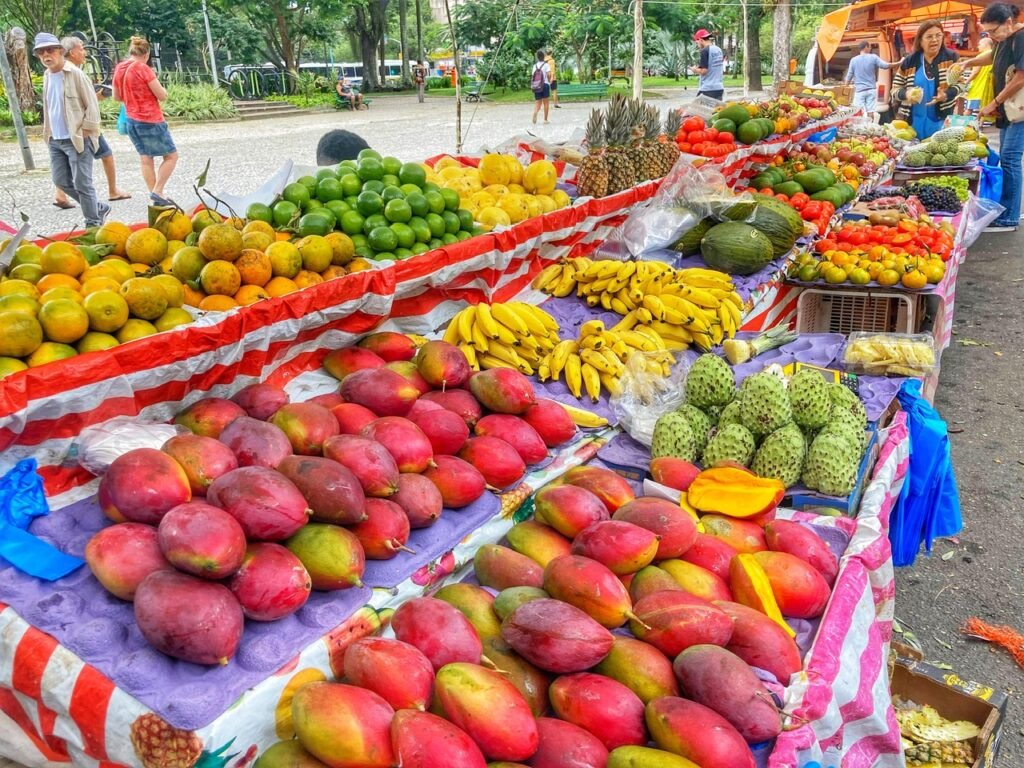
After walking halfway around the lake we arrive to Feira Livre da Gávea, one of many weekly markets we checked out in our area. The markets offers crayola-colored flowers, and lots of fruits, although we must admit, after being spoiled in Colombia and Ecuador, we continued to be disappointed with the selection. As they often are, the red mangoes were a bit stringy and we had yet to find our Holy Grail fruit of jabuticaba, which is from near this region of Brazil, but sadly we confirmed, not in season. Little did we know, we’d still manage to get lucky down our Brazilian journey.
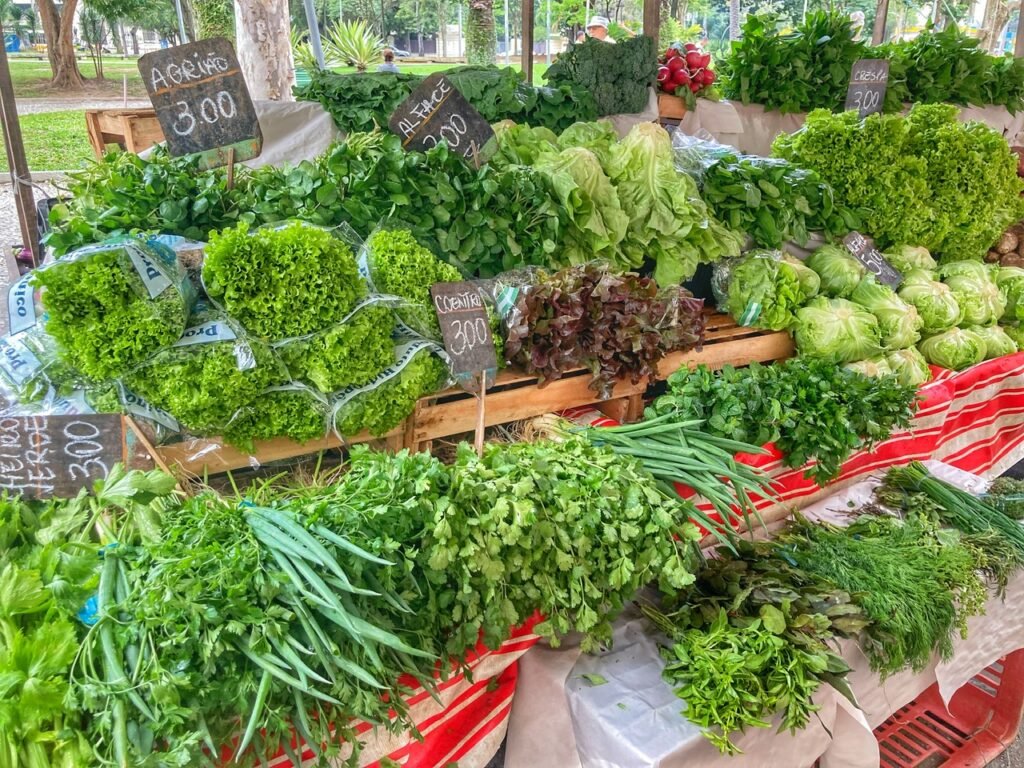


However, the greens were delightfully to die for and super cheap. Most bundles are around 3-5 Reais, or $.60-1.05. And the fish selection is divine. Though after the recent lake viewing, it seemed a bit fishy….(pun intended.) These particular fish heads are about the size of a human head.
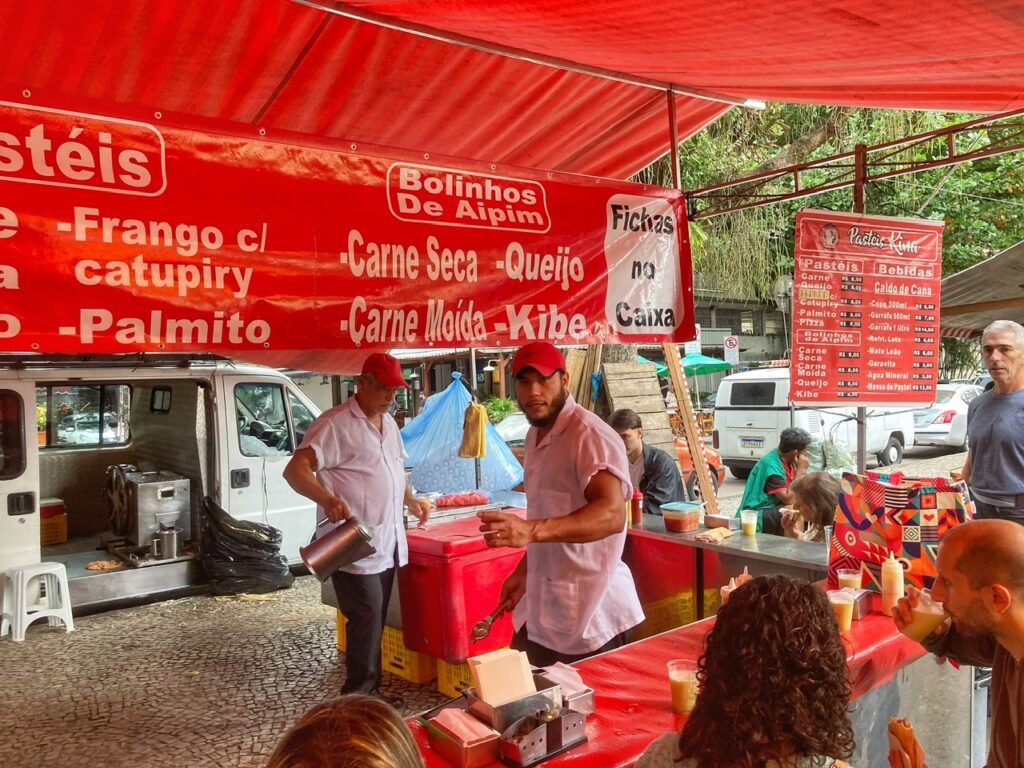

At the market, we also tried a popular Brazilian street snack called a Pasteis. These snacks for 8 Reais ($1.66) are a fried pie crust filled with basically anything. We chose the palmito, which was packed with cheese and palm hearts. Very scrumptious although not something to get hooked on!
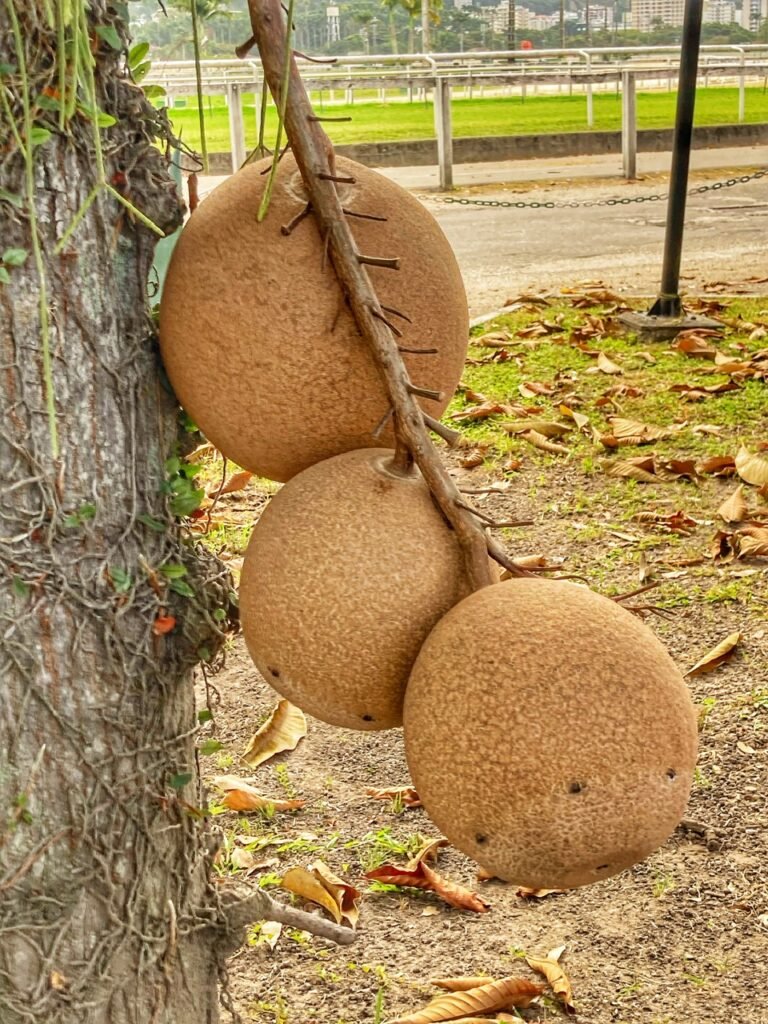
Around the lake we also found several trees with rather gargantuan balls dangling around the trunk, appropriately called a “Cannonball Tree.” (What did you think I was gonna say?! 🤣) It is native to the tropical forests of Central and South America, and it is cultivated in many other tropical areas throughout the world because of its beautiful, fragrant flowers and large, interesting fruits. Once opened, the flesh of Cannonball fruit is considered edible when raw, but it is often avoided due to its rancid, sulfuric odor. The flesh is primarily used in medicinal applications and is consumed in times of famine. (Specialty Produce website) Yum. Another fruit win for Brazil. 🤣
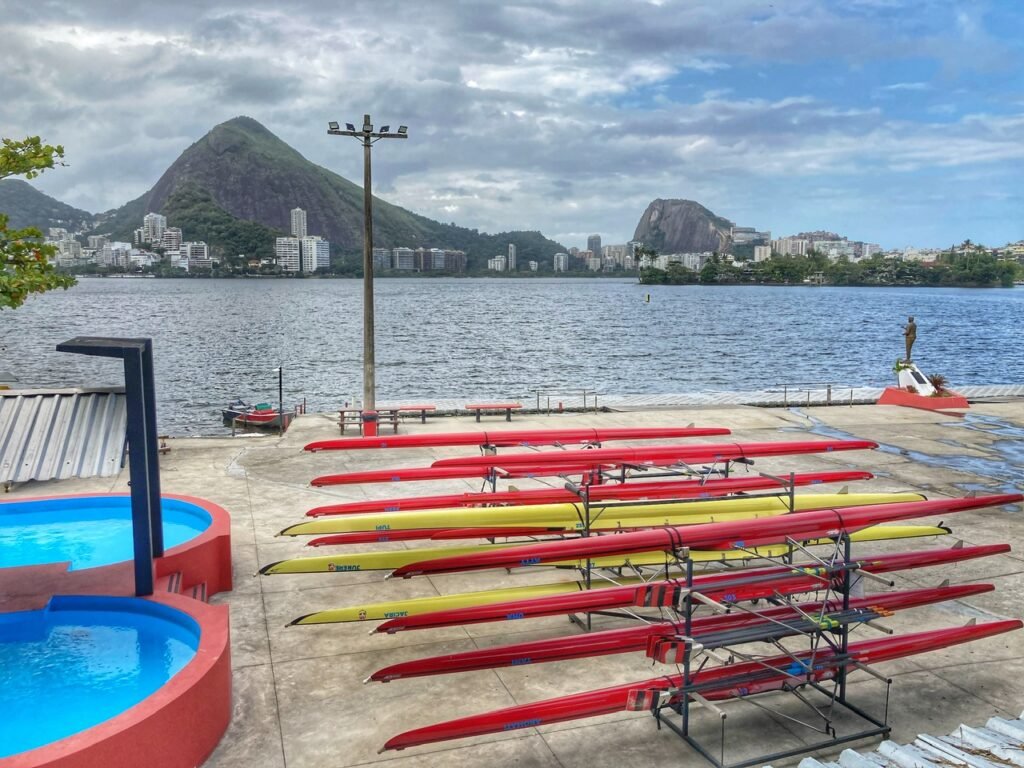
The rowing club along the lake. This brought back fond memories for Greg because this was his university pastime.


Everywhere you look in Rio, city life is caressing nature. You can also see Christ the Redeemer from this lake though he was hiding in the clouds this particular day.
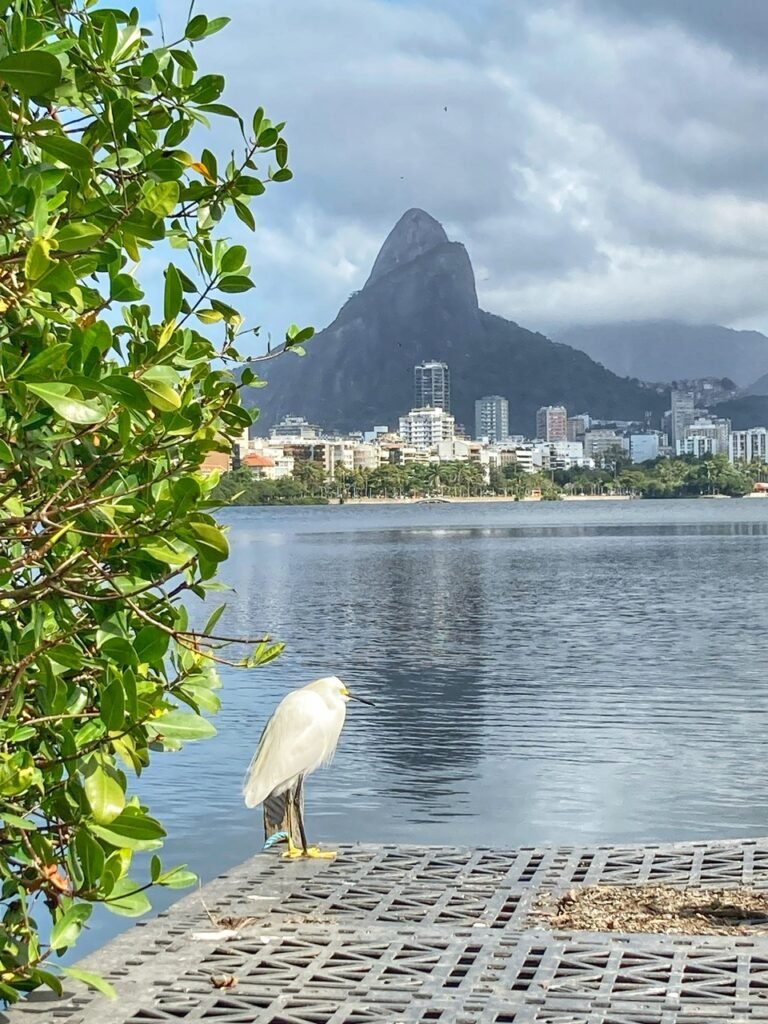
It’s definitely one of the most extraordinary and beautiful cities we’ve ever seen.

Returning home on the running path along Copacabana Beach.
Selarón Mosaic Steps
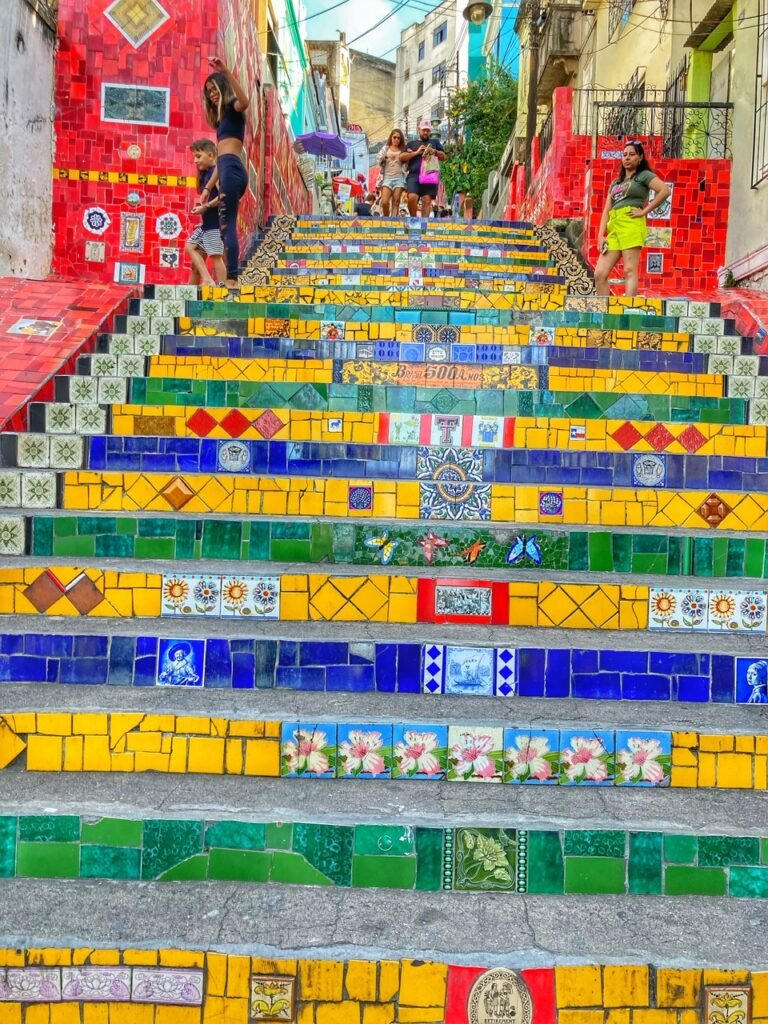
When you step onto The Selarón Mosaic Steps nestled between Rio’s Lapa and Santa Teresa neighborhoods, you are literally stepping into 250 steps of art. Jorge Selarón, a painter and sculptor from Chile, began renovating these dilapidated steps outside of his home on a whim starting in 1990. Tragically, in 2013 after many years of dedication to them, he was discovered dead on them under mysterious circumstances in at age 65. But, his colorful and beloved legacy remains. (Atlas Obscura)

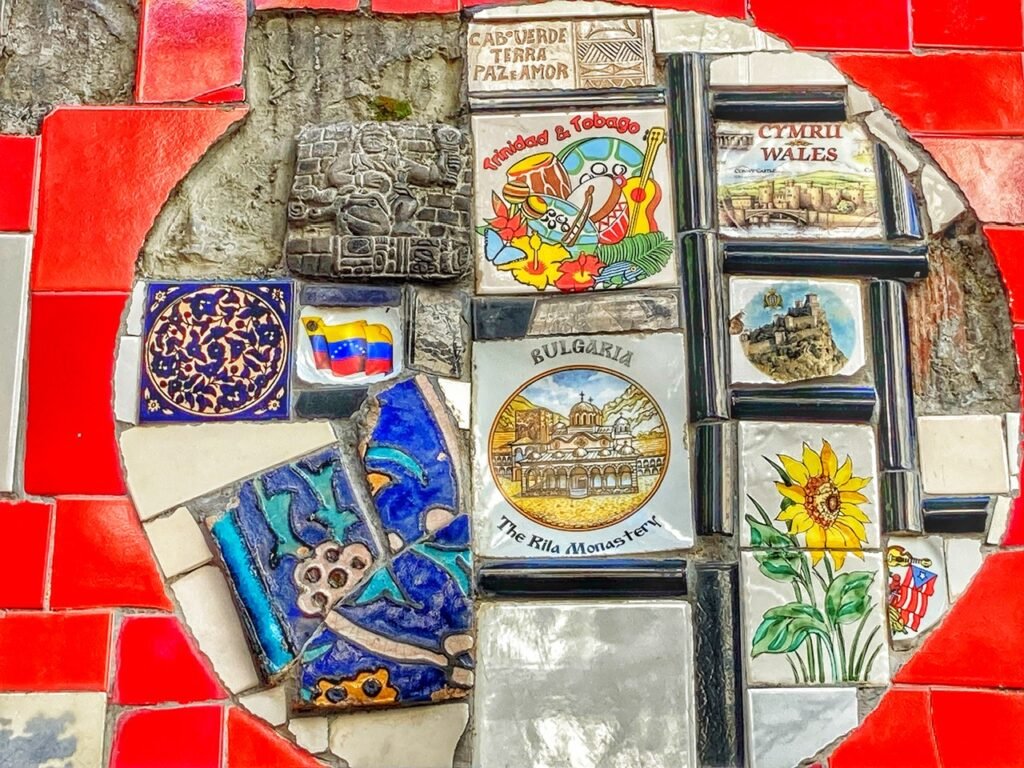
The 125 meter steps themselves are covered in over 2000 tiles collected from over 60 countries around the world. You could easily spend an hour or two just admiring each and every one of them. We found Bulgaria!
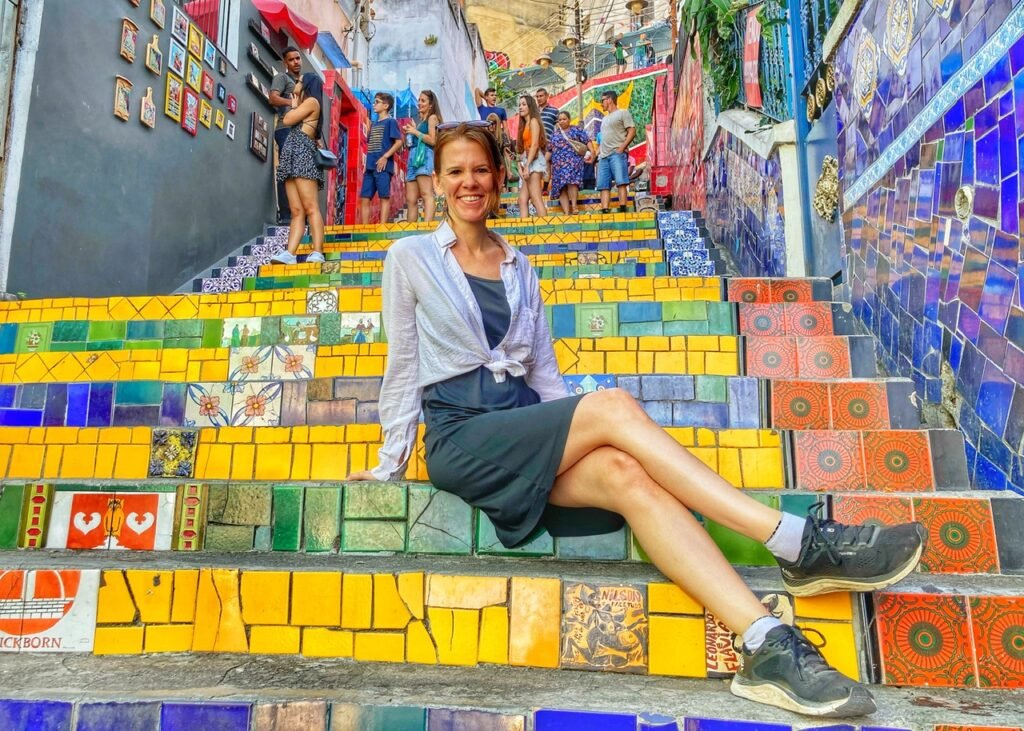
It’s definitely not easy to get an uninterrupted shot at this very Instagrammy attraction.

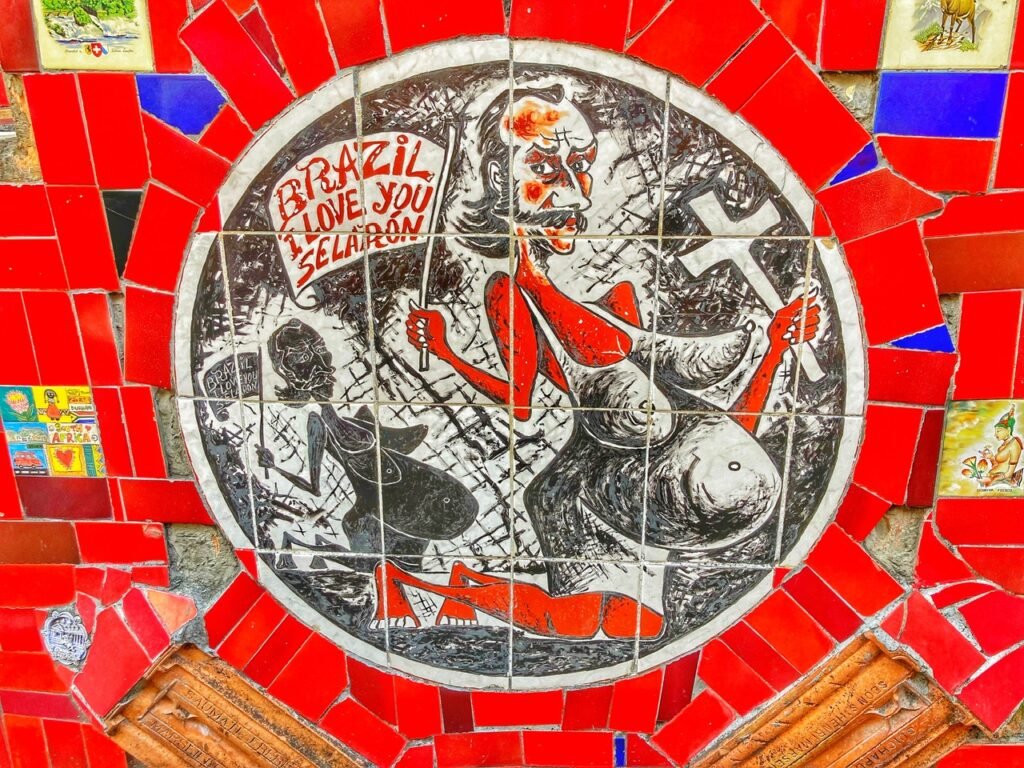
Selaron remarkably sold his own paintings to fund the project, which he called “a tribute to the Brazilian people.”

As Selaron’s work became more well-known, he started to receive ceramic tiles as a gift from travelers that visited Rio de Janeiro. That was also a good way for him to keep on with the project, since he always had financial problems. We were happy to see our former home represented. (freewalkertours .com)
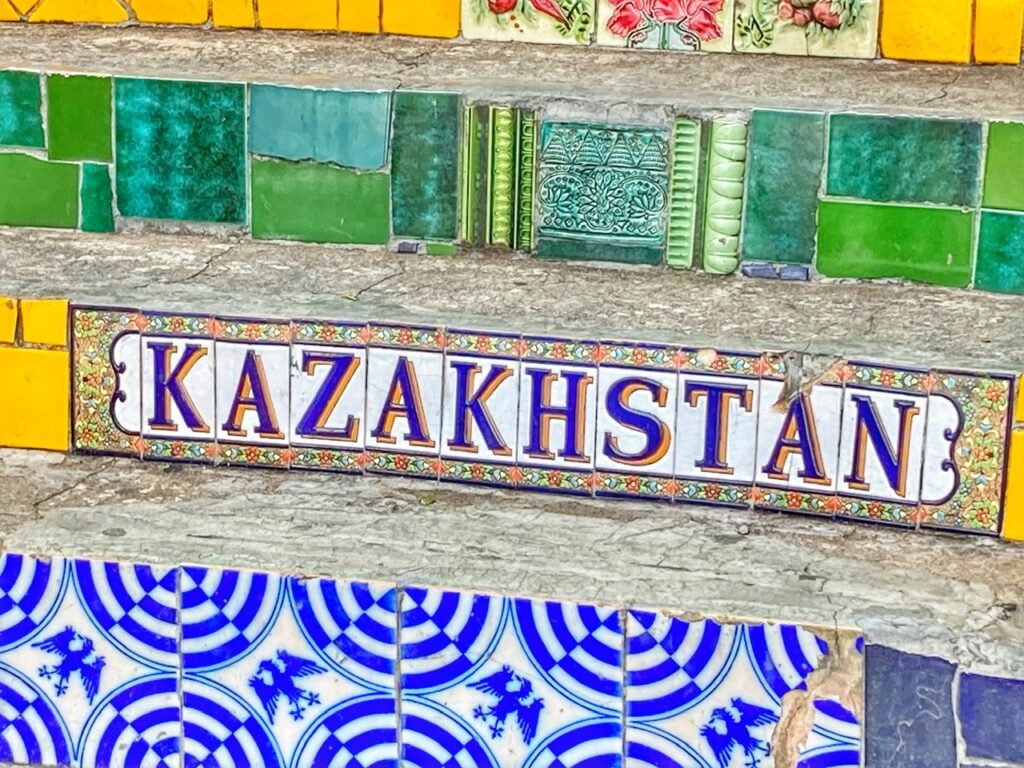
And impressed that they came from as far away as KAZAKHSTAN. Or, did he just craftily spell the word to make us think he had their representation?
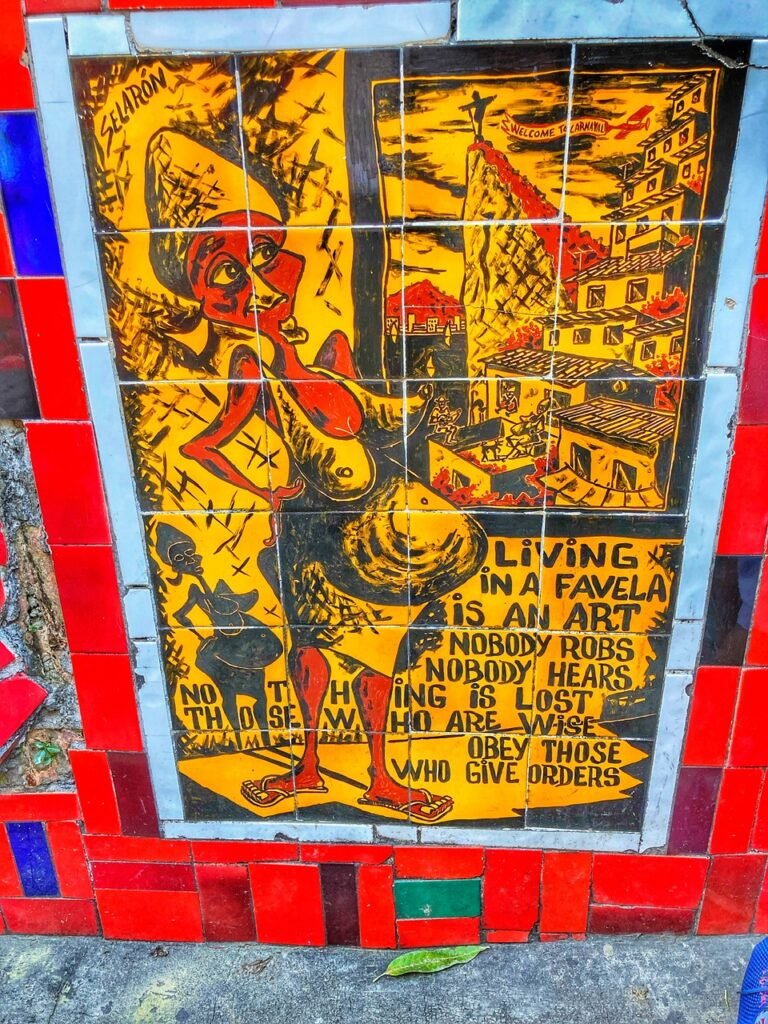
Quite a statement. (Note; A Favela is basically a slum.)
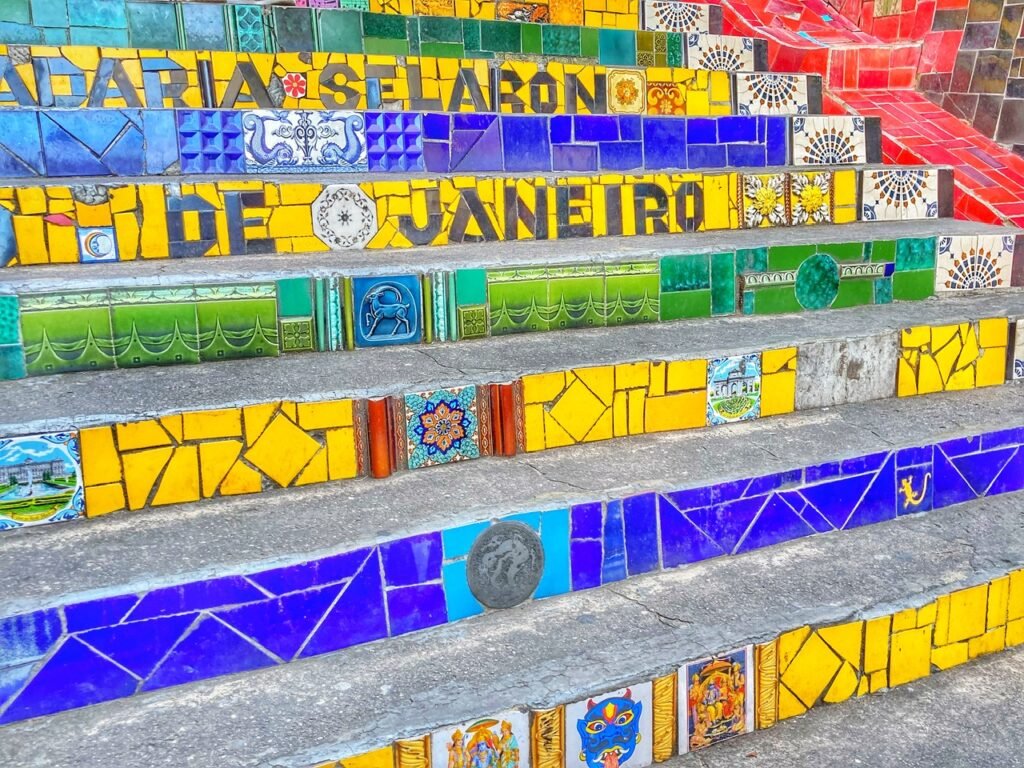

Since their completion in the early 2000s, the steps have garnered international attention from magazines such as National Geographic and Time, and have become a major tourist attraction.
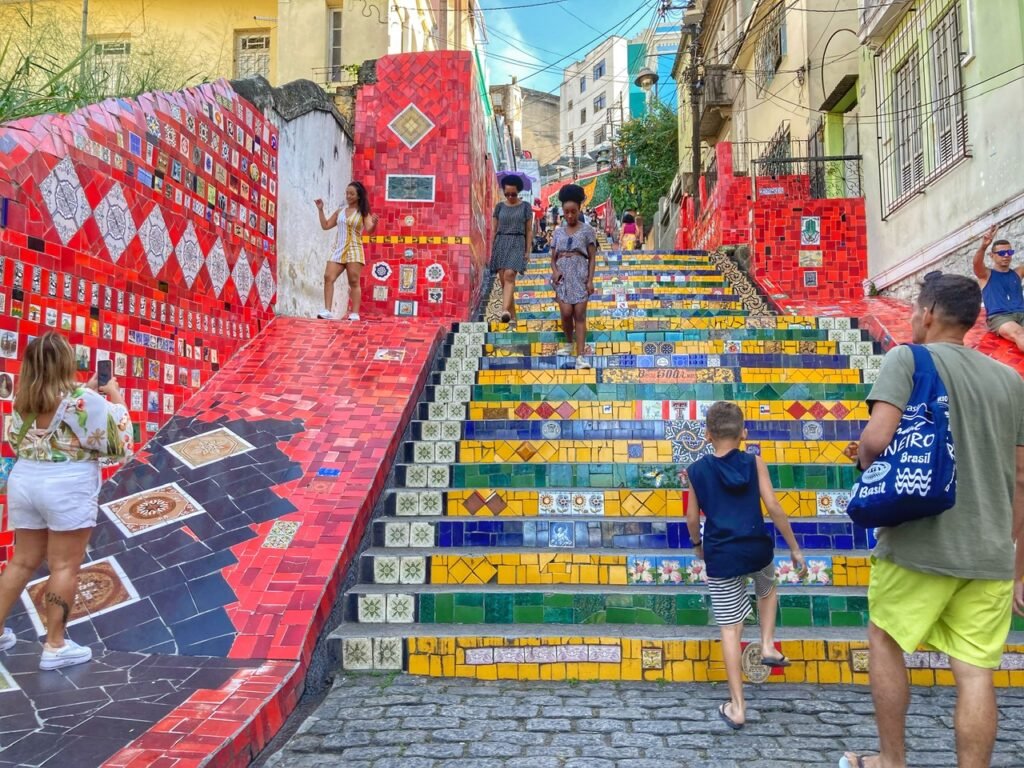
It’s easy to see why.
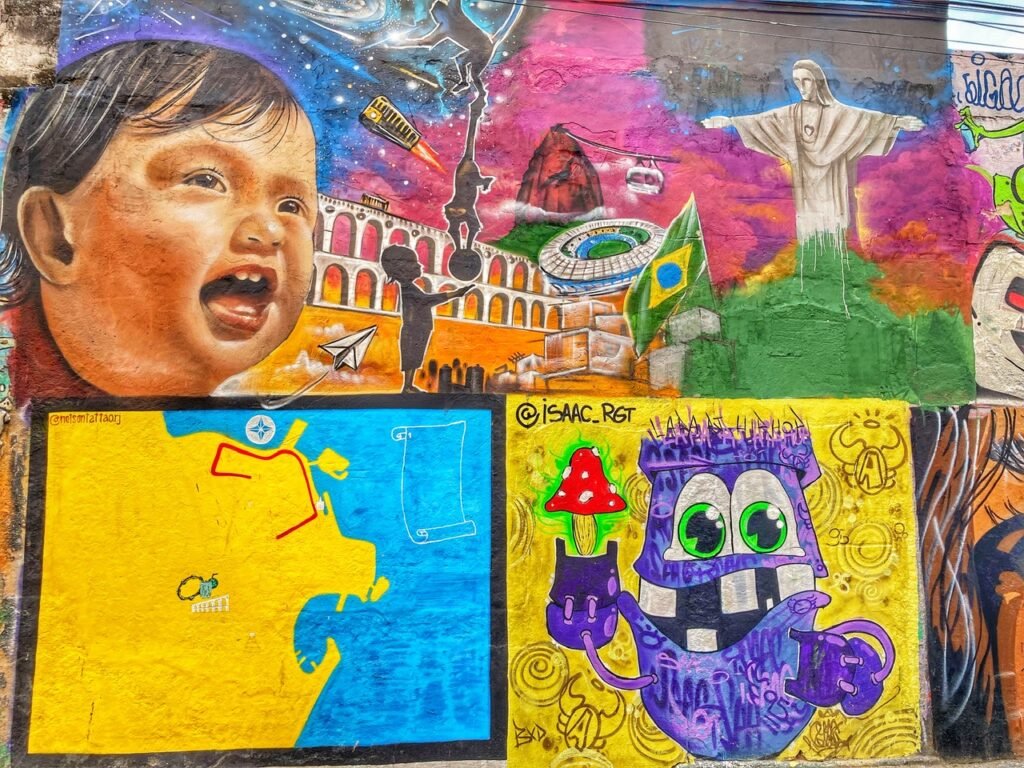
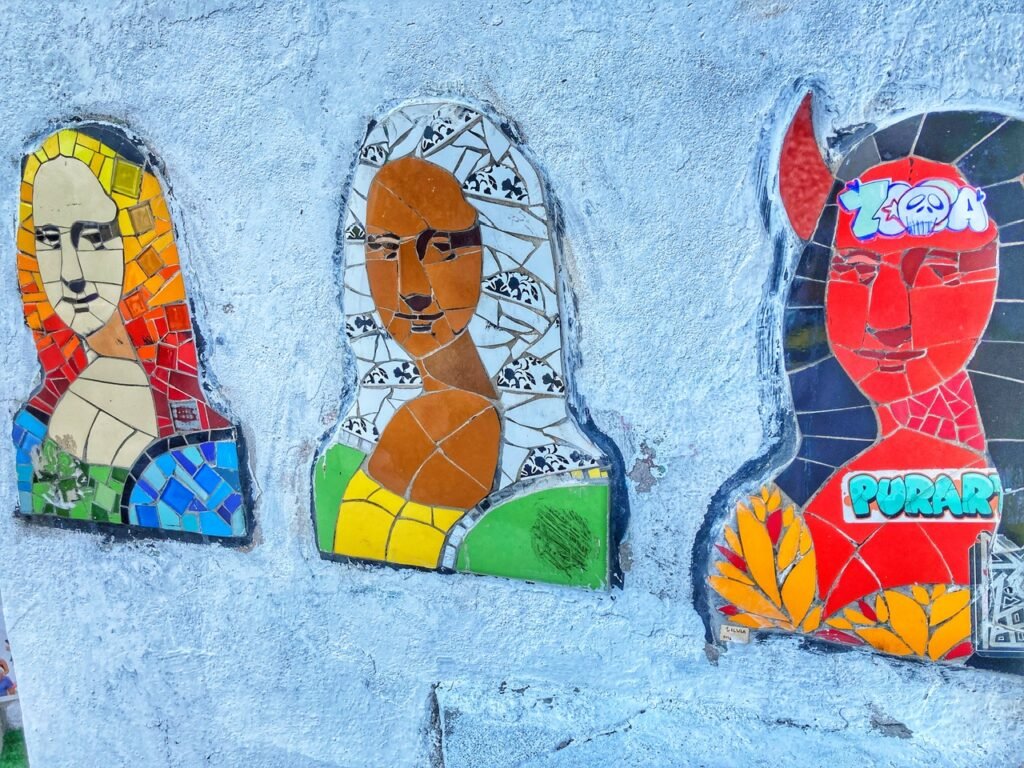
Around the stairs, you will also find plentiful other street art images, even gay-friendly, angelic and devilish versions of Mona Lisa.
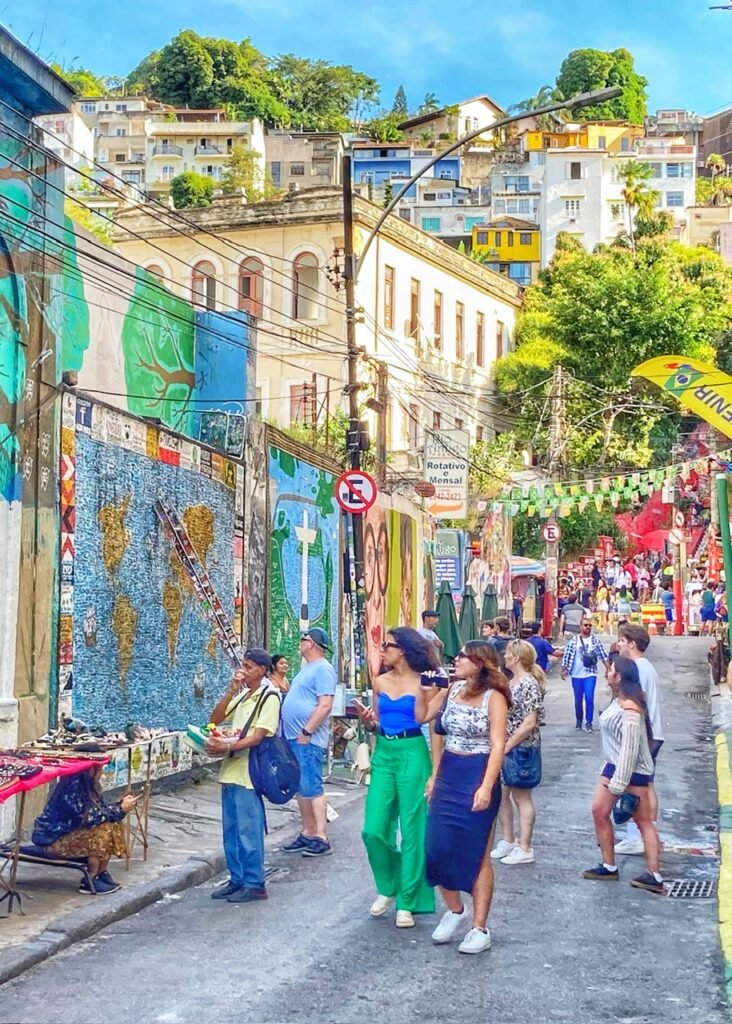
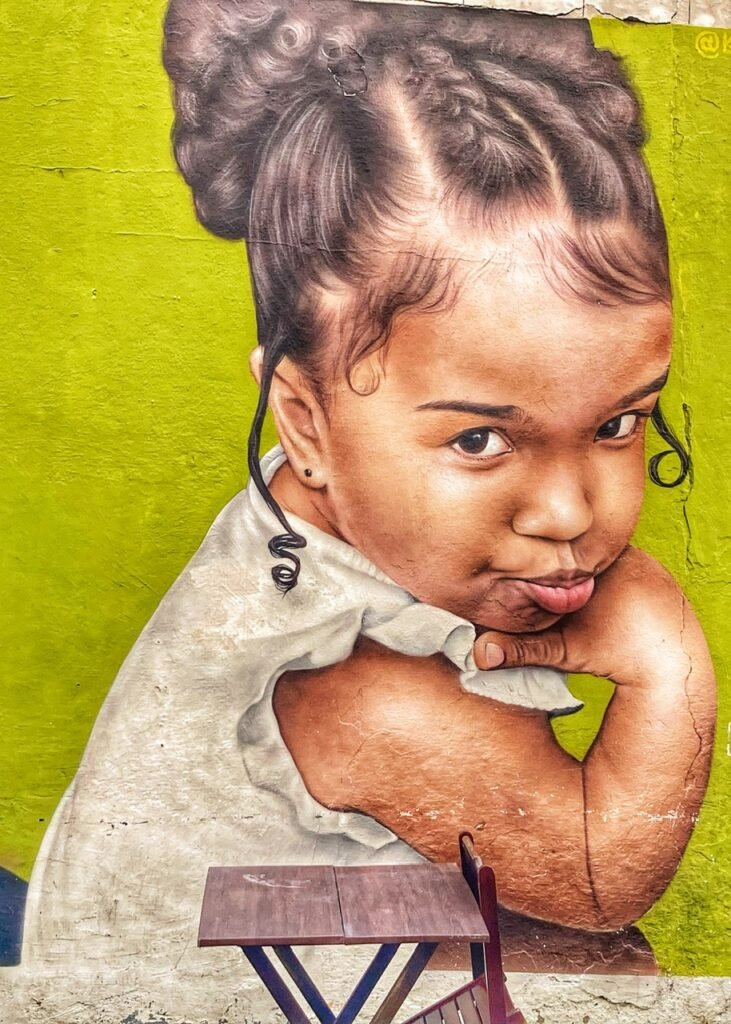
It’s a very lively and vibrant area. Everyone has fun….almost.
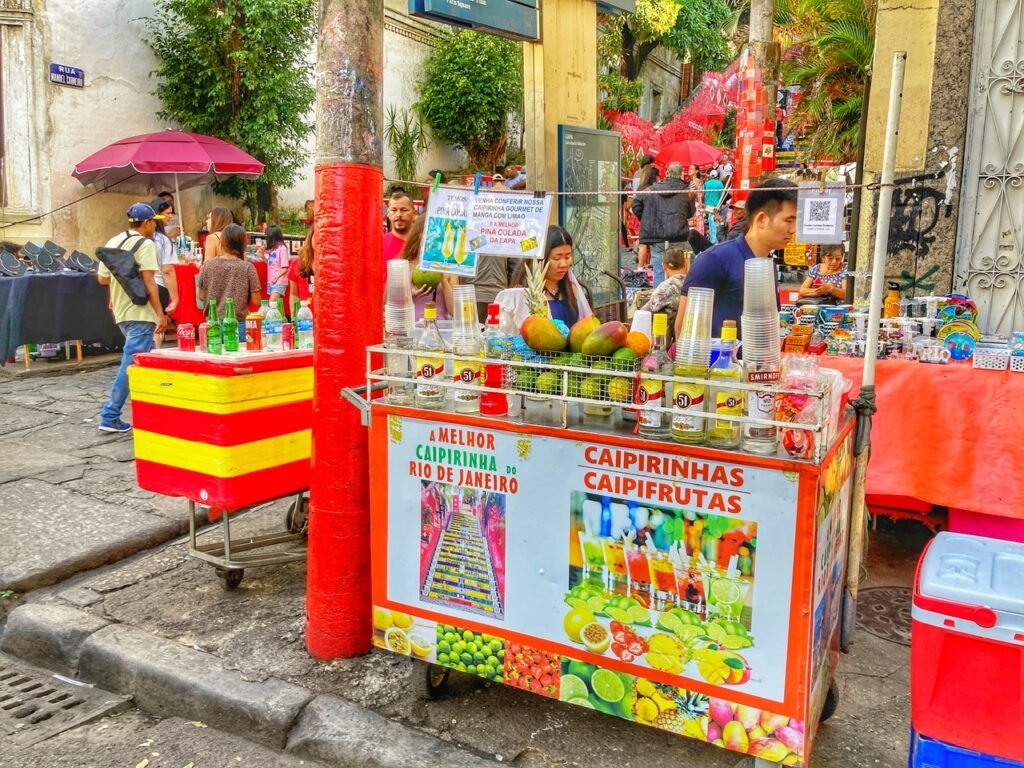
Have we mentioned there are people selling alcohol absolutely everywhere in Rio?
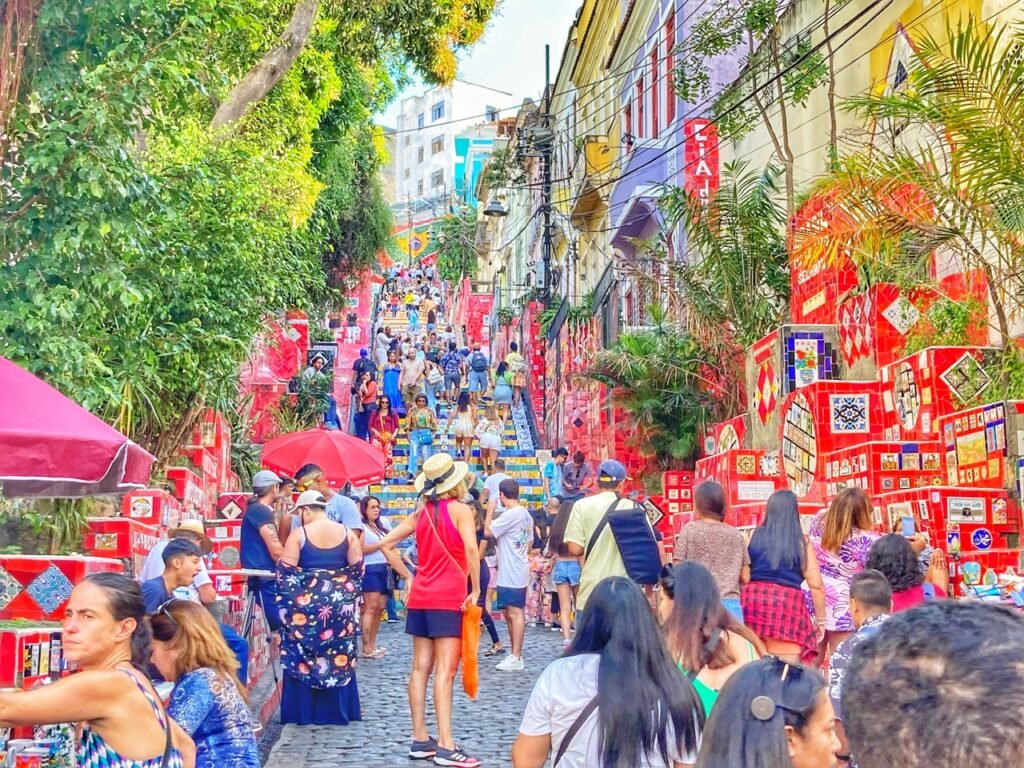
What it actually looks like.

A tribute to the Brazilian football team from the 2010 FIFA World Cup.
Lapa & Santa Teresa Neighborhoods
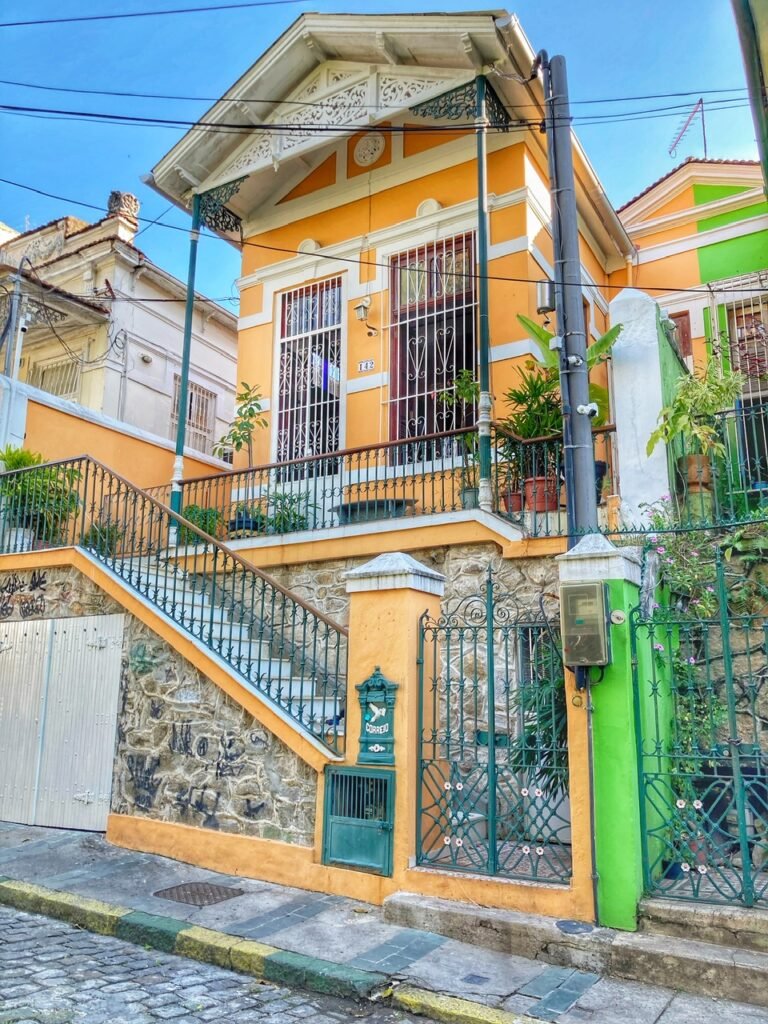
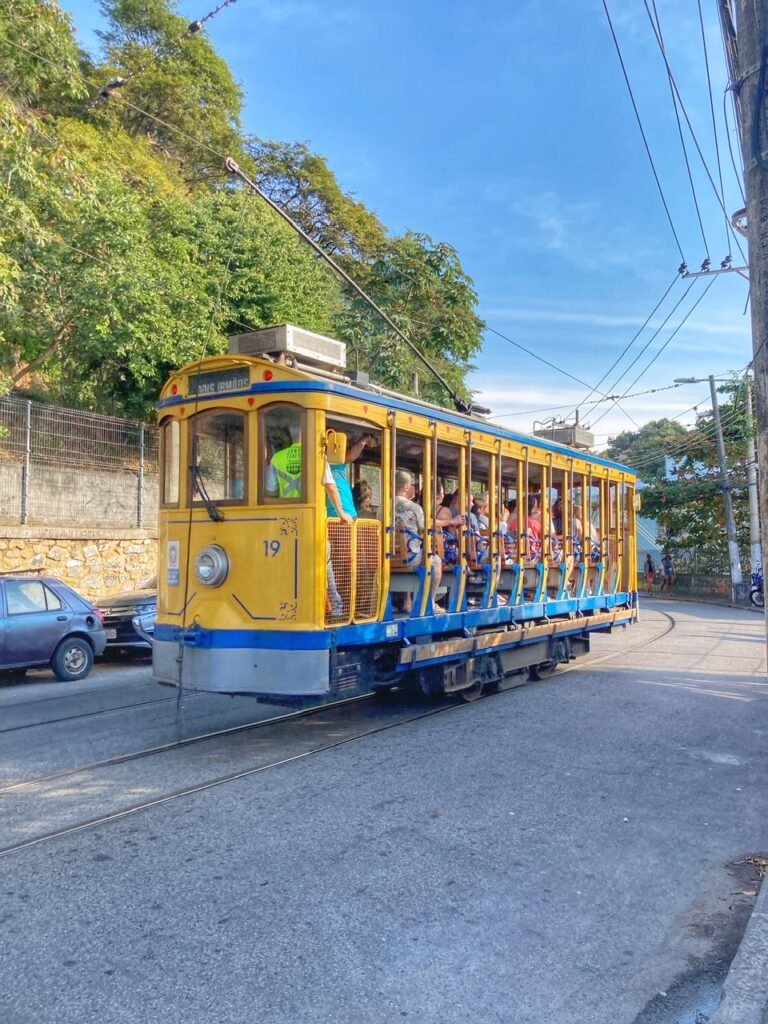
Unsurprisingly, the vibrant and expressive Selaron mosaic steps unite two equally vibrant and expressive neighborhoods of Lapa and Santa Teresa. These Bohemian enclaves, Santa Teresa particularly with an aire of New Orleans, are bedecked with gorgeous and unique architecture, crumbled colonial mansions and cobbled lanes, which apparently some Uber drivers won’t dare set wheels on.
Although there is a very adorable historic tram you can take from the center, we started our explorations at the Gloria metro station on foot, winded our way up the Selaron stairs, checked out the ruins and Santa Teresa and continued down to the Arches and municipal catedral. As you huff up the cobbles, you’ll have many charming houses to cast your eyes on in Santa Teresa. Although it probably wouldn’t be advised after dark, it felt safe and open during the Saturday afternoon we went and the shops, people and restaurants we encountered were bursting with music and energy.
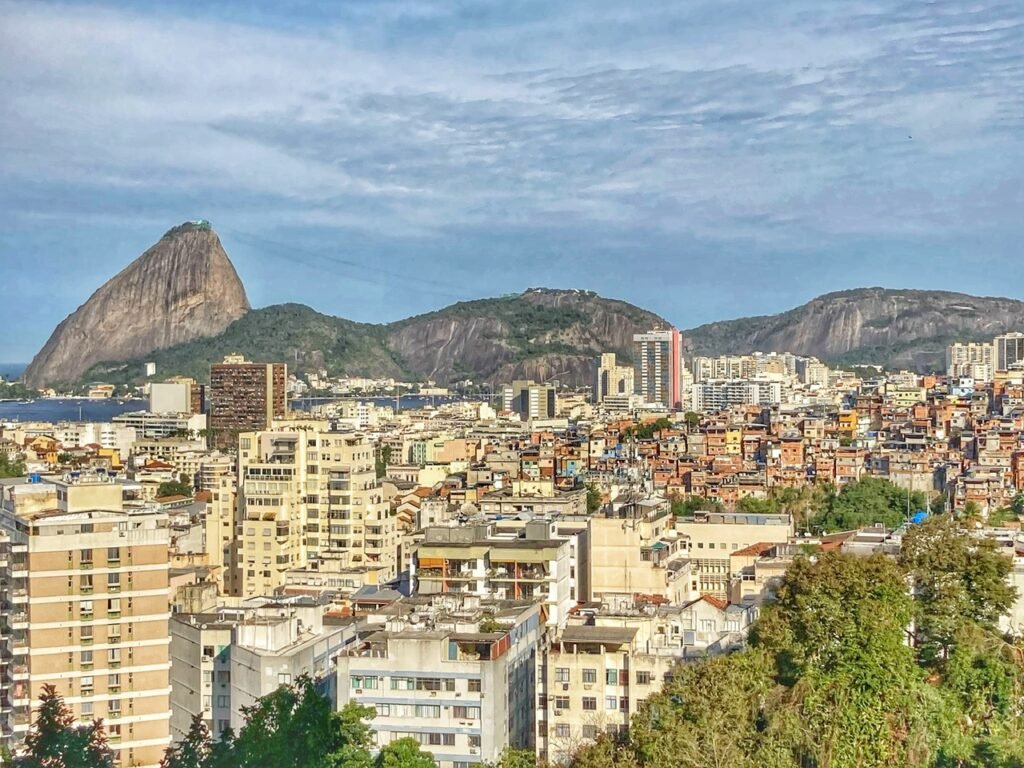
The adorable historic street car or, the “bonde”, as locals call it, is the oldest tram line in Rio de Janeiro. It is the only line from the original tram system, that was build more than 100 years ago which used to be one of the most developed in the world. Unfortunately, after two dictatorships, almost nothing, but this is left of that system. It costs 20 Reais ($4.16) per person round trip. Although it’s genuinely cute and appropriately clattering, it’s also unappealingly packed and we preferred to walk anyhow. And the views going up aren’t too shabby either.

A dreamy look in this girl’s eyes means you’ve arrived to Santa Teresa.
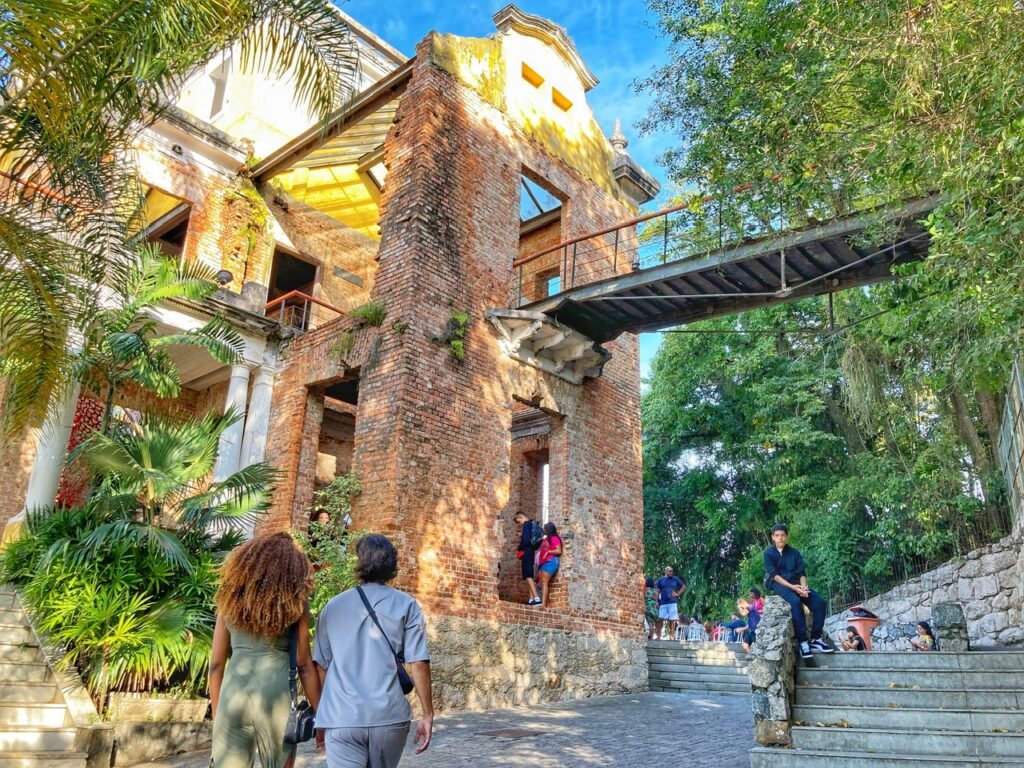

We arrived to the Parque das Ruínas, the ruins of a prestigious mansion from the late 19th Century. In this house, Laurinda Santos Lobo commanded one of the most effervescent salons in the BelleCarioca era. In her soirées, every 4th day of the season in Rio, she entertained her guests with music, poetry, dancing and an impeccable kitchen service. In 1996, the city invited the architects Ernani Freire and Sonia Lopes to develop this project, which combines modernist iron and glass structures with the ruins of the neo-colonial palace. Inside the ruins, the blending of ruins and modernity was quite interesting, but otherwise it just looked like Valentine’s Day threw up.
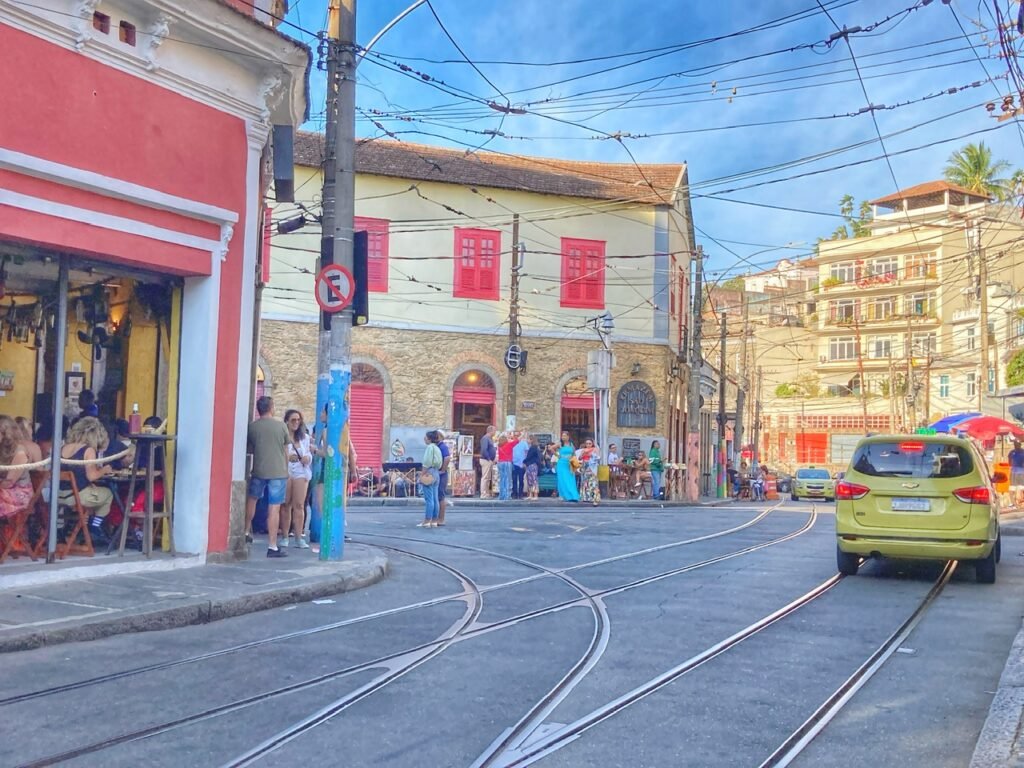

Streets of Santa Teresa

Mandy waiting for a ride.
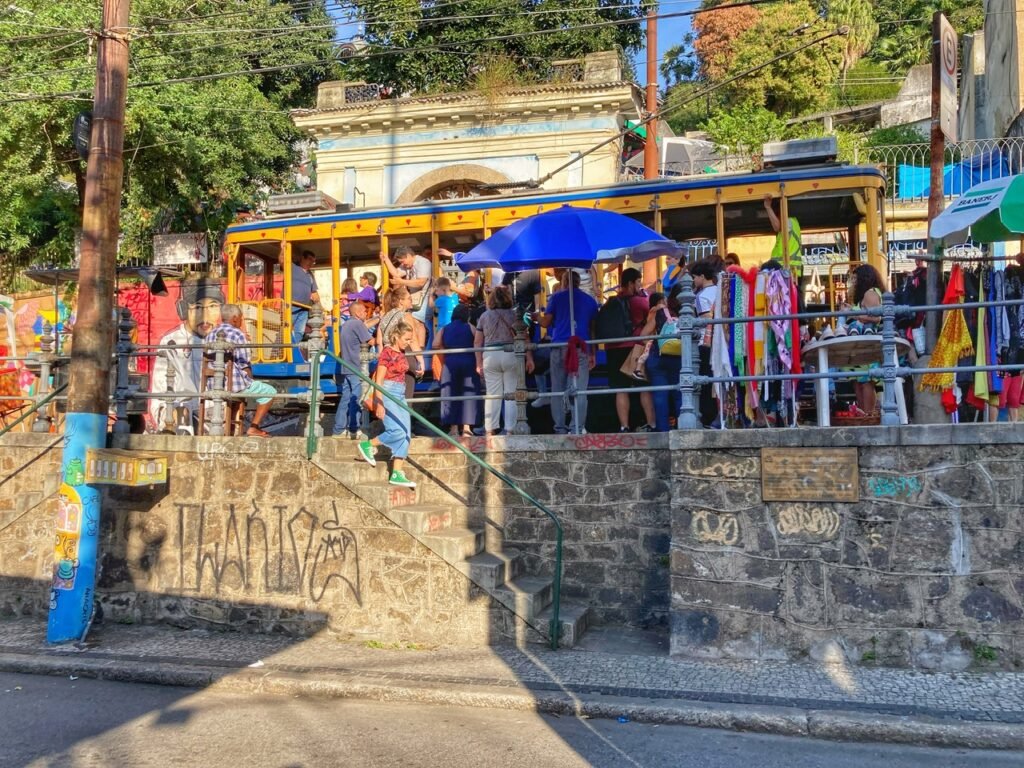
The real line for the street car. Ugh.
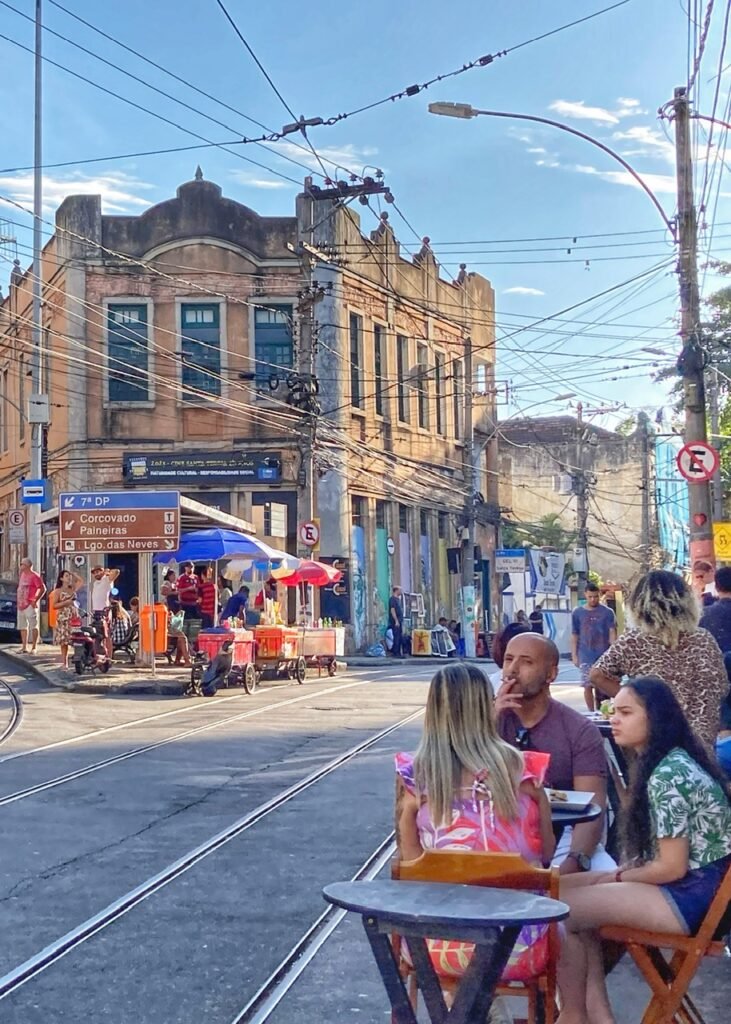

In typical Mandy and Greg fashion, it was only 3:30 when we arrived and the party was just getting started, which meant there was disappointingly only one drink guy ambling in the street.

The balconies and party vibe are what really reminded us of New Orleans
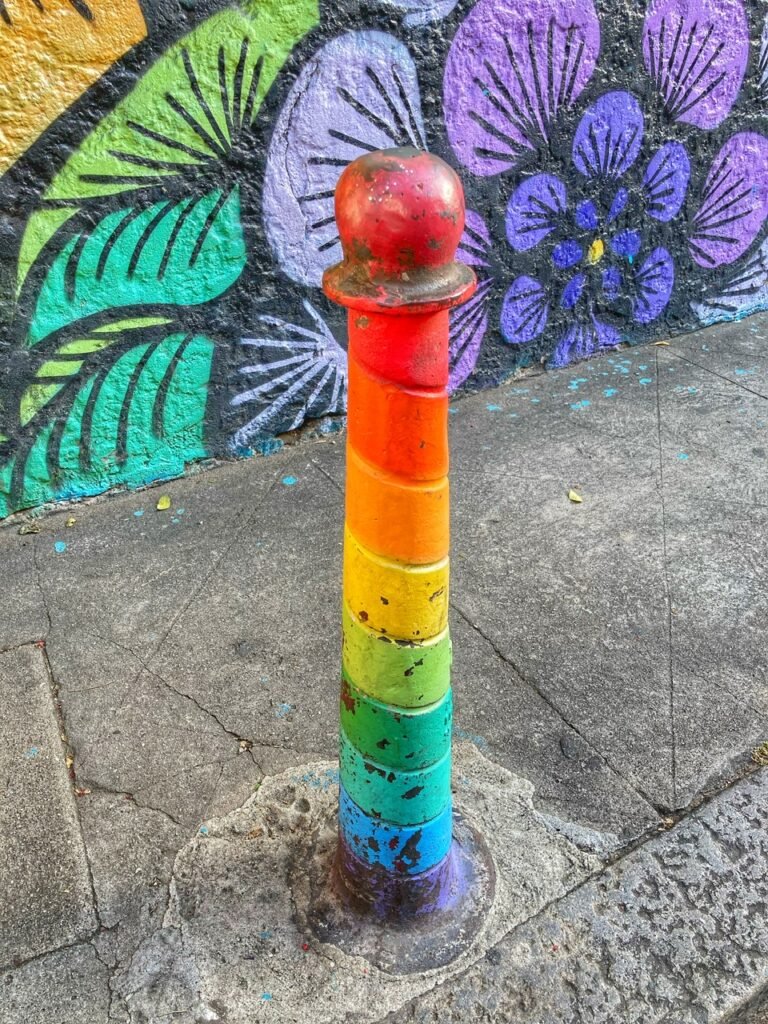
And, like many places in Rio, there were always lots of welcoming rainbow splashes.
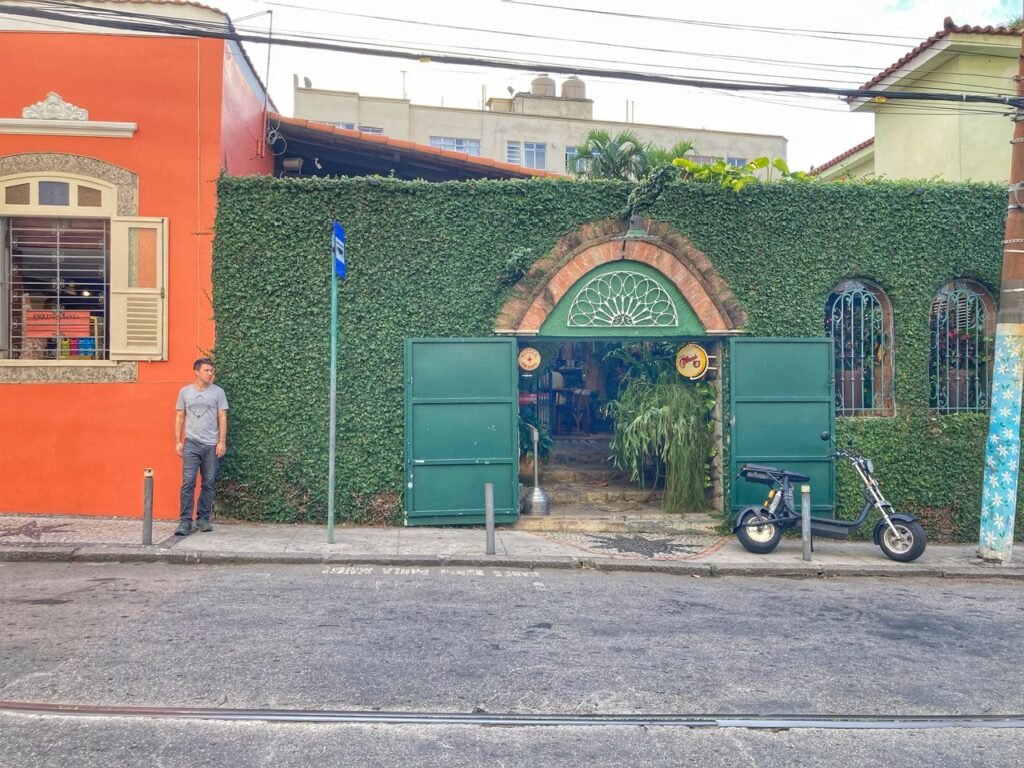

With its leafy green entrance and lack of people, this is the cafe that sucked us in. Esquina de Santa…we split a giant 600ml beer for 14 Reís or about $3.
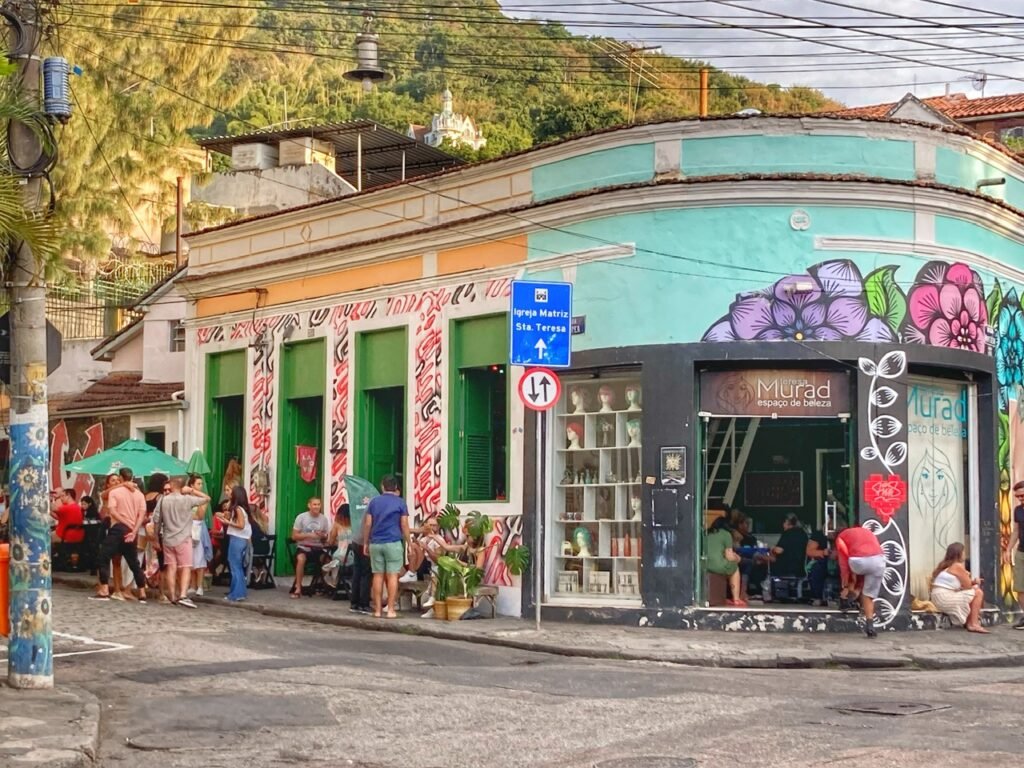
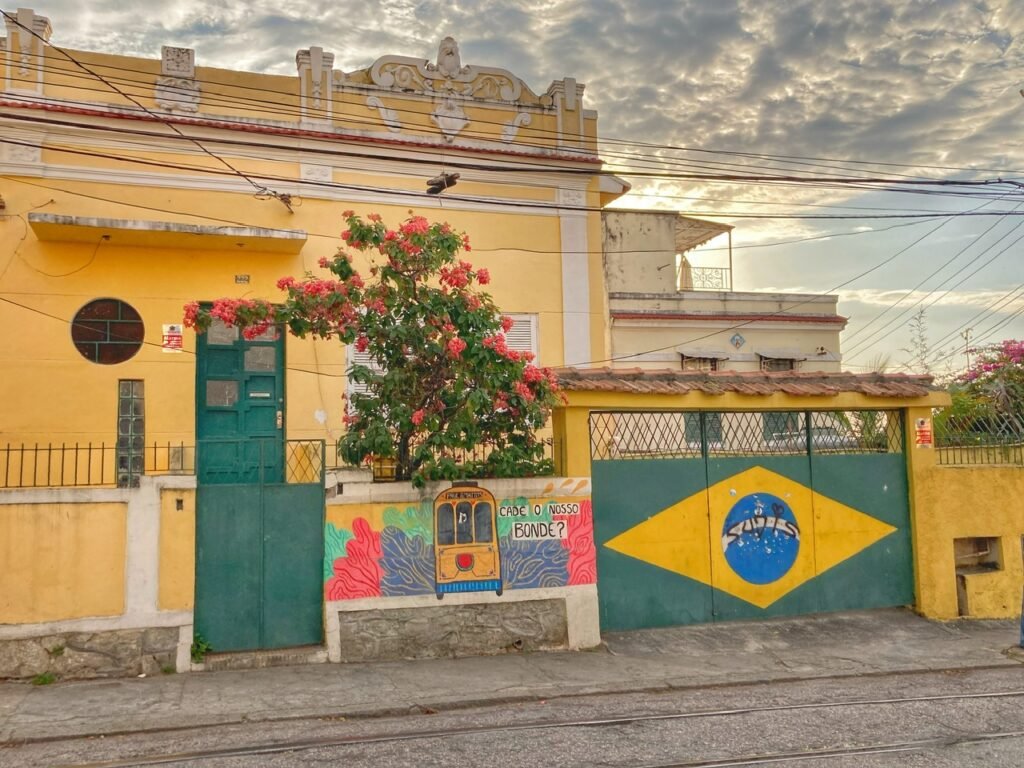
More street vibes! Tons of charm, character and color!


The main square in Santa Teresa, including the church…which looked a lot like some churches in Colombia.

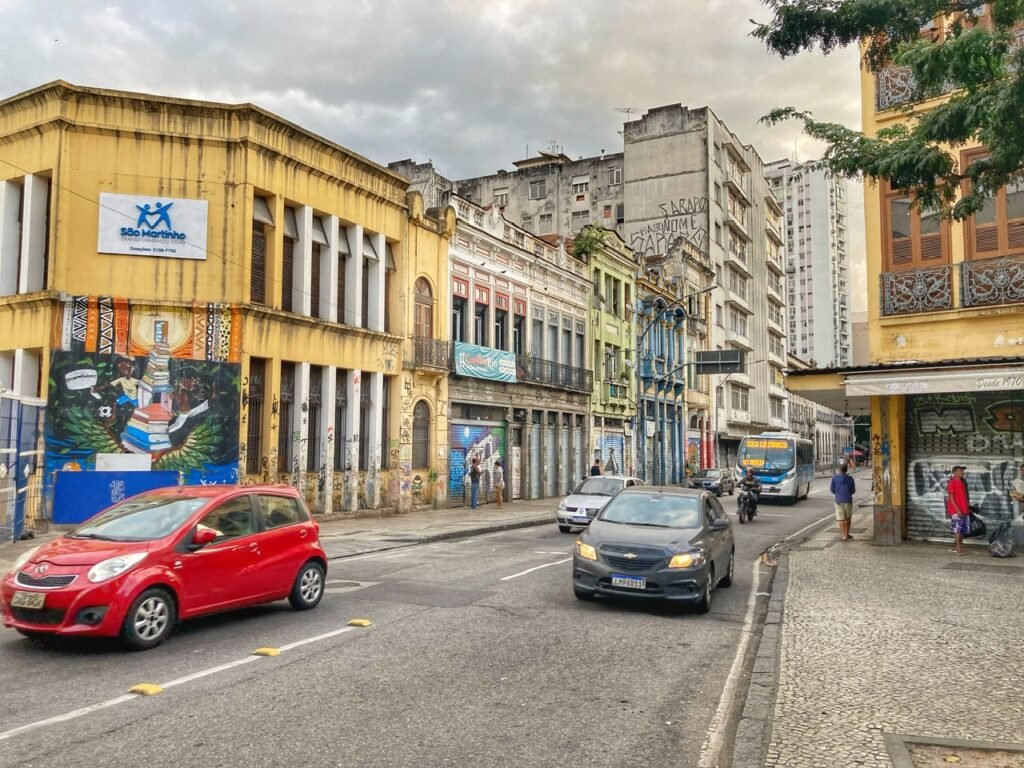
Heading back down, we winded out way through Lapa, which was definitely edgier and a little bit grittier than Santa Teresa.
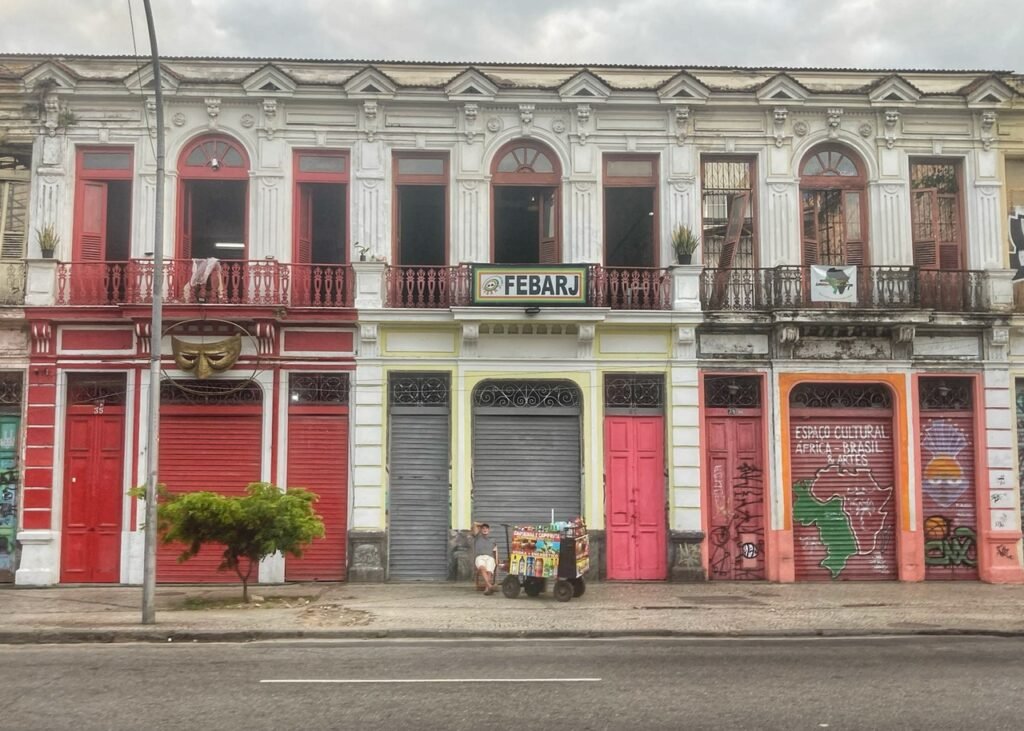

The Roman-style Carioca Aqueduct, also know as “the Arches” is a rare sight to see in this part of the world. Its construction began in the early 1700’s and the reason for it was at that time the city suffered from lack of water. It extended 270 meters and has 42 arches and is the largest and most important colonial building in Brazil. Like most buildings of the time, it was built by indigenous and African slaves.

Sitting behind the Arches, you’ll see quite a contrasting site…a Jetsons-esque….cathedral?! Did the Mayans blast to the future and leave it for current generations? Construction on the massive space age cathedral began in the late 1960s, and continued on into the 1970s. Oh, never mind that explains it. It was designed by architect Edgar Fonseca, and was indeed intended to echo the ancient Mayan pyramids. The beehive can hold a miraculous 20,000 people. What a bewildering site.
Christ the Reedeemer (aka Mount Corcovado)

Christ the Redeemer, towering over Rio de Janiero at 2,310 feet (704-meters) is undeniably the most iconic image of Brazil and one of the world’s new seven world wonders. The colossal statue itself, the largest Art Deco style sculpture in the world, is 98 feet (30 meters) and was completed in 1931. Seeing it in person leaves you a bit awestruck, especially because of the surrounding views of what is easily the most beautiful modern city we’ve ever laid eyes on.
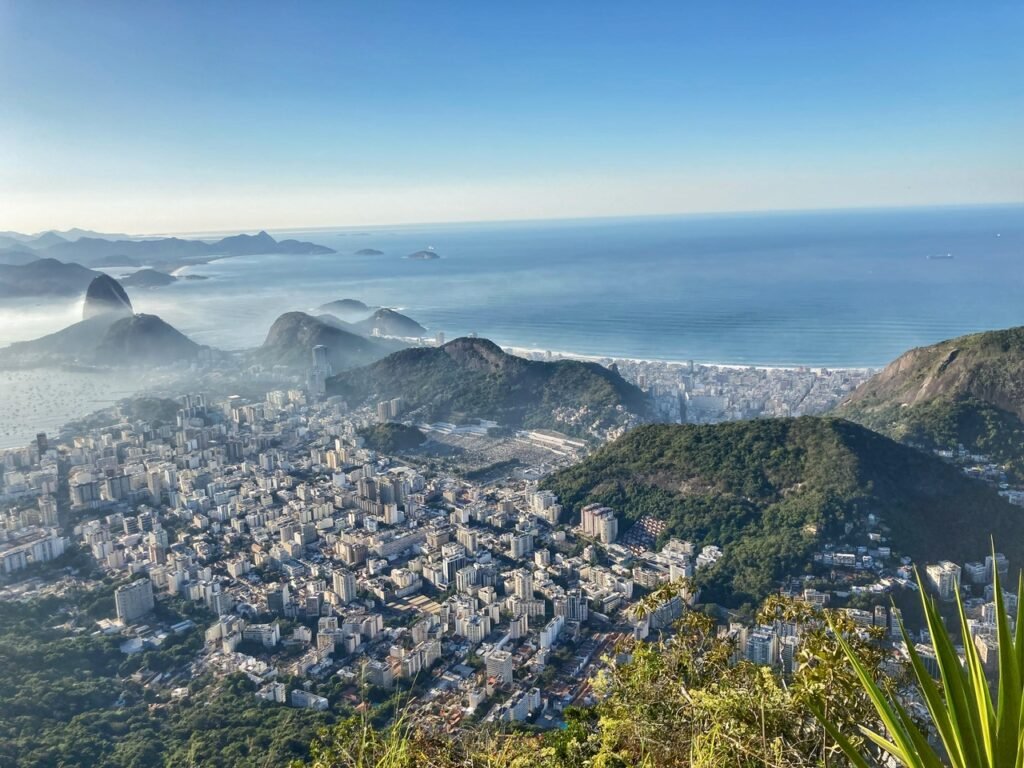
He sits on Mount Corcovado, which means “hunchback” in Portuguese. Locally the site is known as Corcovado, which has a commanding vantage point of the hooligans on the beach below. Probably not a terrible idea for this party-loving Carnaval town. 🤣

We were very lucky (blessed?) the morning we arrived to find what appeared to be a priest’s pilgrimage gathering at the top.

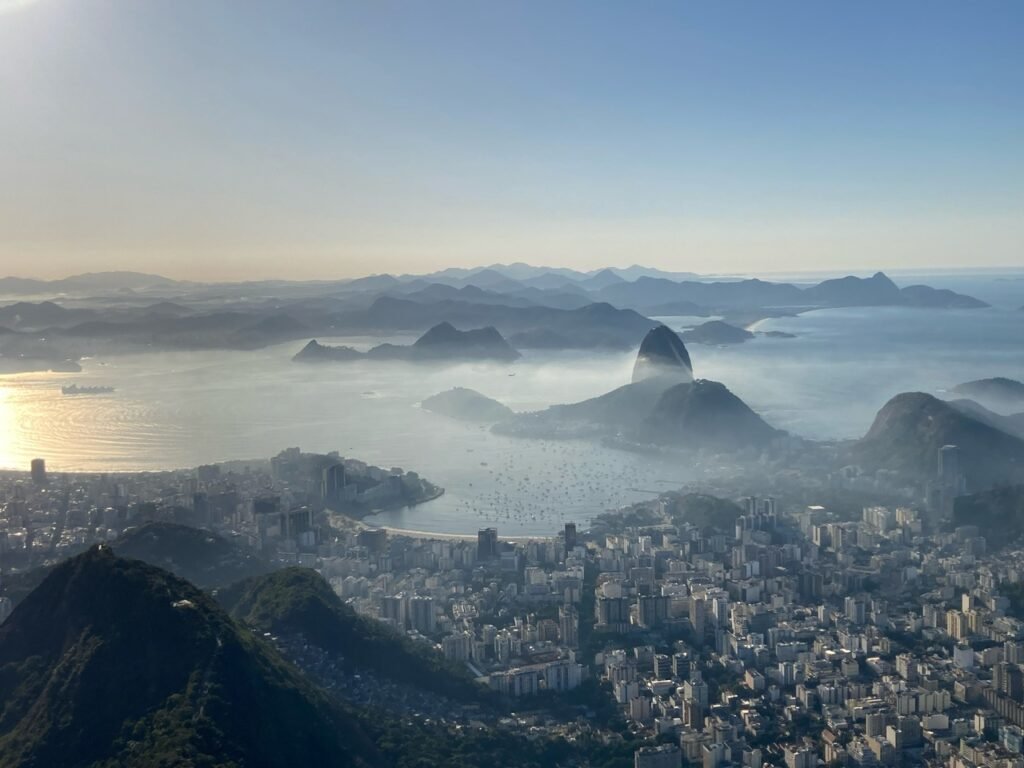
Up close and personal, you can see it is made from concrete…reinforced concrete, complete with much needed lightening rods, and 6 million soapstone tiles, a type of metamorphic rock. It weighs 635 metric tons.And the day, like many, was perfect with crystal clear skies and temperatures in the mid/70sF (mid 20s/C). We never managed to understand why July is considered “low season” in Rio, and why so many tourists insist upon coming during the heat of their summer.
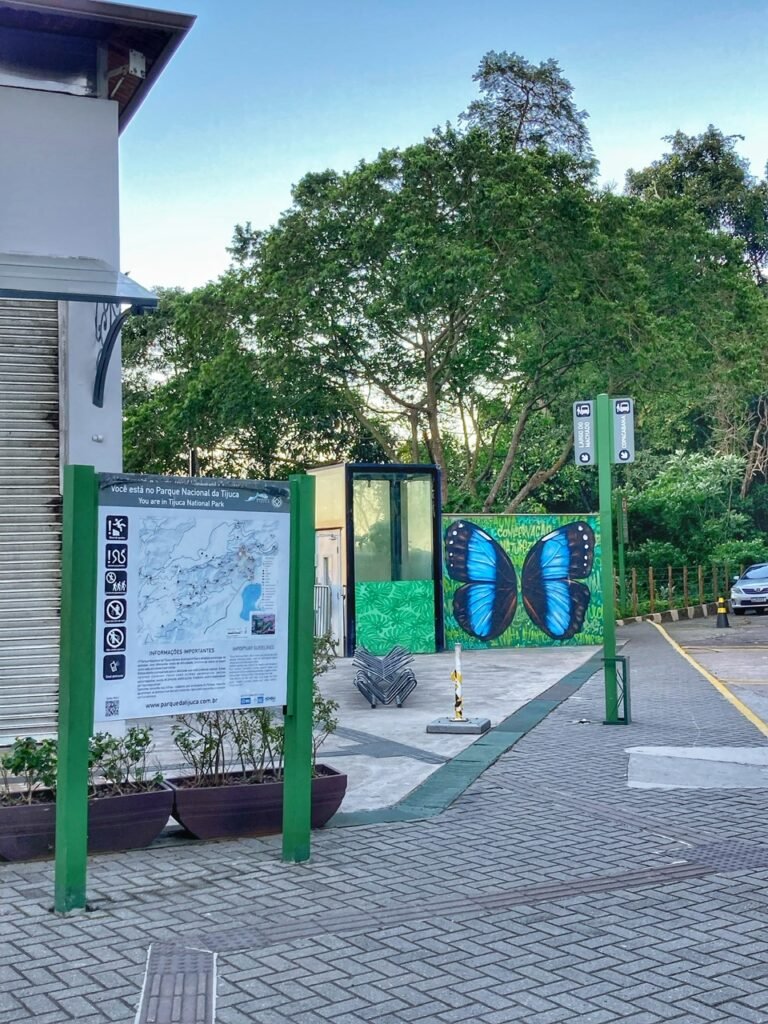

To see Corcovado, there are several ways…an expensive train, a less expensive van or the cheapest, which we naturally chose…the Uber to walk combo, which cost us 12 Reais ($2.50/one way) because we shared it, along with our day, with friends Brian & CC (from the Amazon slow boat!) To go, leave by 7 am, and have the Uber take you to “Paineiras Corcovado.” (Also note: for even cheaper, you can hike to Paineiras from Parque Lage, but it is very steep and not known to be safe.)
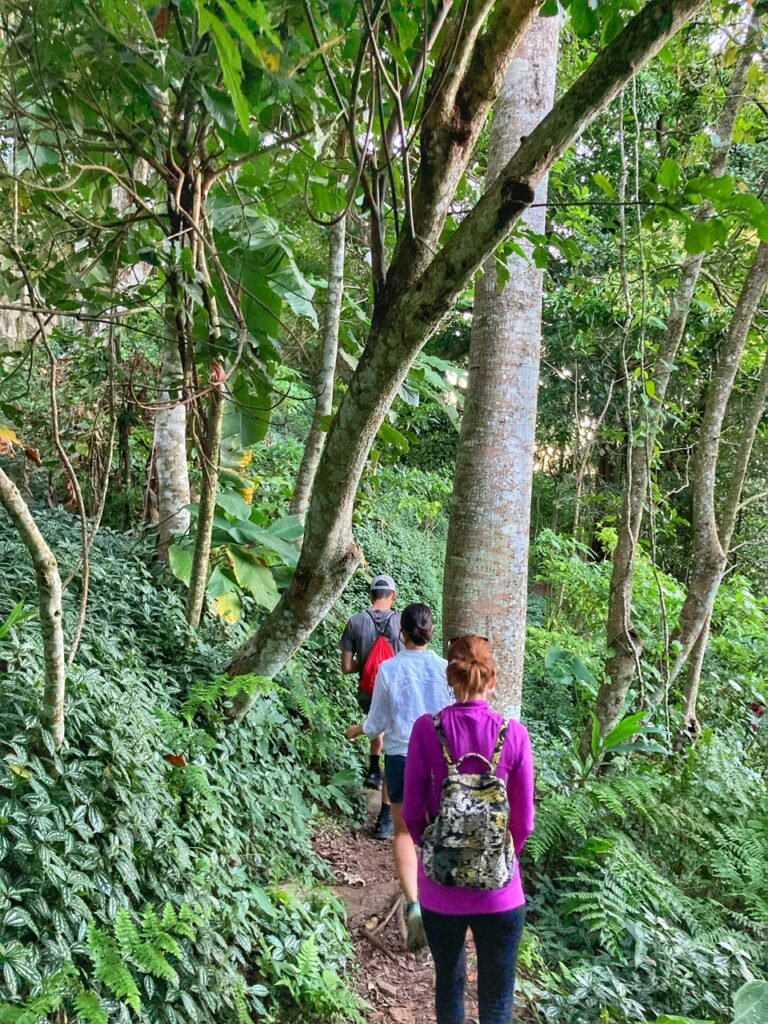
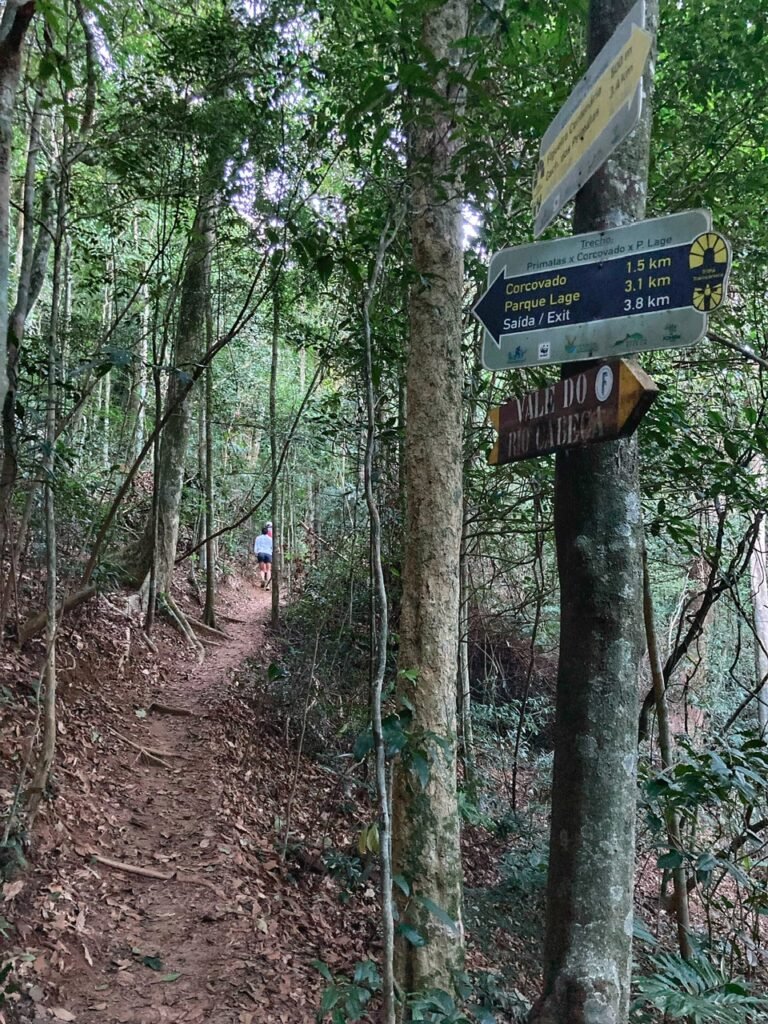
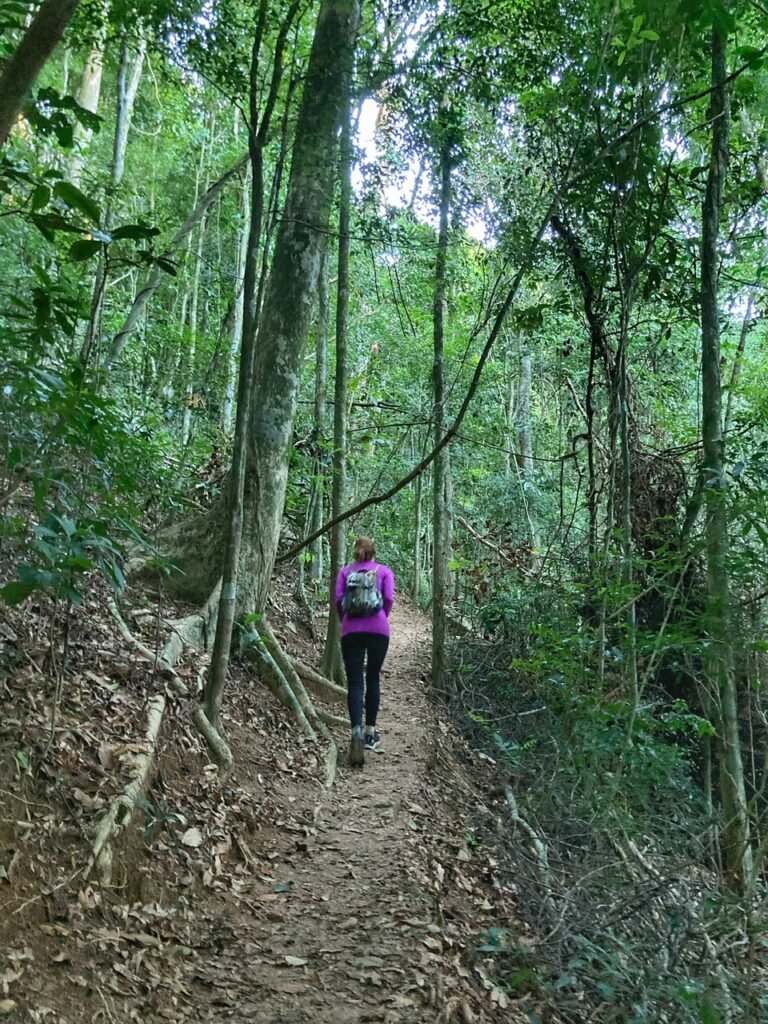
Once here, look for the Bruce Trail to guide you the rest of the way up. It’s about 2 kilometers and a fairly easy trail. Even though, Brian and CC quickly left us in their very ambitious dust. What’s the rush? Think there’s gonna be a line at a world wonder…? 🤣
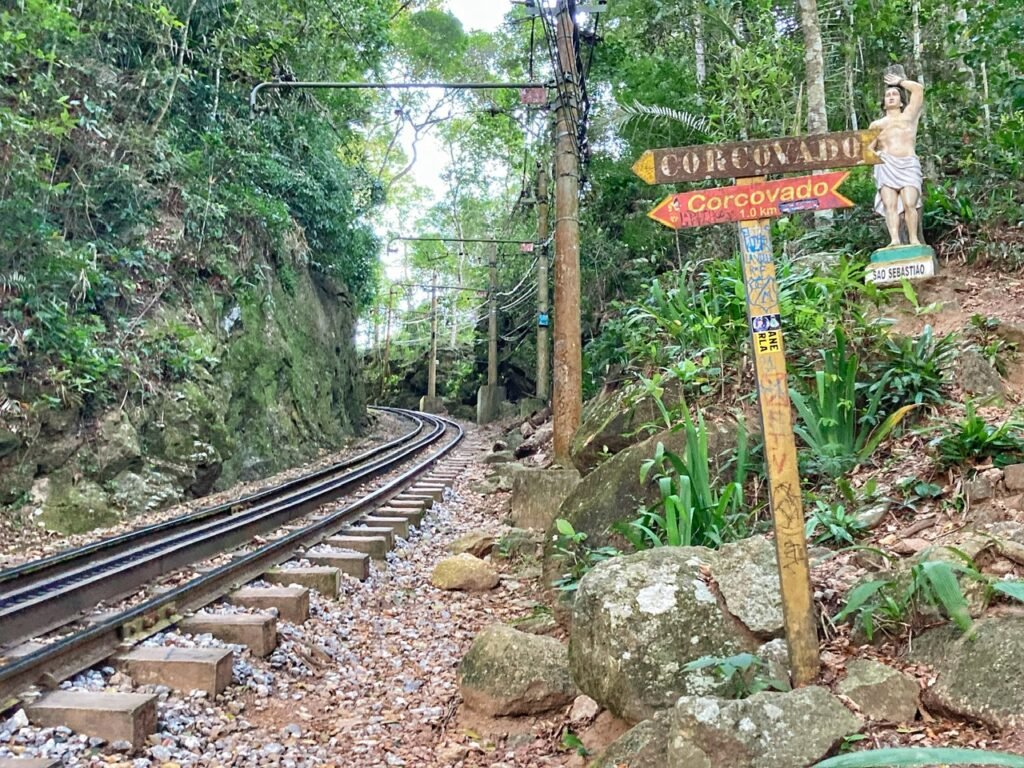
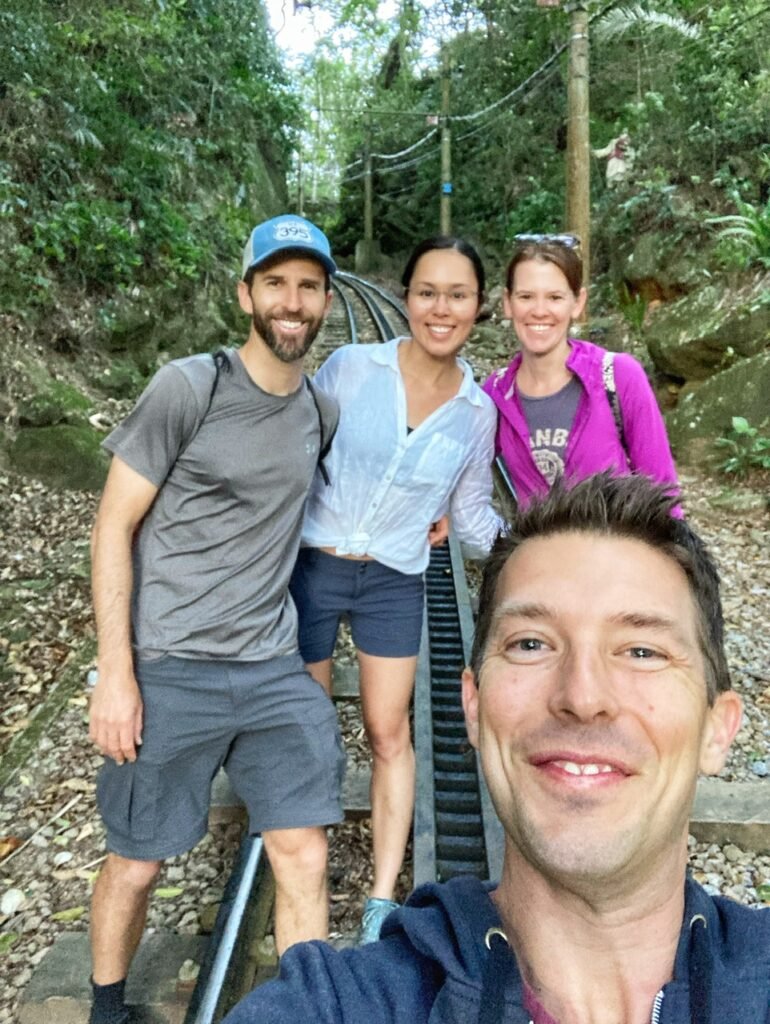
Crossing the train tracks. So fantastic to share this experience with friends…


…particularly Portuguese-speaking friends who got us in the back door early! This way to Corcovado. And no, it wasn’t free. We still had to drop 107 Reais ($22/two) to enter the site. Make sure to bring cash!

And finally He is Risen before us! Just follow these escalators to….heaven?!


This was our sixth world wonder for us after Petra, Colosseum, Taj Mahal, Machu Picchu and Chichén Itzá. Who knows where the last one will be?

The heart of Rio…aka, another view of the polluted lagoon! It’s definitely not heart-shaped, for the record.

Getting up here at opening (8:00) was definitely the way to do this. By the way, it is actually possible to go inside his holy body, but there are several requirements, including having authorization from a bishop of the Catholic Church. Those that get inside, go through 12 flights of very fragile stairs and require strength and resistance as many stretches are very narrow. There is also a platform that allows you to walk on the arms of Christ. There are two openings on each arm so repairs can be carried out.

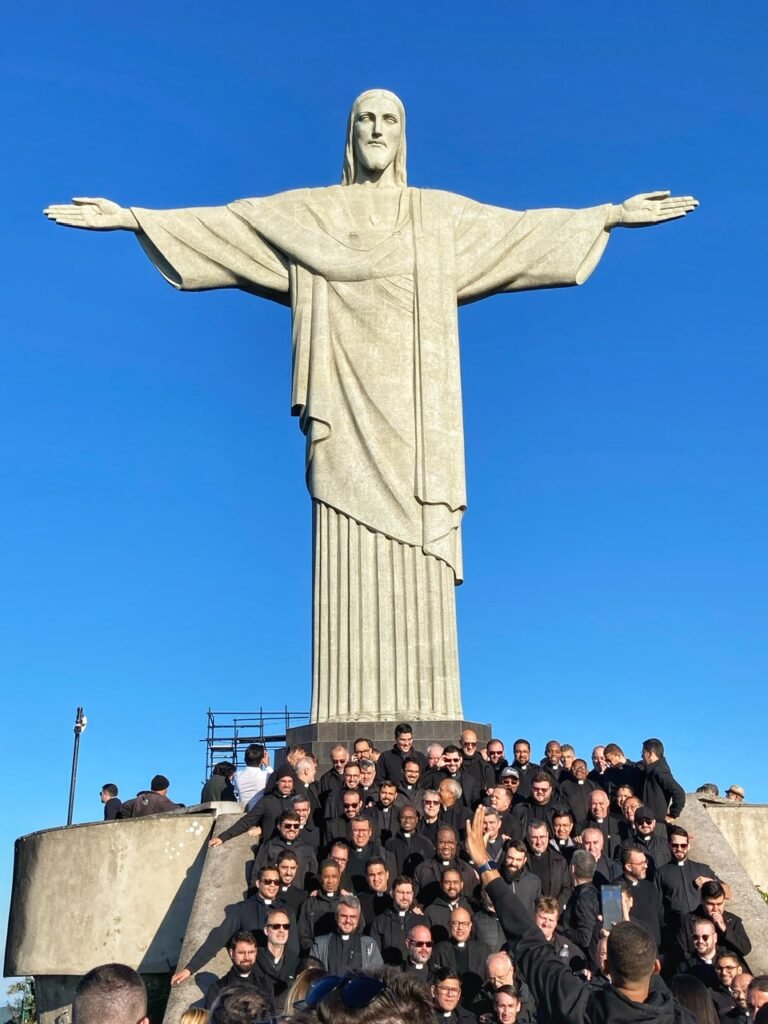
The pie in the sky completed the moment perfectly. As well as the priests, who trapped us on the outer platform (and also sung for us.)

Selfie with Jesus! What a sight!

The side you never see 🙈
Saúde & Pedro do Sal

The neighborhood of Saúde is officially the birthplace of Samba music. Saúde, means health in Portuguese and also how you say “Cheers.” (It’s pronounced Sow-jay, because the D is pronounced like a J in Brazilian Portuguese.)


Within this neighborhood you can find a charming alleyway leading up to the Brazilian stairs, or Escada da Bandeira do Brasil as you will find it on Google Maps.
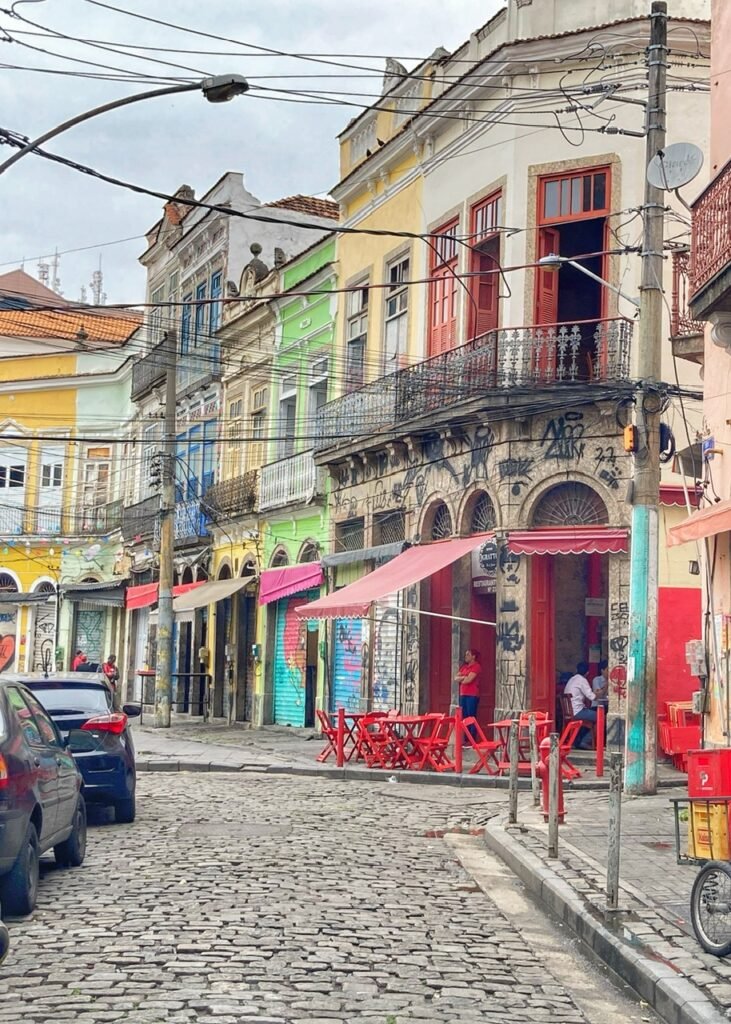
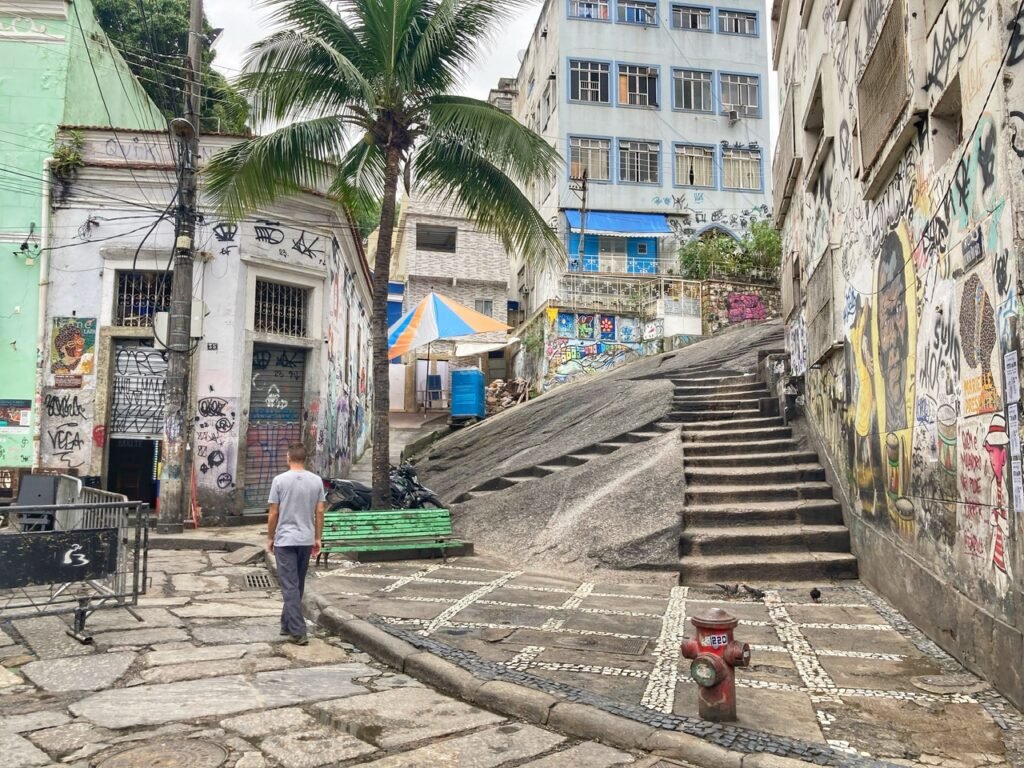
And most notably, you can also find Pedro do Sal, today packed with a punchy palette, people and parties. However, this is in actuality is a historic site very meaningful to people of African descent within Rio. Around the early 1600s, it was used as a large slave market during Brazil’s brutal trading days, in which salt (sal) was swapped…for people. As the years passed, and slavery was finally abolished in 1888 (the last country in the western hemisphere), it became a thriving African community, which eventually led to the birth of Samba music in the 1950s.
We are very glad to have visited it by tranquil leftover-party-scent Tuesday and by untamed Monday night, along with friends Ian and Nicky, of the blog, “Above Us Only Skies.” The contrast between these two visits was unbelievably stark. Even with our own pulsing hangover reminders, it was completely unrecognizable from the night before.


And the night before, we’d also not had the opportunity to appreciate the abundance of street art which celebrates the culture and talent of Brazil’s African descendants.
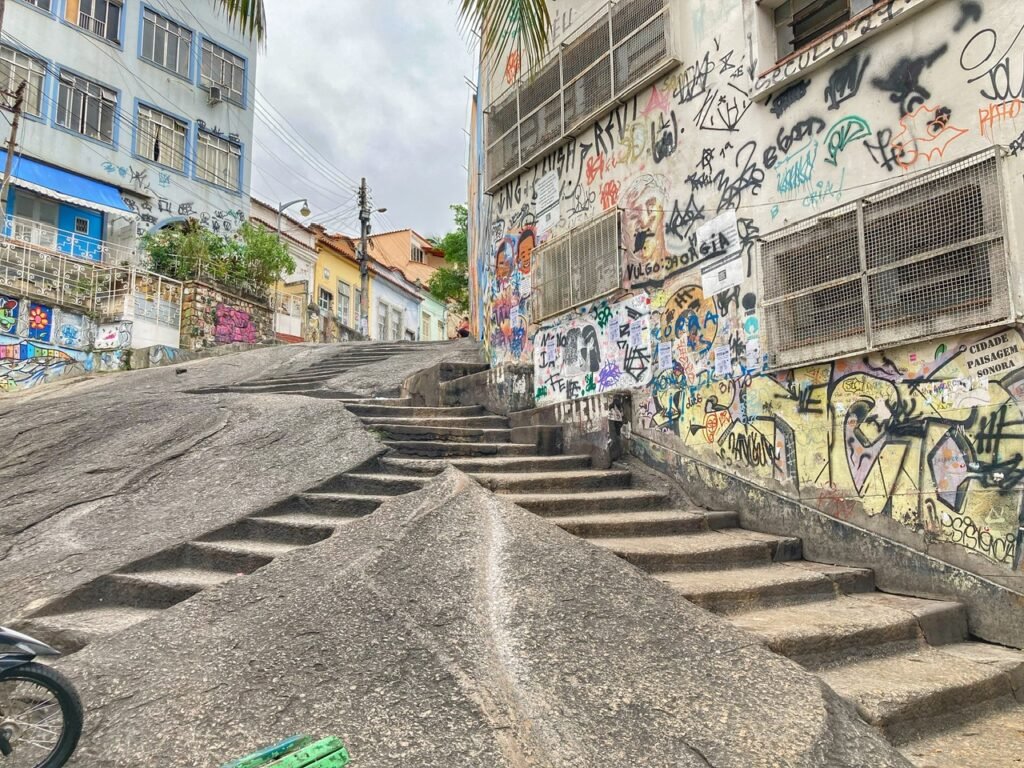
This area was at one time a Quilombo village, which held houses of freed slaves.
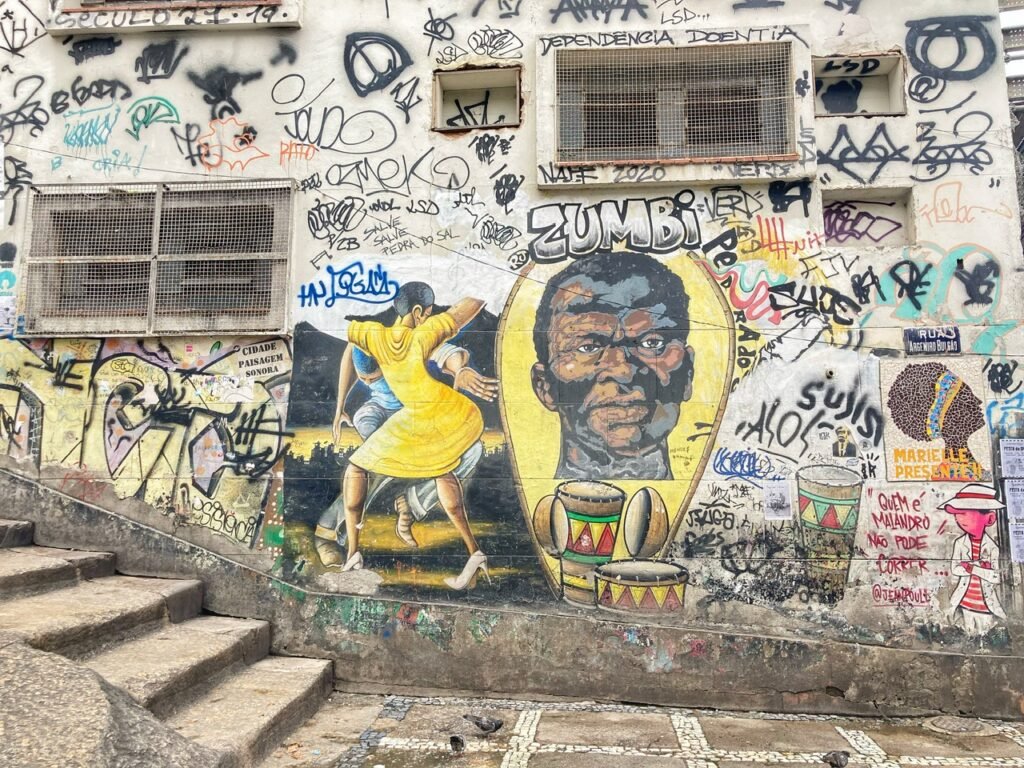
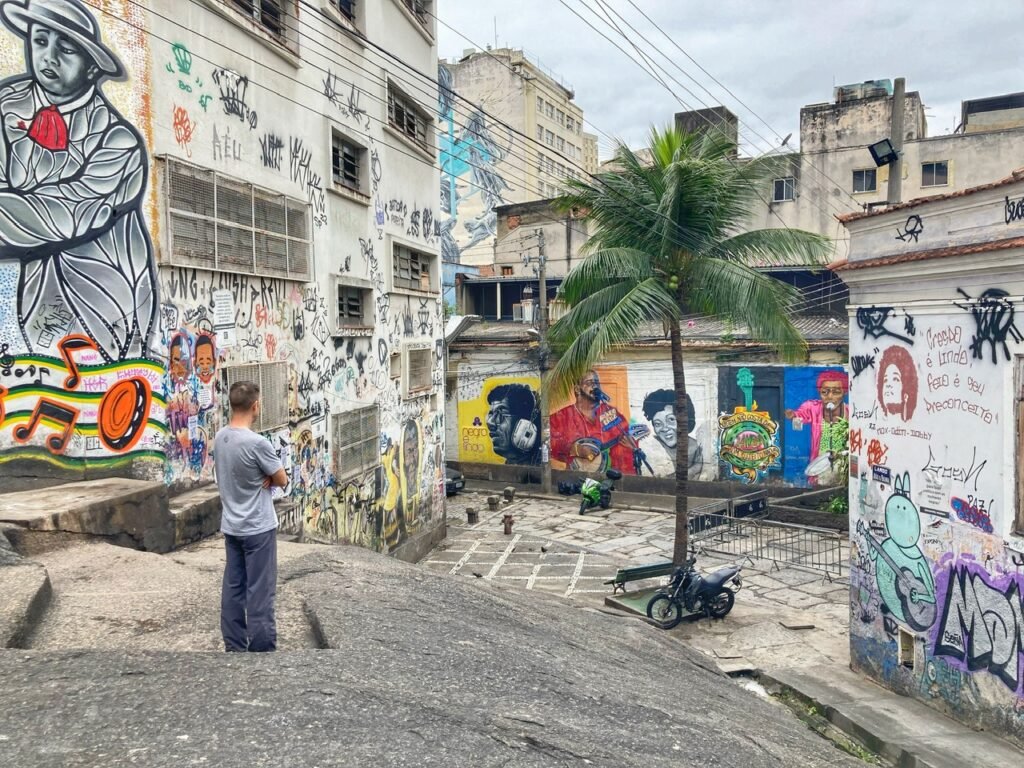
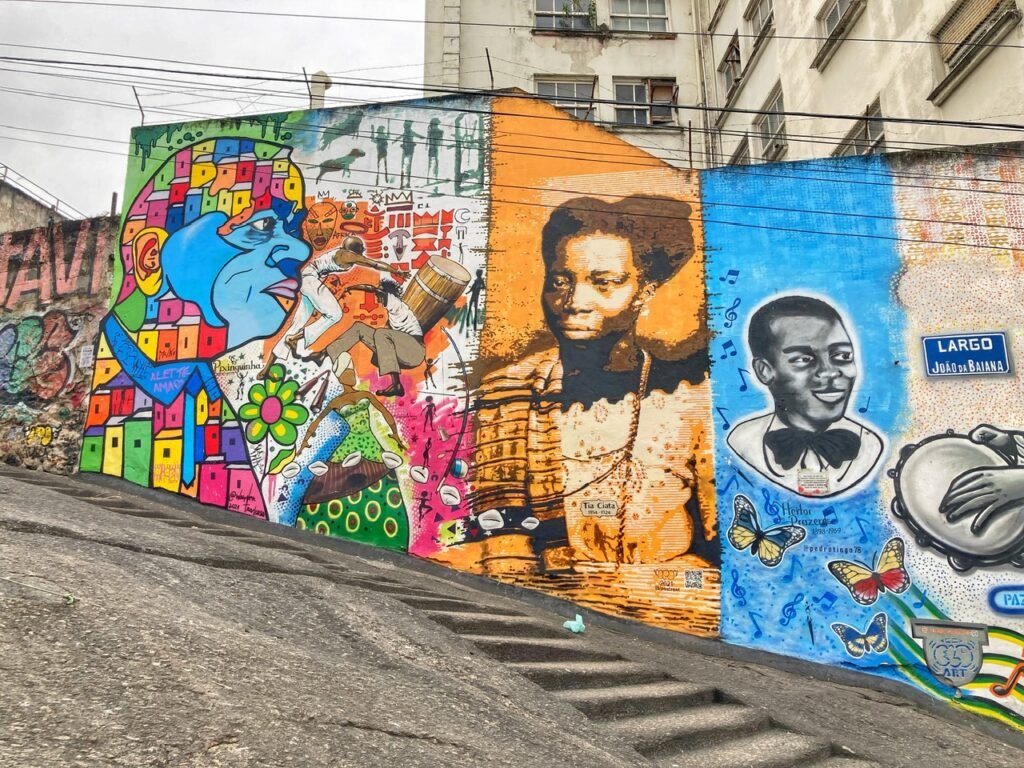
Samba has its origins in the 19th century in the traditions of African slaves who brought their drums to Brazil, where African and Brazilian cultures merged. It was almost eerie to be there all alone after experiencing a wall-to-wall crowd the night prior.
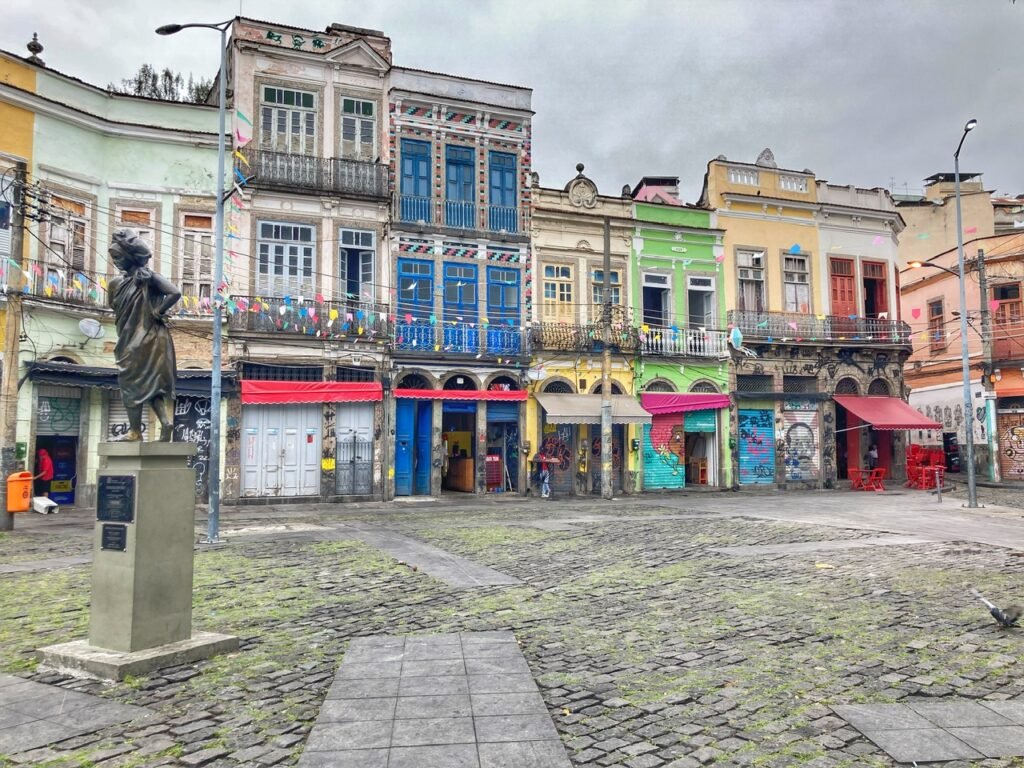
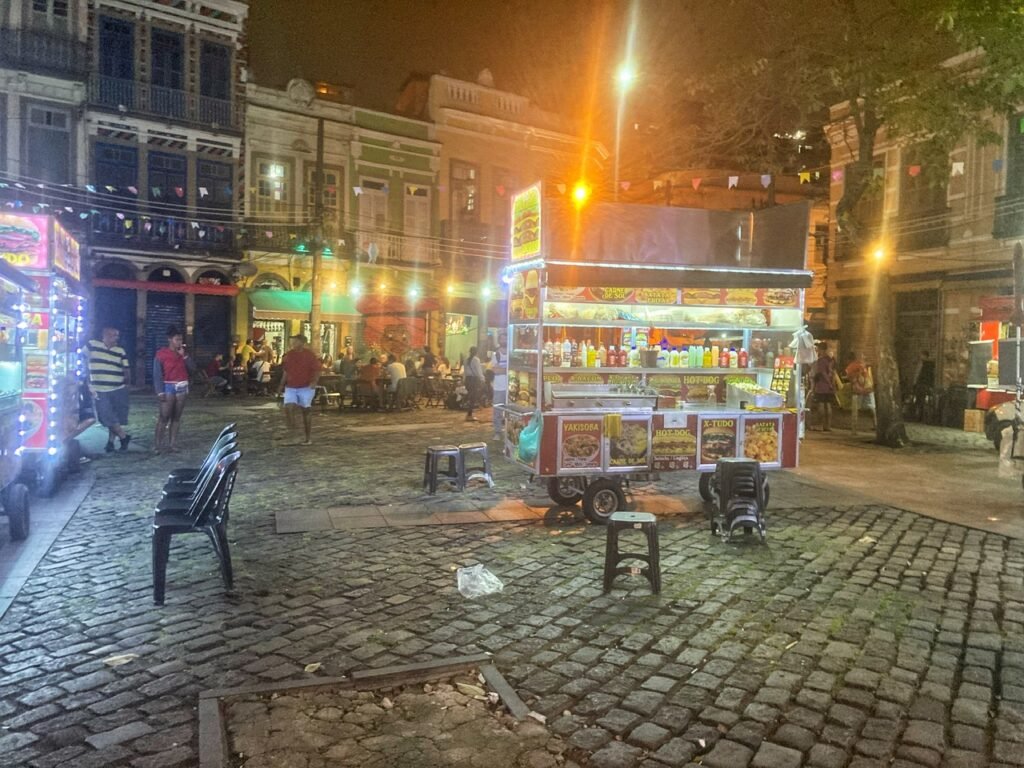
The day shot of San Francisco Square, followed by the forget-about-a-nice-quiet Monday night shot. This is THE place to be on Segunda-feira for Samba parties. It was still early (about 7:30 pm) when we took this photo. (What we still deem as an appropriate time to be out. 🤣)
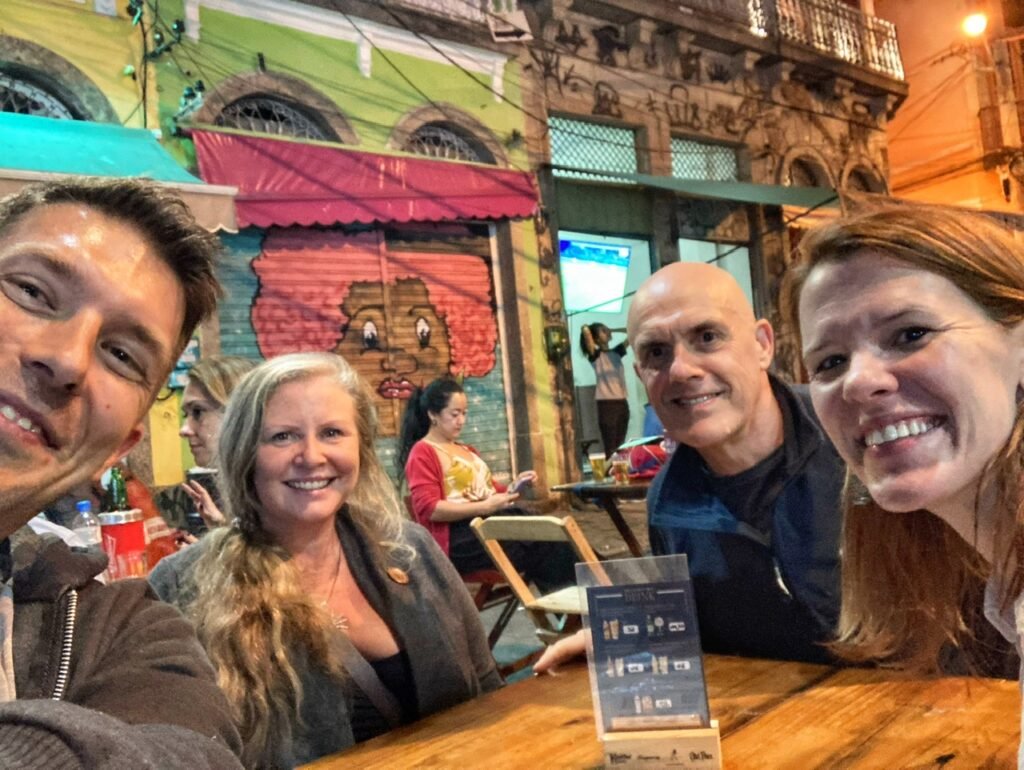
Grabbing a drink with friends, also bloggers, Brits Nicky and Ian. They’ve been nomads eight years and have slow traveled Brazil for nearly six months, so if you’re interested in this country particularly, they have a lot of great information on their website at aboveusonlyskies.com. We were glad they motivated us to stay up past our bedtime and haze us into a necessary Brazilian nightlife experience.

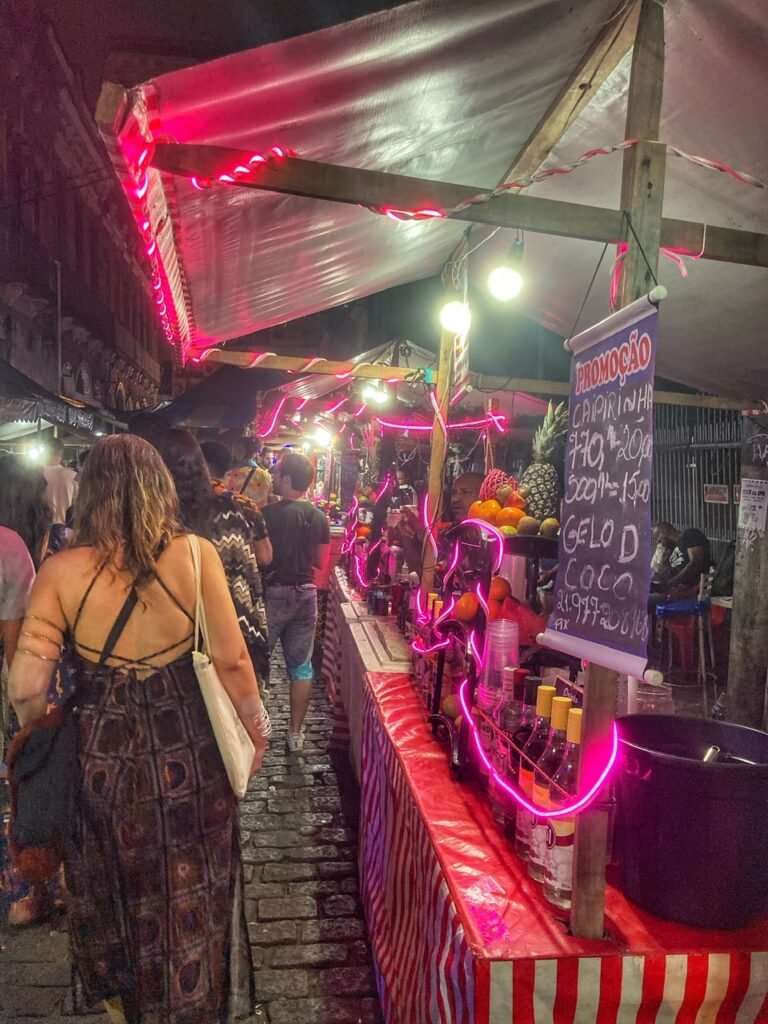

Working our way towards the party, we noticed LOTS of animals on sticks for midnight meat cravings. But way more than meat, was of course the very readily flowing alcohol. And if you didn’t offer a caipirinha (Brazil’s National drink) at your stand, you might as well pack up and go.

After wading our way (cautiously) through the suffocating sea of Gen Z’s, we excitedly found a place to rest our tired hips up on the incline of the massive Pedro do Sal. Breathing space! Complete with rolling plumes of cigarette smoke! Yay!!
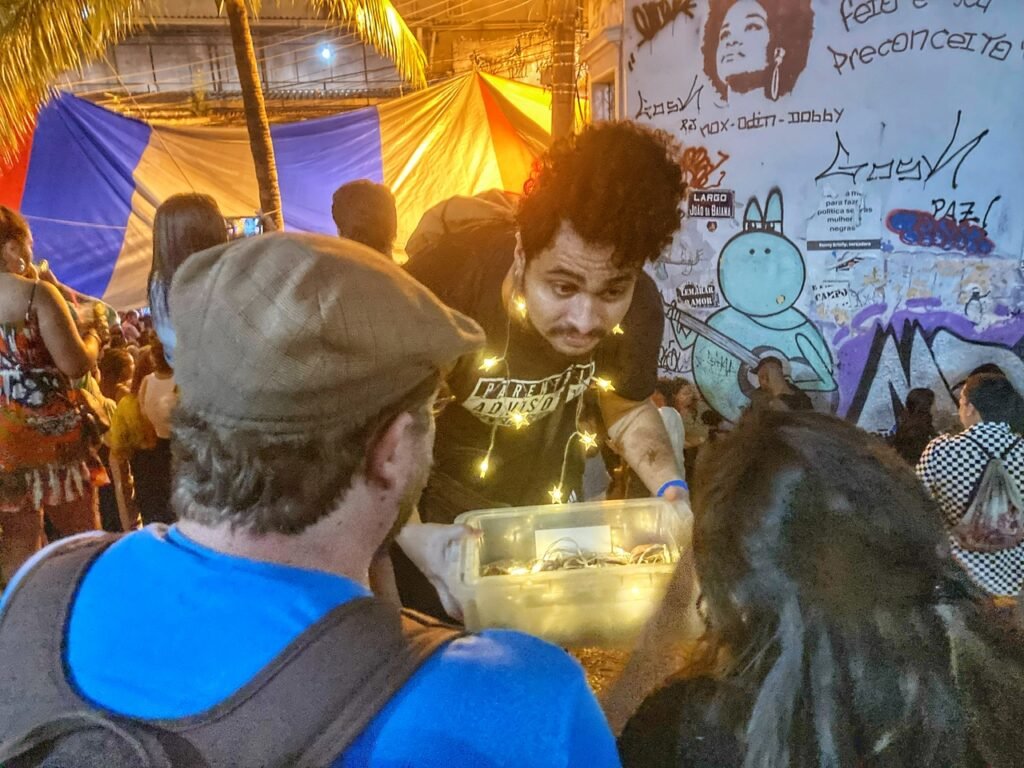
We were also shortly greeted by a Pot Brownie fairy, but although he said they weren’t that strong, he nearly rolled off the rock as he turned around from us. Um…yeah, being that we’re in foreign country and…that…we chose to stick with alcohol. In the form of delicious alcohol laced passion fruity caipirinhas, which went down like fruit juice for the bargain price of 50 ríales for three, or about $3.50 each.


So yes, we got pushed out of our comfort zone…again…which is almost always a good thing. It’s all about the experience, which at least prior to the laughable 11:00 (when we poured ourselves into a taxi), we were disappointed to hear no samba music, although reportedly it was there? 🤣Regardless, it was still fun to hear the crowd belting out some really catchy Portuguese sing-along songs, undoubtedly their versions of “Don’t Stop Believing” or “Living on a Prayer.”

Have fun kids!! 🤣
Exploring Rio’s Center
A few stops down the metro line from the tourist havens of Copacabana and Ipanema, you will find the center of Rio, which we quickly learned is much cheaper, much more cultural and much more interesting. The best way to explore it is to just get out and walk. When you do, you’ll find a futuristic, (and kind of depressing), Museum of Tomorrow, one of the largest street murals in the world dedicated to indigenous people, a Portuguese palace and lots of color, energy and life.
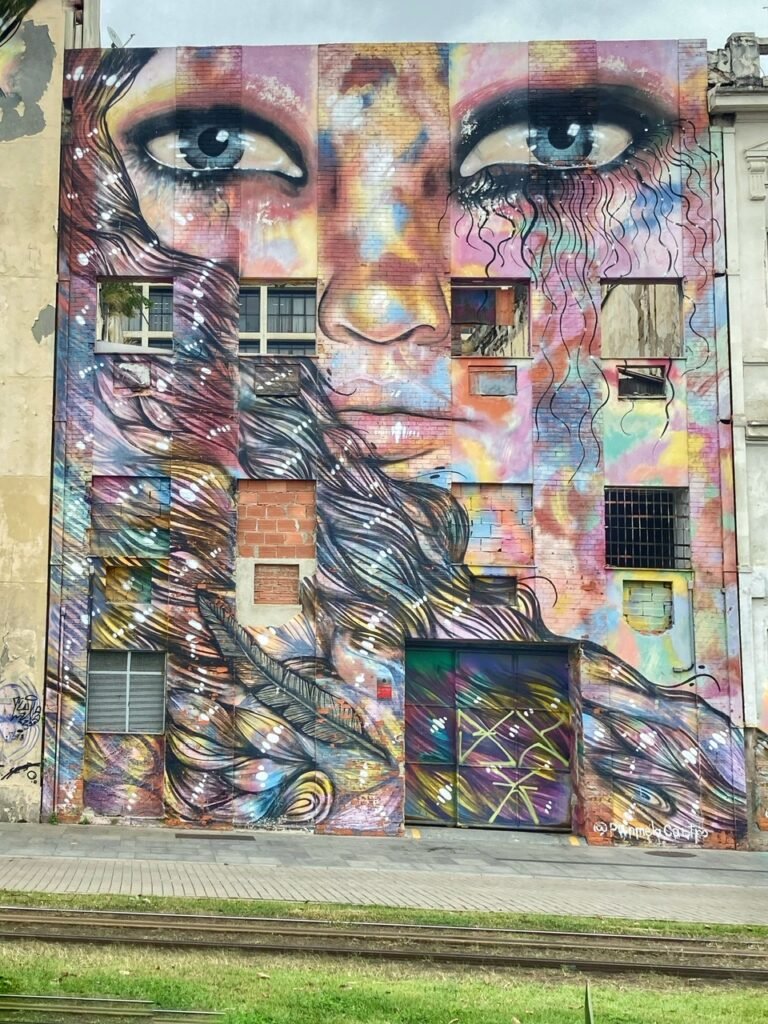
Street art along Olympic Boulevard was created just prior to the 2016 Summer Olympics.
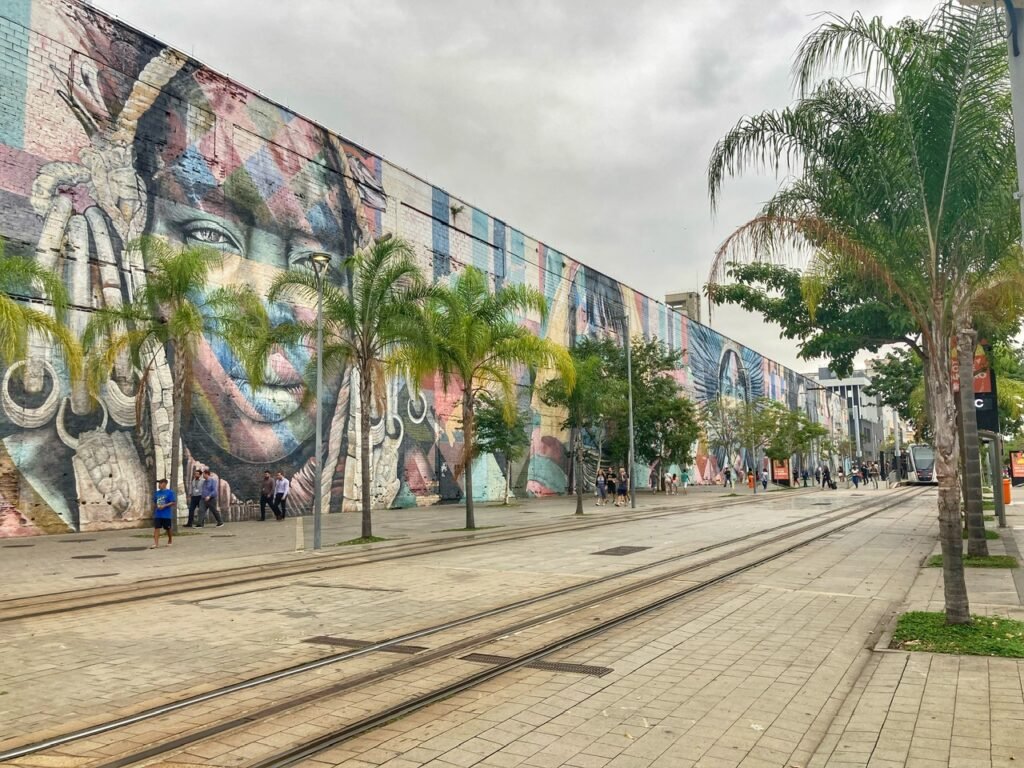
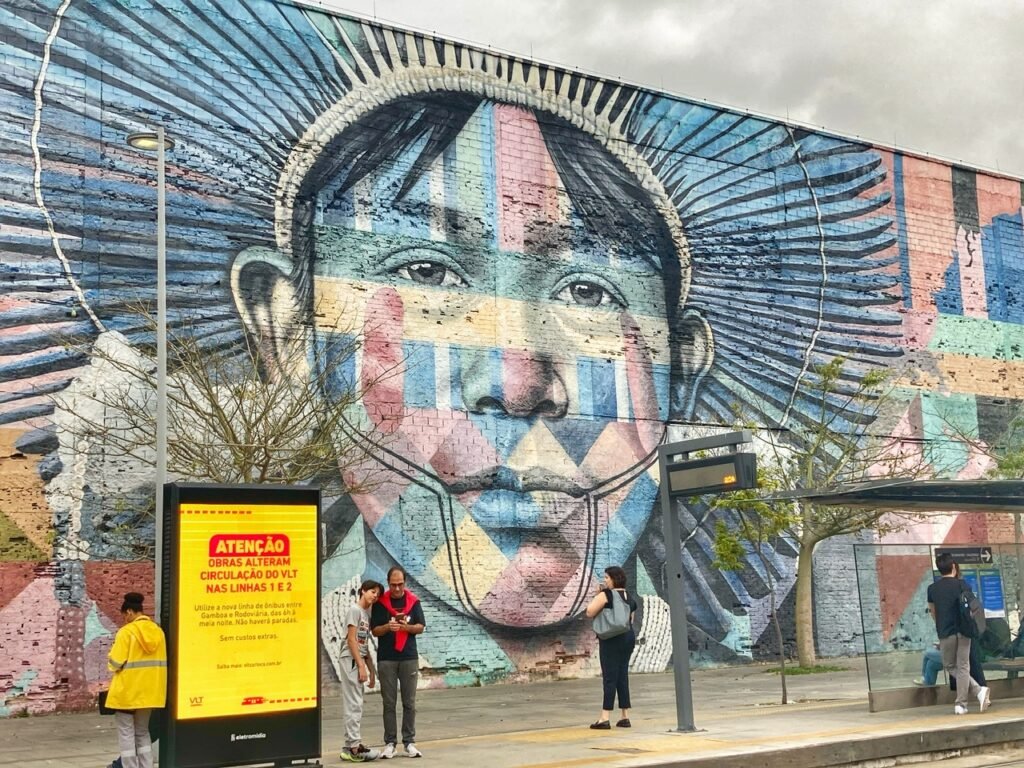

Among that remarkable street art is a masterpiece called Etnias, which is the largest mural in the world made official in August 2016 by the Guinness Book. It is already sadly faded from its original condition. The mural is 15 meters high and 170 meters long with a main message is to portray, through the union of the Olympic rings, peace and unity among people. Created by Eduardo Kobra, the artist had the idea of uniting the five Olympic rings. Representatives of native tribes of five continents were used in the design: Huli (Oceania), Mursi (Africa), Kayin (Asia), Supi (Europe) and Tapajós (America).
It was created in an area in need of massive revitalization, a warehouse on the port in Rio. For the construction of the work, 1,800 liters of white paint were used at the bottom of the wall, 700 liters of colored paint and 3,000 spray cans. (Freewalkertours)

Moving on, we went to the Museu do Amanhã, (Museum of Tomorrow) which went went to for free on a Tuesday with seemingly every other child of Rio and their mom. It was designed by Spanish neofuturistic architect, Santiago Calatrava in 2015, just in time for the Olympics.
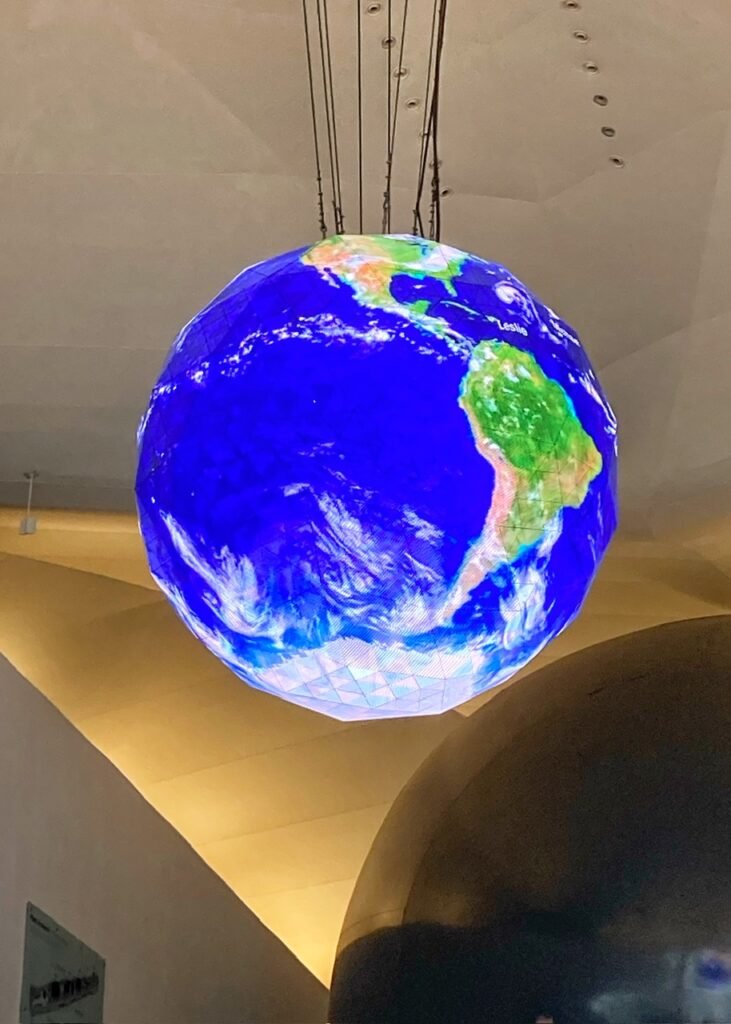
We inhabit a planet that is being deeply affected by our actions and the Museum of Tomorrow is a very different kind of science museum that needs to exist. It is an environment of ideas, explorations and questions about the time of great change in which we live and the different paths that lead to the future. Because we live in a new epoch in which all human activity has become a force of global impact, we are also capable of intervening.


It was good to see that it was slam-packed to be honest, especially with kids. They are the ones who will inherit this disaster we’ve created and need to be educated aggressively and early. It has some heavily visual images and presentation which don’t sugarcoat what’s happening, including the alarming increase of people on this planet overall.
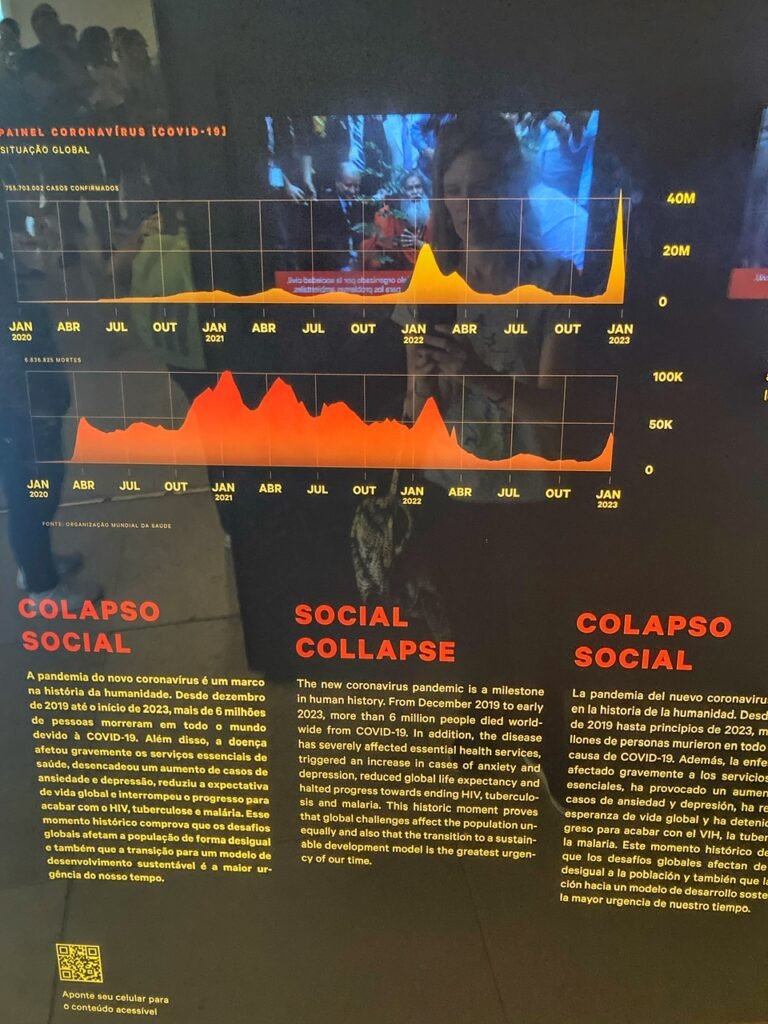
Interestingly, it had the first exhibit we’ve seen on COVID-19 and the major impacts on humanity worldwide.

It also discussed the challenges of media and social media in the image of the world we perceive.
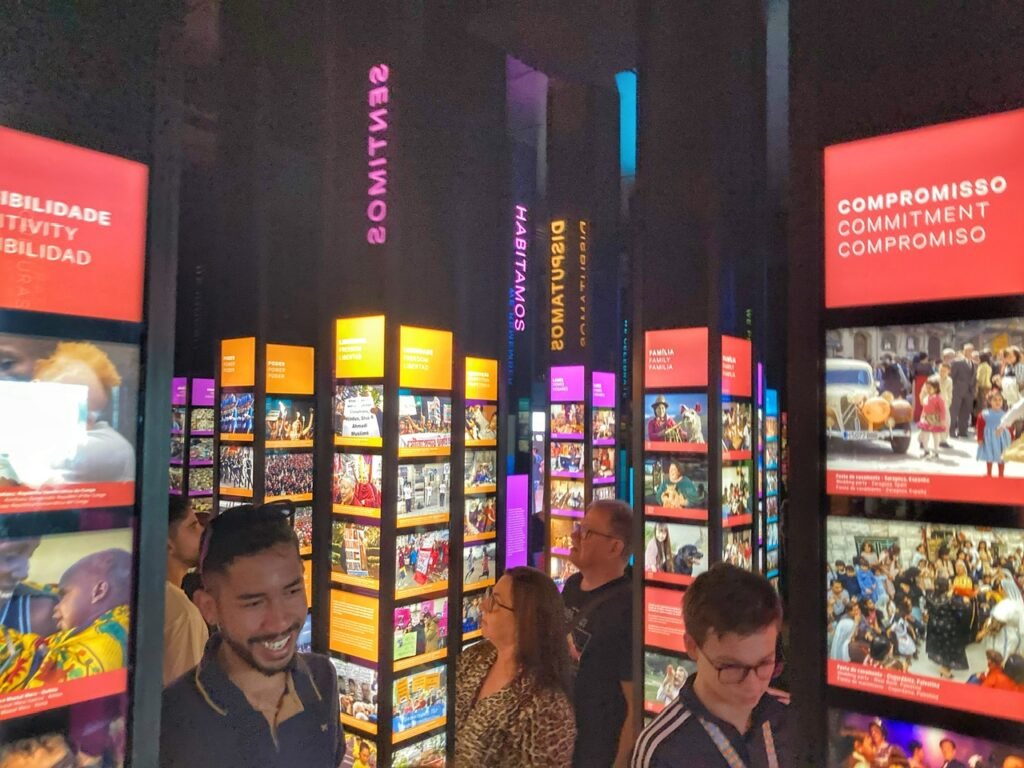
But it wasn’t all negative. We loved the room which celebrated how we’re more alike than different through a striking (but very crowded!!) photography exhibit.
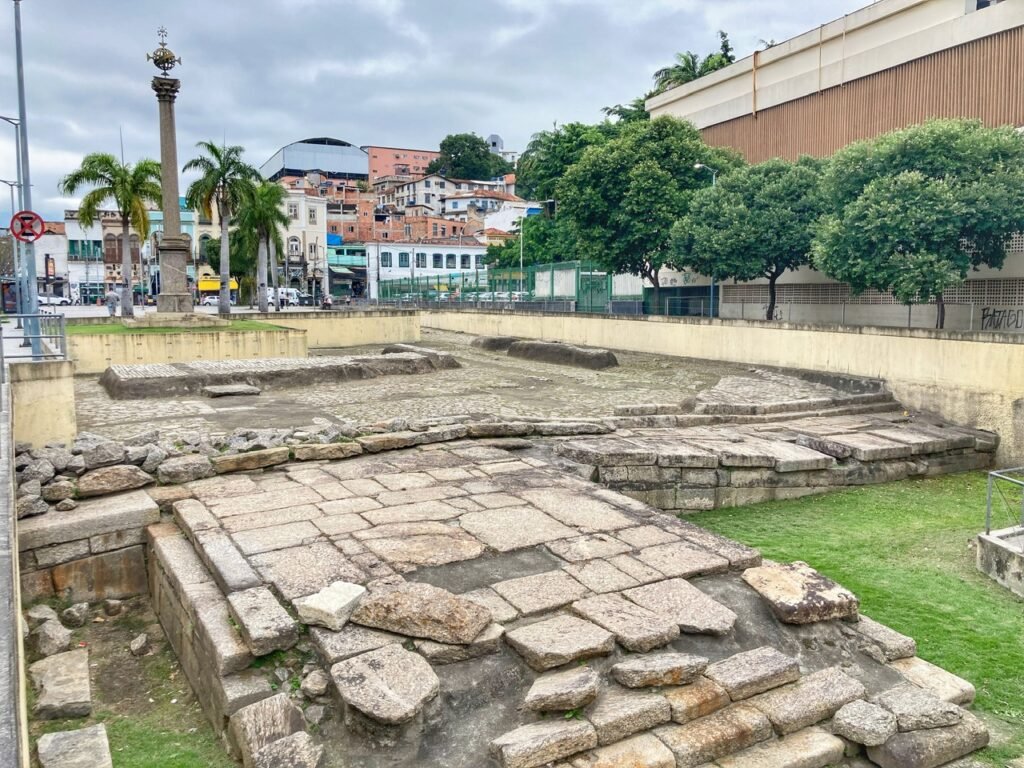

The Valongo Wharf, or Cais do Valongo, is another important site in Brazilian African history. Built in 1811, it was the site of landing and trading of enslaved Africans until 1831 with the blockade of Africa banning the Atlantic slave trade to Brazil. However, but clandestine trade continued until 1888. The chain rings are still present on the platform.

Across the street from Valongo is Hotel Barao de Tefe, which looked like a crumbling shell of an administrative building for the former slave trade site. We were astounded to find out it’s still in business, albeit with a “Poor” 2.0 rating on Trip Advisor. But you can get a bargain room for around $18. I wonder if this is where people think we sleep being “budget” travelers?? 🤣🤔

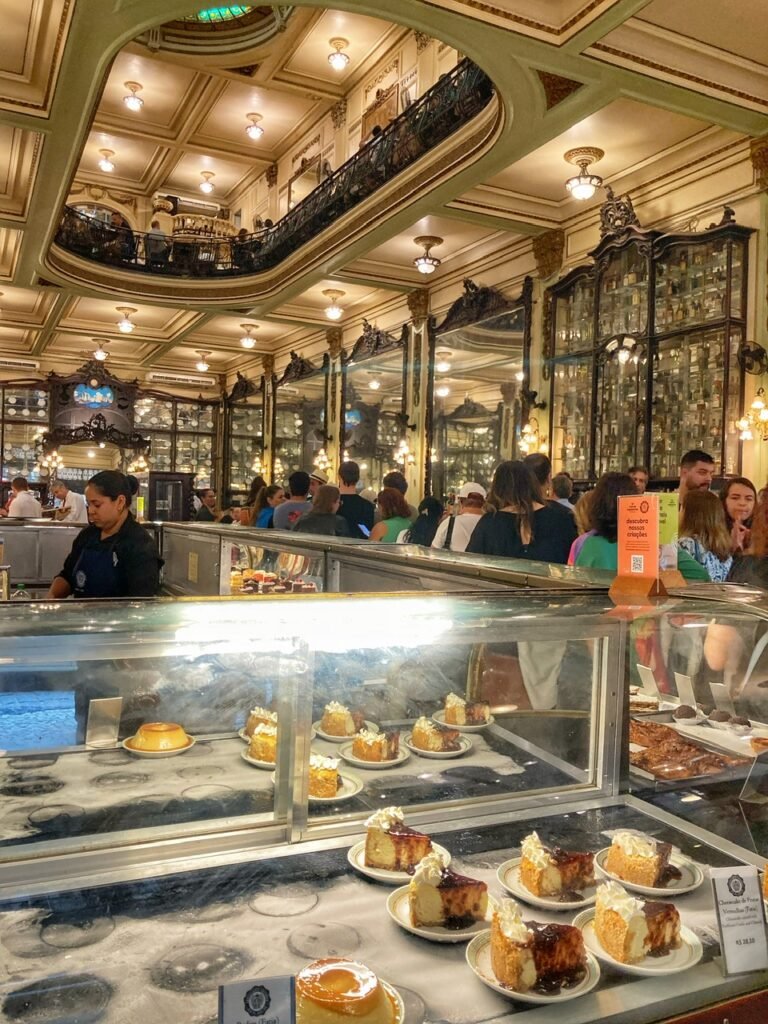

Another historic entity is far from crumbling, however. The Confeitaria Colombo, an upscale century-old pastry shop where these budget travelers were not gonna drop 40 rieles ($8+) on a dessert.
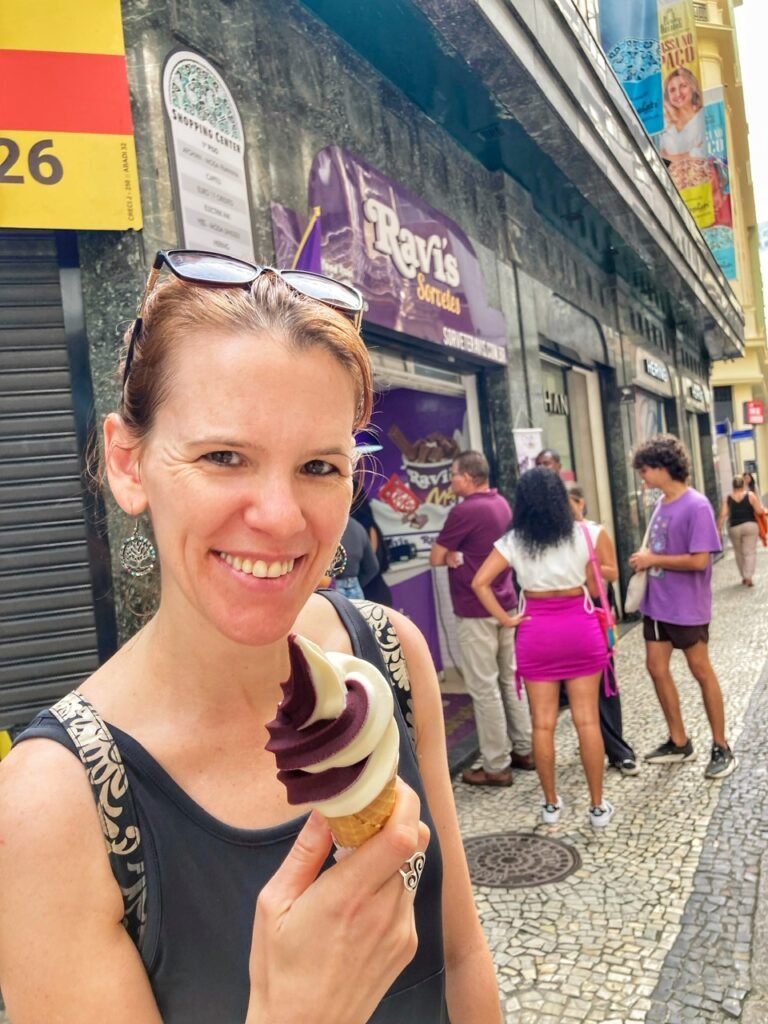
Instead, we settled for a delicious açaí cone ($.63) down the street, which we’ve discovered is even tastier when mixed with vanilla than by itself.
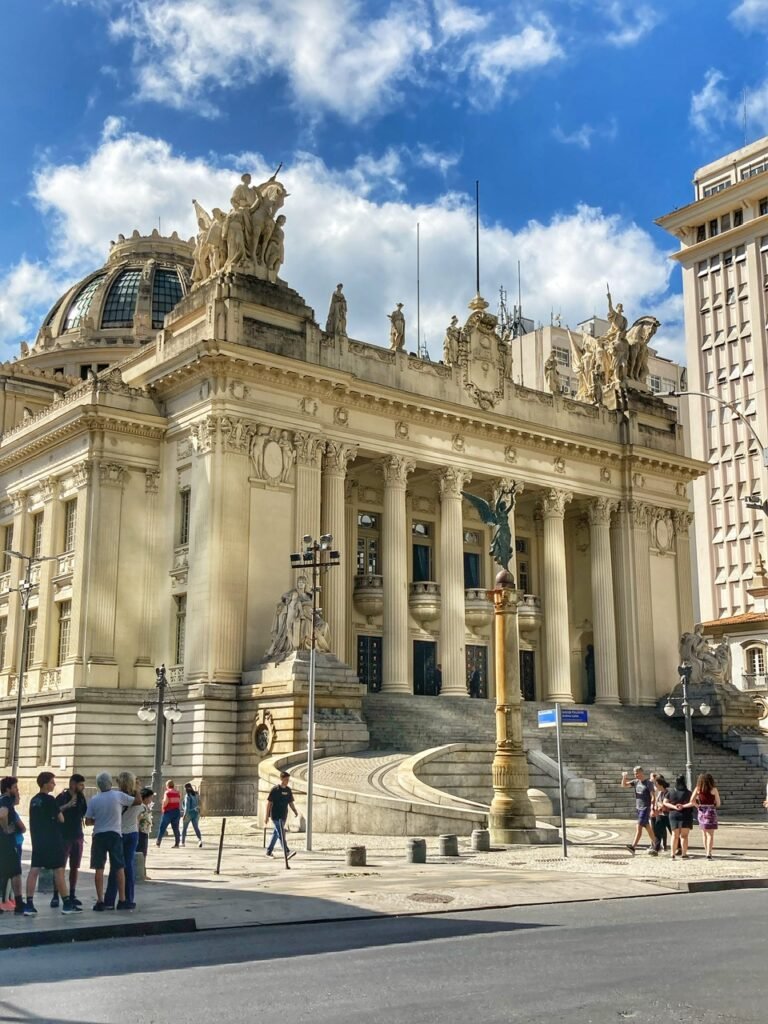

The Palacio Tiradentes was inaugurated May 1926. It replaced a building that had been there since the 1600s and represents the power of Brazil as an independent nation. It was also the seat of the National Congress, before Brasília became the country’s capital. Today it houses the Legislative Assembly of Rio de Janiero. The majestic French neoclassical style entrance with its six huge columns give it an imposing appearance to its central facade.


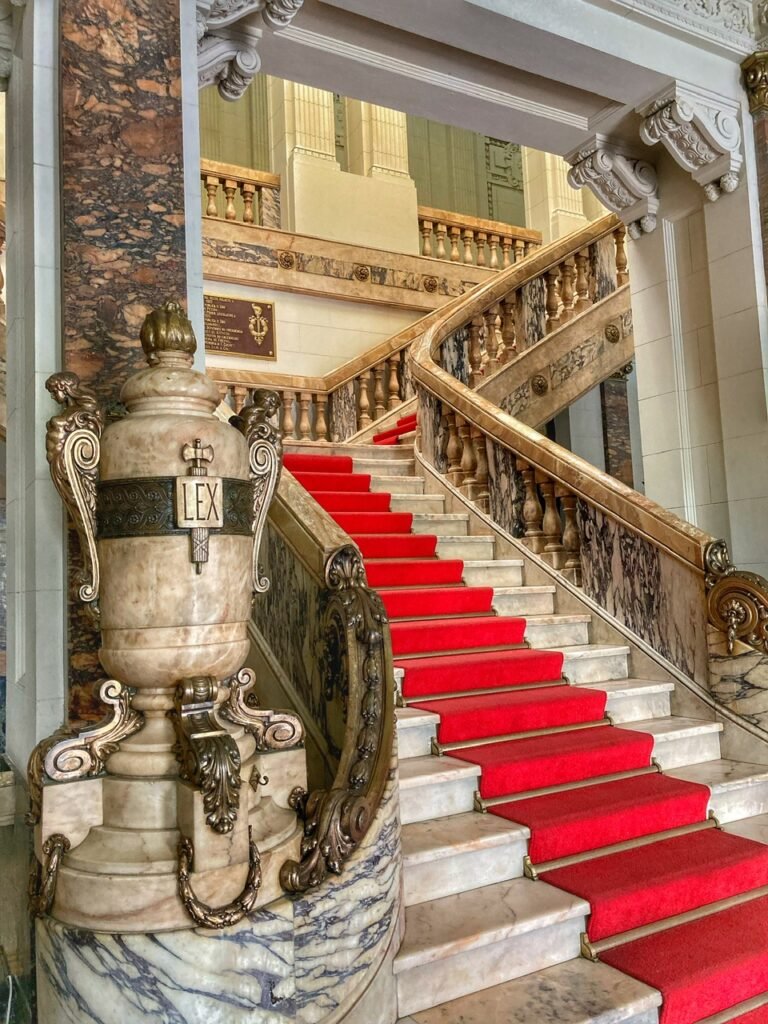
Tours are free with English available so we decided to take advantage of the opportunity to see the gorgeous interior. Are we back in France?!

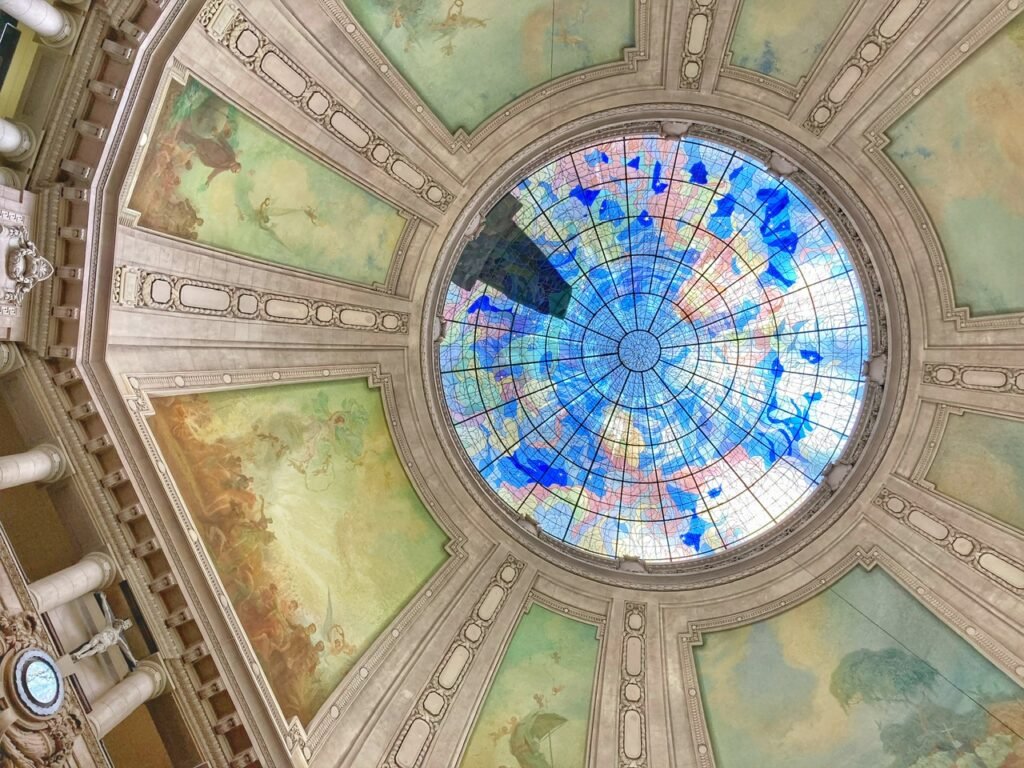
The celestial central dome within the Legislative Assembly is covered by a glass panel that represents the sky of Brazil on the morning of November 15, 1889, the day of the proclamation of the Republic. It is surrounded by paintings that indicate the history of Brazil.

After all this, we’d worked up quite an appetite so we found an affordable restaurant on Rua do Rosario, which is packed with such options. We paid 17.99 rieles each($3.75) for an all-you-can-fit-on-your-plate pile, which certainly served as a Linner.

We also checked out the Museum of National History to learn about four hundred years of Brazil. It was interesting to learn of the parallels with the US, particularly in regards to slavery, colonialism, and ivory trade…
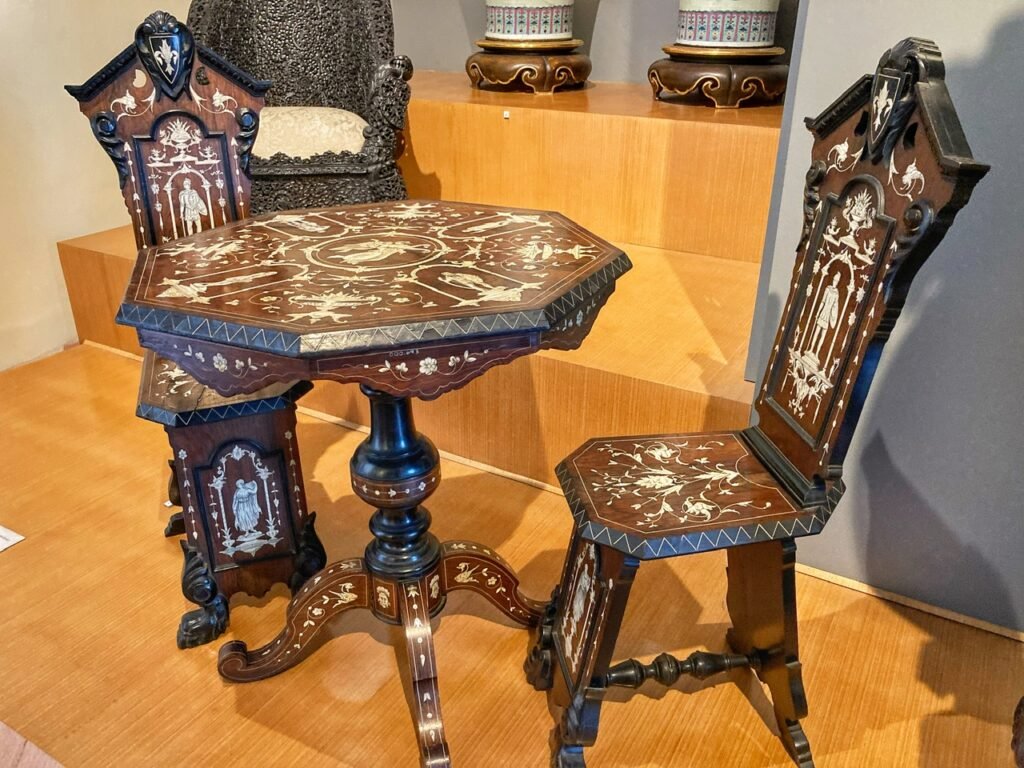

Couldn’t believe this table made of ivory inlay, for example.


The central courtyard of the museum. Wow! What a work of art.
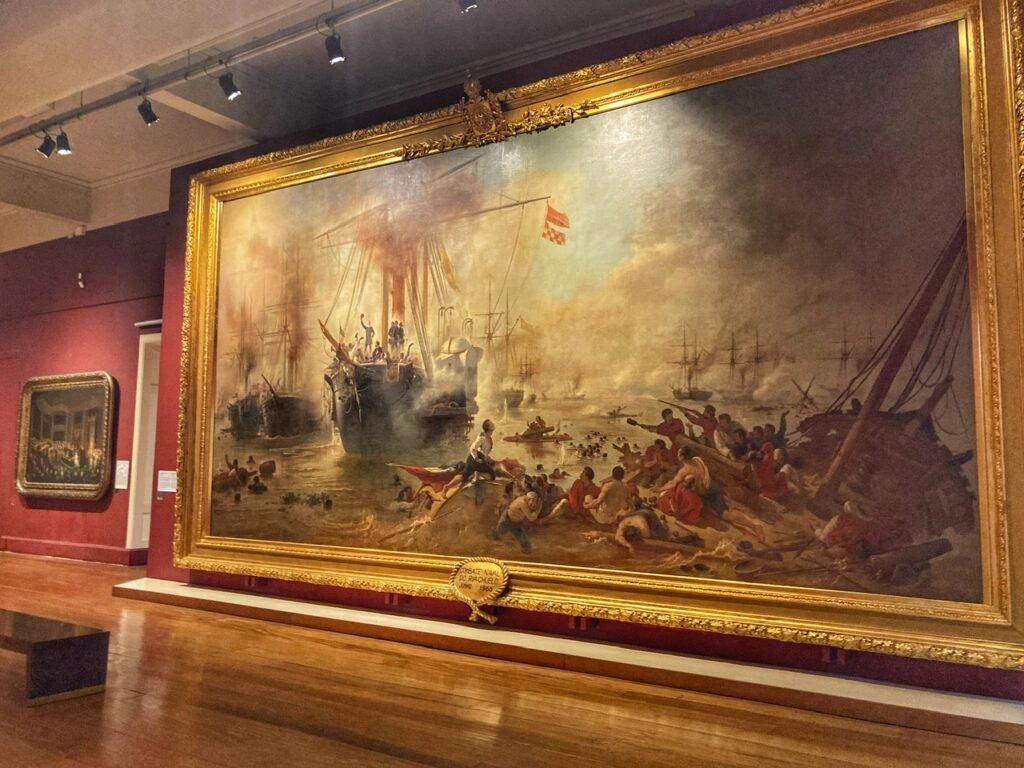
The museum also had colossal paintings. This particular painting depicts the battler fought on 11 June 1865, between the squadrons of Paraguay and Brazil, one of the key episodes of the War of the Triple Alliance.
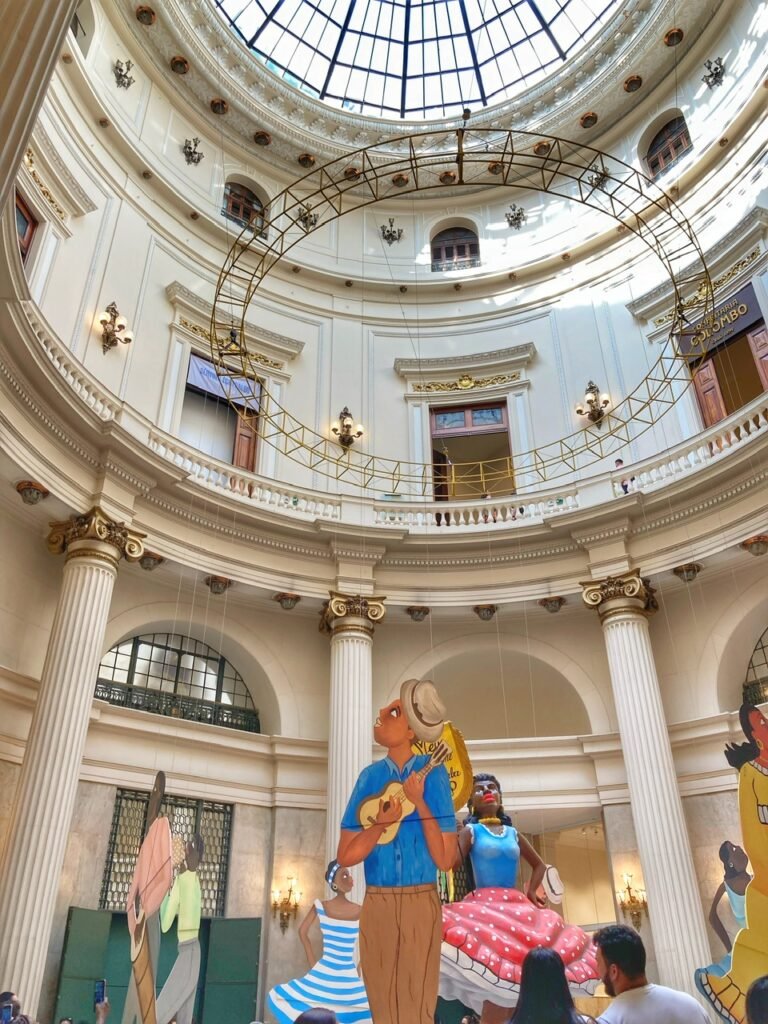
The Central Cultural Banco do Brasil is a lovely building known for cultural events and expositions.
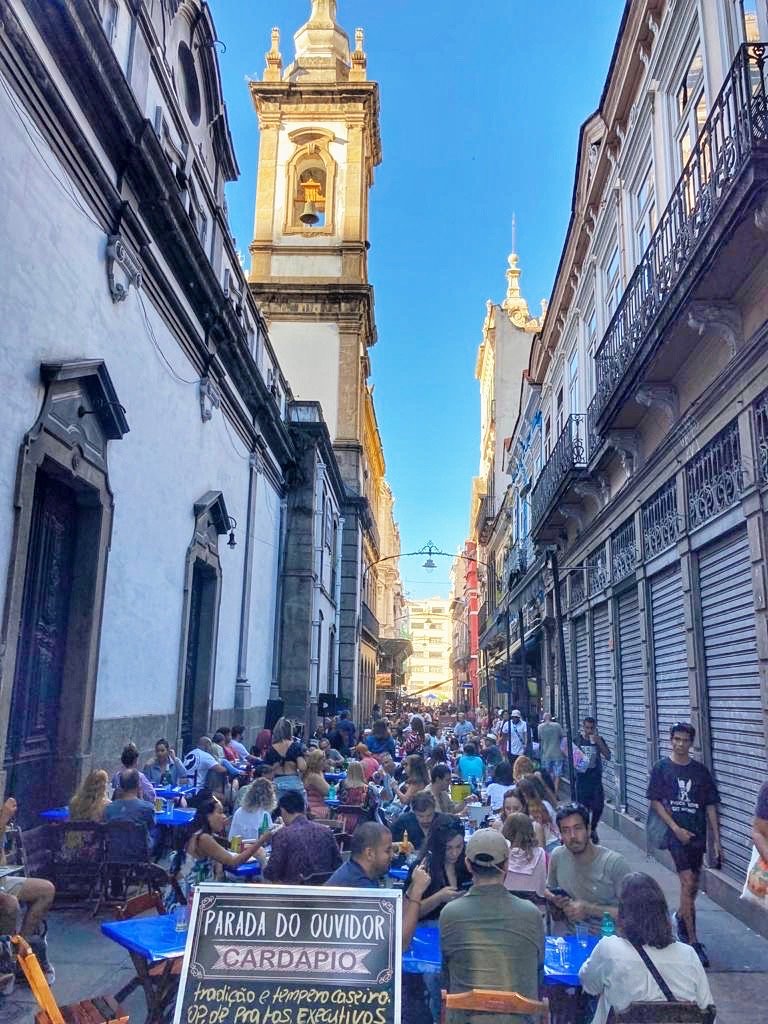
On Saturdays, we discovered Rua do Ovidor is jammed with people, live music, dancing and energy. Well worth a visit!! There is sooo much to do and see in this city! And for cheap or free if you so desire!
Portuguese Reading Room

We are not Harry Potter people. Nor will we ever be Harry Potter people. But this place looks like it tumbled straight out of a Harry Potter movie. A book lover’s fantasy, this gothic-renaissance-style library opened in 1837 to bring centuries of Portuguese literature to the newly independent nation of Brazil. It’s by far the most exquisite library we’ve ever seen and unlike some others of its caliber…it’s FREE!



It showcases a collection of 400,000 books, ranging from unique and rare manuscripts, to national and foreign books and the largest collection of Portuguese literature outside of Portugal.

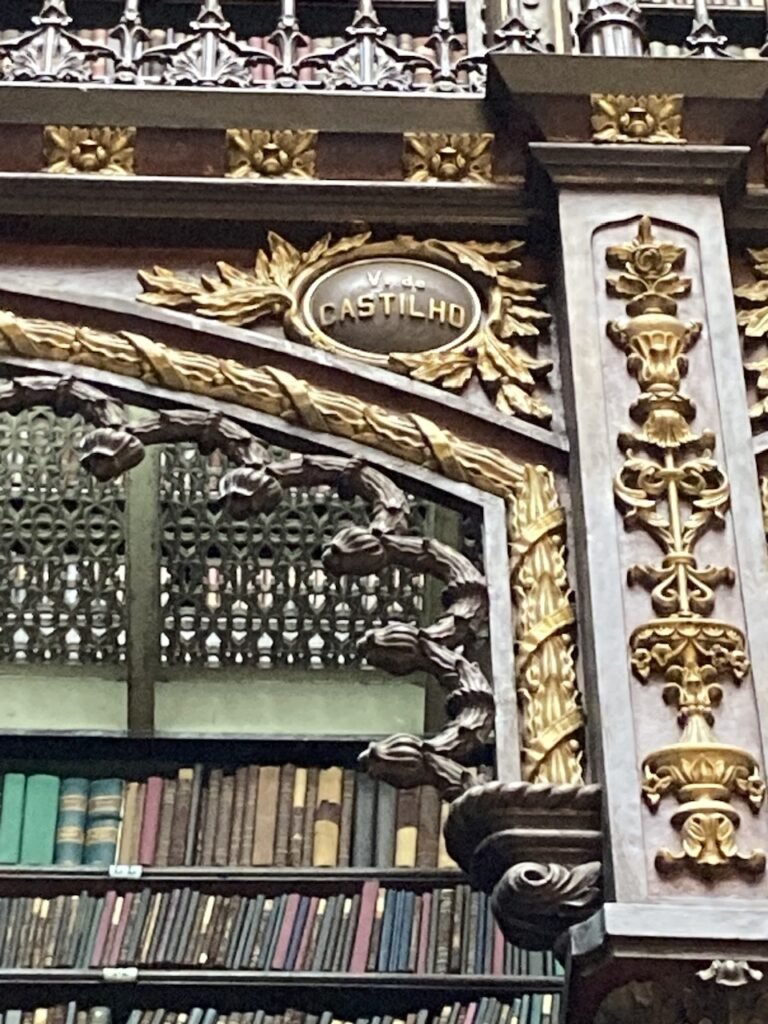



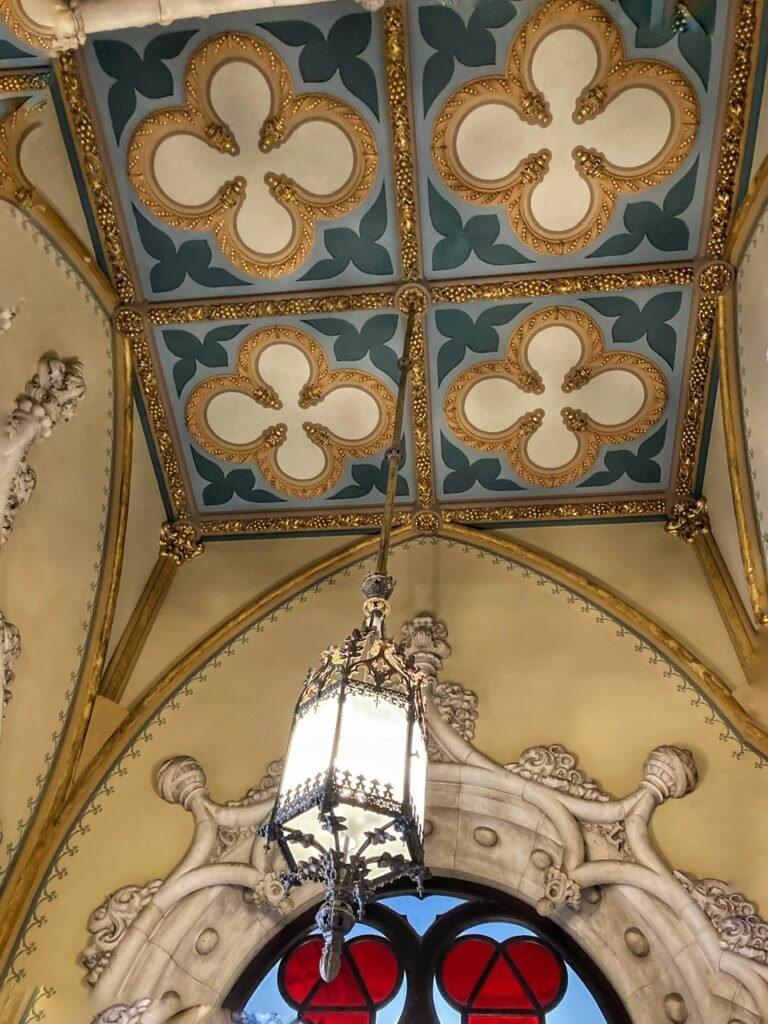
The collection continues to grow each year, with 6,000 new titles added to the Reading Room. Remarkably the library is open and free for anyone to visit to work, research, read, or just stare at the beauty of the building’s details. Only rule? Always ask the librarian before you touch or open any of the books. (History in Memes .com)
Getting Around in Rio de Janiero

We have to admit, getting around in Rio was pretty great! When we’re not walking around Copacabana or Ipanema, it was very easy to take the Metro or bus, which is wonderfully accessible by your tapping your credit card only for about $.80-$1.50/ride, depending on the type of transportation.

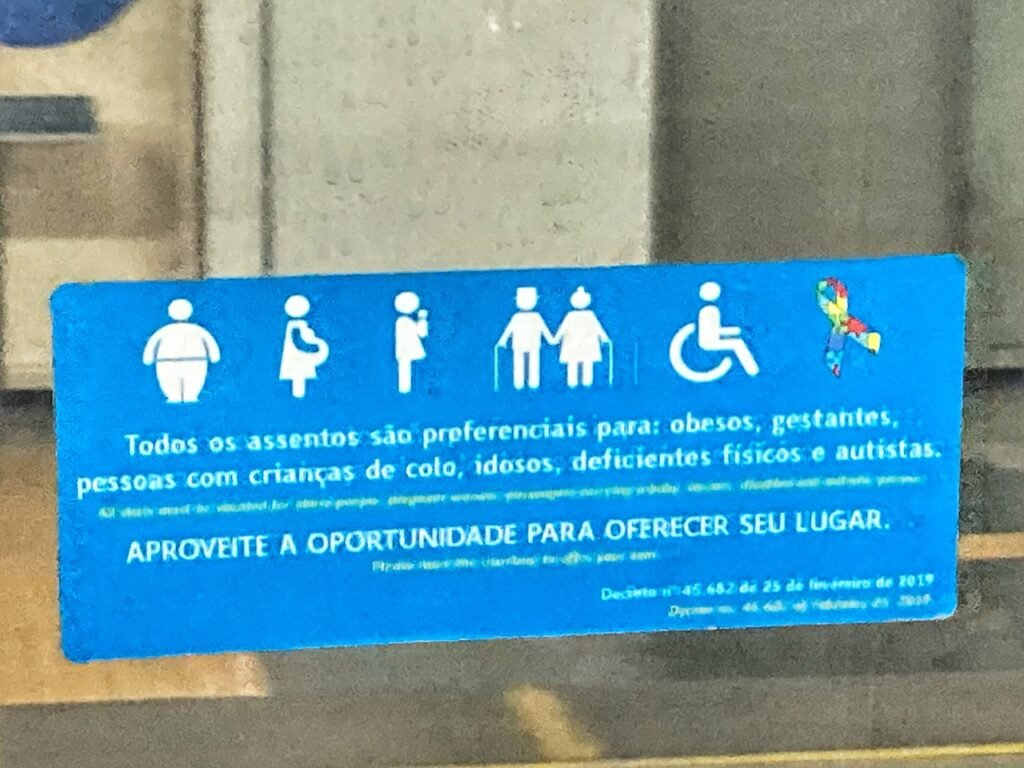
We have also felt very safe on the metros. Note to the ladies: like many cities, they offer a car exclusively for you designated by the pink line. Another interesting note about inclusivity….In Rio it states that you should move for pregnant women, people with children, the elderly and those with disabilities. This is pretty standard most places we’ve been. It also adds obese people and those who are autistic to this category. How interesting.
If you prefer, Ubers/taxis are reasonable and cost about $3-7 per ride. You can save more if you download the taxi app, 99, which we could only figure out how to work by paying cash.
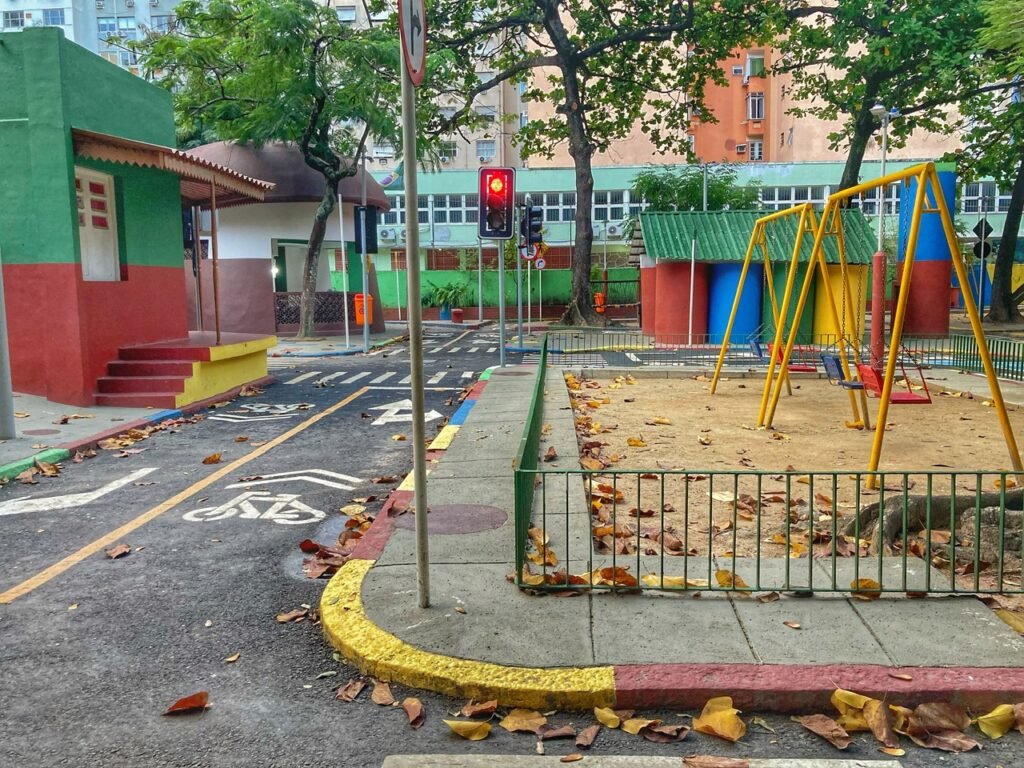
Also, rental bikes are available throughout the city, as well as paths exclusively for biking. They even have adorable parks dedicated to learning how to ride a bike on city streets. How incredibly brilliant. We had never seen this before!

